

Sign Up Today
Start your 14 day free trial today

The History Hit Miscellany of Facts, Figures and Fascinating Finds
5 Historic Sites in North Macedonia
Known as the republic of macedonia until 2019, north macedonia's ancient history and multifaceted culture is home to a number of interesting historic sites..

Lucy Davidson
24 sep 2021, @lucejuiceluce.
With its earliest signs of human occupation dating to the Palaeolithic era, North Macedonia is home to a number of varied historic sites. The Persian Achaemenid Empire, Byzantine Empire, and Romans are just a few of the groups who have occupied the land, and have left their architectural and cultural imprint upon it as a result. Ruined palaces, baths, streets, and temples are just a few of the sites which are a draw for any history enthusiast. Here’s our pick of 5 sites which are well worth a look.

1. Heraklea Linkestis
Heraklea Linkestis is believed to have been founded by King Philip II of Macedon in around the fourth century BC, before being conquered by the Romans in approximately the second century BC.
Well-preserved remains of this once thriving settlement can now be seen at the site, including a theatre and baths as well as a Jewish temple and a church. One of the most celebrated aspects of Heraklea Linkestis is its series of vivid mosaics.

Stobi is one of Macedonia’s most famous archaeological sites. Once the capital of the kingdom of Paeonia, Stobi was located along a busy trade route and thrived as a commercial hub specialising in the trade of salt. Stobi reached its peak in the third or fourth century AD.
Today, the archaeological site of Stobi houses a wealth of ancient ruins, including the remains of palaces, baths, streets, temples and a second century AD theatre. Most of the ruins date back to the third century AD, although some, like the theatre, were built earlier. There are also several well-preserved vivid mosaics throughout the site as well as remnants of early Christianity, such as numerous basilicas.

3. The Skopje Aqueduct
The Skopje Aqueduct is a well preserved stone aqueduct located north of the Macedonian city of Skopje.
A large stone structure made up of fifty-five archways, the origins of Skopje Aqueduct are unclear. Whilst it is known to have existed as far back as Ottoman times, some say that it was built by the ancient Romans.

4. Tumba Madzari
Tumba Madzari is a Neolithic settlement in the north-eastern region of Skopje, in Macedonia. It is most notable for the Pre-Indo-European Great Mother statuettes which provide the proof of existence of the Cult of the Great Mother Goddess.
After several archaeological excavations on the site, a range of artefacts were discovered which indicate that ancient peoples inhabited Tumba Madzari between 6000 – 4300 BC.

5. Monastery of Saint Naum
Located 29 kilometers south of Ohrid and overlooking lake Ohrid on a plateau close to the Albanian border, the Monastery of Saint Naum is by far one of North Macedonia’s most scenic tourist attractions, and is emblematic of the area’s sites harmoniously complimenting the surrounding scenery.
The original monastery was built on the same site in 905 by Saint Naum of Ohrid, who is buried inside. Taken down between the 11th and 13th centuries, the monastery visible today was rebuilt in the 16th century as the multi-domed byzantine structure which is so popular among locals and tourists alike.

Home » Travel Guides » Macedonia » 15 Best Places to Visit in Macedonia
15 Best Places to Visit in Macedonia
Although it’s easily accessible and comes complete with all the comforts of the Western world, the Republic of Macedonia is Europe’s best hidden treasure. The county is part Balkan, part Mediterranean and has been heavily influenced by Roman, Greek, Albanian, and Ottoman culture. It’s a stunning natural paradise with grand historic sites and ruins tucked into idyllic villages that haven’t seemed to change in centuries.
The surprising part is that you get all that, plus fully modern cities and luxuries right at your finger tips. It doesn’t seem that you could fit all that into one country, and maybe it’s because of its size that it gets overlooked. Macedonia is a wonderful representation of the Balkans with a wide variety of influences and ethnicities, modern cities and beautiful countryside, where life moves at its own unique pace. Let’s have a look at the best places to visit in Macedonia !

Skopje is most definitely Europe’s most eclectic capital city. Efforts have been made, rather successfully, to bring infuse new culture in the form of museums, fountains, bridges, and statuary throughout the city. The result is something grand that has come to symbolize a new national identity for all Macedonians.
The history still remains in places like Kameni Most (Stone Bridge), Sveti Spas Church, Tvrdina Kale Fortress, and the old Turkish bazaar Caršija. Be sure to check out the giant statue of Alexander the Great, commissioned to celebrate Macedonia’s 20th year of independence. The shopping and nightlife in Skopje are also something to experience – if this is what you’re looking for, head straight to Makedonija Street.

Bitola is an old Ottoman town once known as the “City of Consuls” because it served as a diplomatic centre for the region. Elegant and sophisticated are the best worlds to describe it. You’ll see colourful townhouses from the 18th century and Turkish mosques throughout.
The not-to-be missed and certainly often repeated experience is to sit along the Širok Sokak (Wide Street), sipping espresso, and watching everyone come and go. Bitola is the second largest city and is a favourite among Macedonians for its café culture and European atmosphere. Discover the Deboj Amam Turkish Bath (17th century), the Old Bazaar, Jeni Mosque, and Isak Beg Mosque (both 16th century).

Prilep is famous for a few unique things. First, agriculturally speaking, it’s Macedonia’s tobacco capital. Second, became known as “the city under Marko’s towers,” from when it was the medieval capital for Kings Marko and Volkasin – who populated the town with churches and monasteries.
Located in Western Macedonia Prilep has a distinctive landscape of huge rocks sparsely scattered at the base of a small hill. At the top of the hill are the ruins of a medieval fortress. The locals have a distinct flavour as well – which you can see in their humour and their dedication to preserving their traditions.

Though it only has 10,000 citizens, Kruševo was once its own republic. Macedonians equate the town with the centuries-long struggle to win independence from the Ottoman Empire. During the last revolution, as it looked like Macedonia might be successful, Kruševo experienced ten days of freedom before a massive Ottoman army burned the town and martyred national heroes like Pitu Guli and Nikola Karev, who led the revolution.
You can visit Mechkin Kaman and Makedonim, two monuments built to commemorate the uprising. As you explore the town you’ll learn the many reasons why August 2 is an important date throughout the country and such an intense point of pride. Nestled in the Baba Mountains, Kruševo features incredible architecture and several monasteries and churches worth visiting.
5. National Park Mavrovo

The perfect place for skiing, National Park Mavrovo is Macedonia’s biggest winter resort, covering over 730 sq km of forests, gorges, waterfalls, and karst fields. You can also see the country’s highest peak, Mt Korab, which stands at 2764m. No matter what time of year you visit, the high-altitude fresh air and the staggering vistas are more than worth the trip.
Nature lovers can wander among the diverse fauna and flora and take a hike around Mavrovo Lake. Galichnik and Janche are two quaint villages nearby, as is St. Jovan Bigorski Monastery.
6. Pelister National Park

The oldest of the three great national parks is Pelister, located in western Macedonia near Bitola. With nearby Mount Pelister (2600m), and eight other peaks that top 2000m, the vistas are a magnificent natural escape from daily life. The park is home to the five-needle pine molica – found on only a few mountains in the Balkan Peninsula – something all nature enthusiasts will love to see. There’s also roe deer, wolves, bears, chamois, eagles, partridges, and red billed jackdaws.
Pelister also has two wonderful mountain lakes, which the locals call Pelisterski Oci or Pelister’s Eyes, that offer great hiking opportunities like the Stone River – crushed rocks that form a path heading up the mountain slopes.

One of the most important archaeological sites in the country is found in Stobi. First founded in the 7th century by the King of Paeonia, the city changed hands several times, from the Macedonians, to the Romans and Byzantines.
Strategically located along an old Roman trading route, Stobi quickly became a hub for traders travelling from the Danube in Serbia to the Aegean Sea in Greece. The dig site is open every day and the town itself is just an hour drive from Skopje.
8. Gevgelija

Most likely the top tourist spot in all of Macedonia, sunny Gevgelija has a reputation for fun and big times. It’s called the “Macedonian Las Vegas” because of the casinos, five star hotels, nightclubs, galleries, and concert venues. There are lots of opportunities for exclusive entertainment here but the fun is meant for all.
If you need to step away from the black jack table or the buffet, Gevgelija offers Smrdliva Voda, a spa with sulphur baths and over 400 villas to choose from. Nature is also on full display here with a sublime climate and a pine and deciduous forest, there is a rich biodiversity here that makes the region special for all of India.
9. Povardarie

There are well over 24,000 hectares of vineyards in Macedonia, as well as an incredible 2000 year history of viticulture. Deep in the fertile Vardar River Valley lies Povardarie, whose wines are well known throughout the world. The most popular varieties are Vranec and Smederevka – so be sure to sample them when you visit.
In Povardarie there are three wineries that you must discover for yourself: Winery Tikves, Stobi Winery, and Popova Kula. Popova Kula Winery is regularly ranked at the finest winery in the country. They produce over 20 wines and offer cooking lessons, accommodation, and folklore shows.
10. Strumica

Strumica lies in Eastern Macedonia with a number of great attractions worth exploring. Enjoy hiking on Mt Belasica or head out to Smolare and Kolesino, two nearby waterfalls.
There are also some stunning monasteries, including tranquil Veljusa and Vodoca. Both are Byzantine and still occupied by both monks and nuns. Be sure to check out the incredible frescos at both. From there, head to St. Bogorodica Eleusa, built in the 11th century, the healing spa of the Roman Therma, as well as St Leontuis.

The largest town on Lake Ohrid, and a UNESCO World Heritage Site, Ohrid has a remarkable history and heritage to share. At the top of the list are the frescoes inside Saint Sophia Church, the Ancient Theatre, St. Clement Church (13th century), and Tsar Samuel’s fortress – which has an unbelievable view over the city and lake.
The surrounding mountains reach upwards of 2800m, which means that Ohrid is not only culturally significant, but naturally breath-taking. It’s no stretch at all to say that Ohrid showcases the best of Macedonia. It’s a good idea to use the town as base camp to explore the lake as well as its many surrounding towns and monasteries. Just 30km away is St. Naum’s, one of the richest and oldest monasteries in the country.

A visit to Struga makes a great day trip from Ohrid. Nicknamed the “City of Poetry,” the town is relaxing and beautiful to stroll through. The national anthem, “Denes nad Makedonija se raga,” was written by Vlado Maleski, a poet born in Struga. In fact, the first time the anthem was publically sung was in the town itself.
You’ll enjoy the lively market at the Old Bazaar, St. George Church, the Halveti Teke, and a walk down Goce Delcev Street where you can see some well-preserved traditional houses.
13. The Monastery of St. Naum

A 30 minute drive from Ohrid will take you to Sveti Naum, an impressive 10th century monastery which sits on a high outcropping over the lake. Most popular for its excellent frescos, it’s also a relaxing and rejuvenating place. Some of the best religious paintings in all of the Balkans can be found here.
You’ll love the panoramic views of the lake and if you have time, the rowboat tour down the Drim River is highly recommended. Wrap up the day by popping over to one of the islands for dinner. Because it encompasses so much of what is phenomenal about Macedonia, this is the perfect place to end your tour.
14. Tikves Lake

Built in 1968, Tikves Lake is both the largest and oldest man-made lake in the country. It’s close to Kavadarci and makes the perfect Sunday afternoon family picnic spot. Scuba diving, sailing, kayaking, and canoeing are all on offer – plus you can paraglide or mountain bike in the summer and ski and snow board in the winter.
If you like fishing, spend a morning trying to land the sheat-fish, which can grow to be over two metres long. The valley itself is so fertile that many orchards and vineyards dot the landscape.
15. Kumanovo

Outside of Skopje is Kumanovo. It’s one of the larger cities in the country and has a fantastic blend of Macedonian and Serbian culture. The Kumanovci are a feisty group and the town and outlying villages highlight the colourful multi-ethnic blend of Roman, Serbian, Albanian, and Turkish minorities.
Check out Kostoperka Karpa, a unique rock formation, the Church of St George, the monument to Batko Gjorgjija – a local , legendary, and much loved bohemian.
15 Best Places to Visit in Macedonia:
- National Park Mavrovo
- Pelister National Park
- The Monastery of St. Naum
- Tikves Lake
- South Africa
- El Salvador
- Bosnia and Herzegovina
- North Macedonia
- Czech Republic
- Transnistria
- Liechtenstein
- North Cyprus
- New Zealand
- Map with posts
- Alternative Guides
- Architecture Guides
- Cafe Guides
- Itineraries
- Neighborhood Guides
- Travel Guides
- Travel Tips
- Photo Galleries
- Photo Locations
- Solo female travel
- Train Travels
- Work with me
- Privacy Policy
19 Amazing Places to Visit in North Macedonia
North Macedonia is one of the most underrated countries in the Balkans, often overlooked by tourists exploring the region. And even if they decide to visit Macedonia, it’s often just Lake Ohrid and Skopje. But there are so many more great places to visit in Macedonia: breathtaking mountains, charming towns, ancient sites, interesting architecture, and more.

I’ve been visiting Macedonia frequently for some 10 years now and it quickly became one of my favorite countries to travel to. There always seem to be new places to discover and returning to the old ones is always a pleasure. Add to that delicious food, friendly locals, and affordable prices and you will see why I enjoy North Macedonia so much.
But creating this list of best places to visit in North Macedonia made me realize that there are still some awesome destinations there that I need to see (and need a car to get to as not everything is reachable by public transport, unfortunately). That’s the plan for the near future, though!
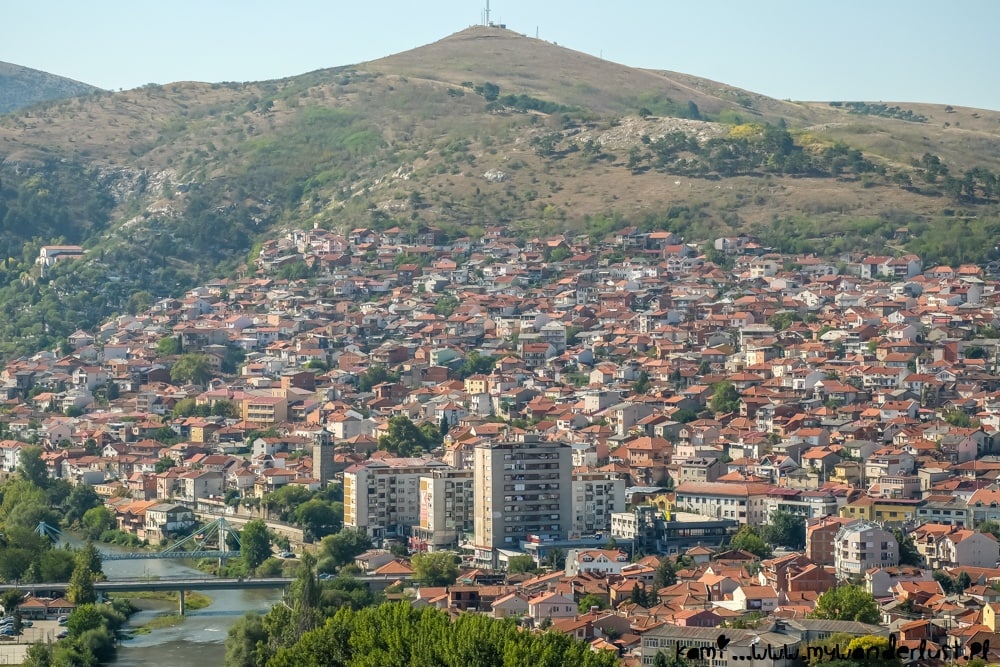
When you decide to visit North Macedonia be sure to include more than just the popular destinations in your itinerary. Below you can find the list of what to see in Macedonia that can hopefully serve as the inspiration for your trip.
Planning a trip to North Macedonia?
Here are the services I always use and personally recommend:
- Accommodation : I always book a place to stay on Booking.com
- Tours: when I decide to go on a tour I use either Viator or Get Your Guide .
- For transportation and booking tickets online , I usually use 12Go or Omio
- If you plan to rent a car during your trip to North Macedonia check Discover Cars to compare prices and find the best deals
- Get insured for your trip to North Macedonia with SafetyWing
Table of Contents
Best places to visit in North Macedonia
Skopje, the capital of North Macedonia, is one of the quirkiest cities you will ever see. At first, it might seem pretty random, with blocks of flats covering the center, but once you dig a bit deeper into the place you are in for a treat.
You won’t find many historical sights there as the city was largely destroyed by the 1963 earthquake but Skopje is such a weird combination of architectural styles that they somehow fit together.
The central part of the city is lined with modern buildings that try to resemble ancient ones and with countless statues (some of them portray well-known historical figures, others are just random scenes). The most important one is “the warrior on the horse” located in the middle of the main square of the city – Macedonia Square. Not only it is very impressive with its 12-meter height, but it is also a very controversial statue that in fact shows Alexander the Great.
Across the Vardar river, you can explore the oldest part of Skopje – the bazaar with the maze of narrow streets and the fortress towering above the area. Wandering around there is like stepping back in time.
If you enjoy brutalist architecture (I do!), Skopje is like a huge playground with so many concrete masterpieces around.
For a quick escape from the hustle and bustle of the city, you can head to the nearby Vodno mountain from where you can go hiking or simply enjoy the stunning panorama of Skopje and its surroundings.
Read more about Skopje in my articles:
- What to do in Skopje, the kitschy yet cool capital of North Macedonia
- Guide to Skopje Brutalist Architecture
- Alternative Skopje
- North Macedonia: Skopje monuments in pictures

Matka Canyon
Only a short ride away from Skopje you will find one of the most beautiful places to visit in Macedonia – Marka Canyon. This spectacular place was actually not made by nature. In 1938 the dam was built on river Treska, creating an artificial lake surrounded by high mountains, the oldest lake of that kind in North Macedonia.
The Matka Canyon covers an area of around 5,000 hectares. 20% of the plant species you can see here are endemic, meaning they can’t be found anywhere else. You can also see 77 kinds of butterflies in the area! There are also ten caves at Matka Canyon, the most popular one being Vrelo Cave. It was even included on the list of the top 77 natural sites of the world in the New 7 Wonders of the World project.
When visiting Matka Canyon you can do here numerous activities, like hiking, fishing, or kayaking. You can also find some old monasteries in the area. But the main reason to visit Matka Canyon is to simply see what a stunning place it is.
You can get to Matka Canyon from Skopje by bus or join one of the tours that visit this place.
Read more about Matka Canyon in my article: Matka Canyon – a perfect nature getaway outside Skopje
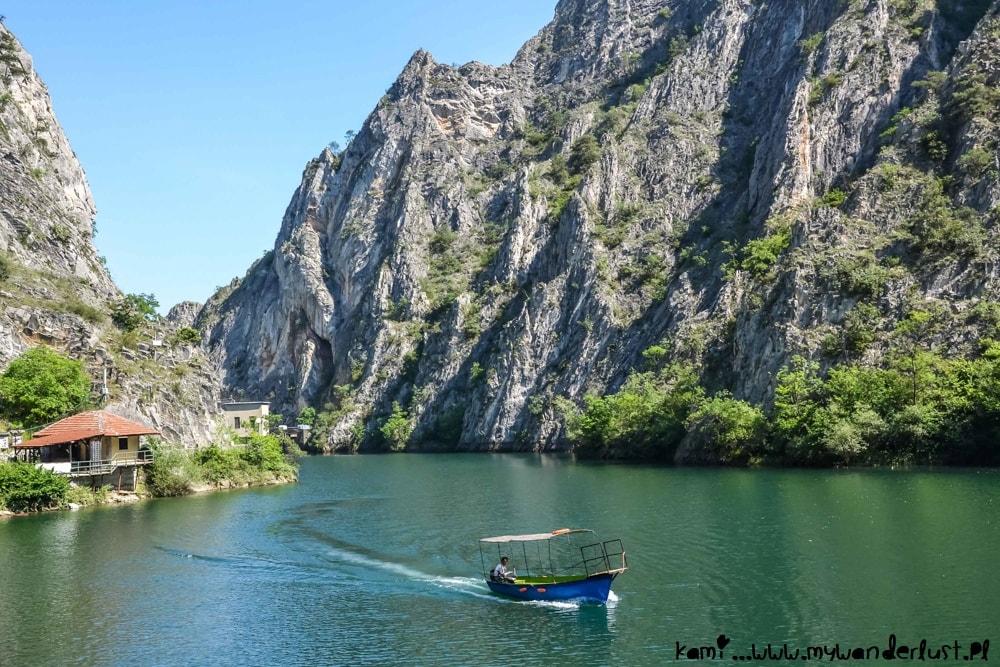
Tetovo is one of the most underrated places to visit in North Macedonia. Even if it’s conveniently located only 45 km away from Skopje, on the way to Lake Ohrid, not many tourists decide to stop there. Huge mistake as Tetovo hides one of the most stunning buildings you can see in North Macedonia – the Painted Mosque.
It was built in 1438 and later rebuilt in 1833. Even if the mosque is rather small, it surely is stunning with very rich decorations (unlike many other mosques, the dominant motifs are floral and bright). This is also the only mosque in southeast Europe where you will find the illustration of Mecca – the holy place of the Islamic world.
While the Painted Mosque is amazing there are actually more things to do in Tetovo: the 16th-century Turkish hammam turned into a gallery, Arabati Baba Tekḱe – a spiritual complex popular in Sufism religion, founded in the 16th century, or a few great brutalist buildings. Tetovo also offers some beautiful views of the surrounding Sar Mountains.
Read more about Tetovo in my article: Tetovo, North Macedonia – Stunning Painted Mosque and More

- Are you planning a trip to North Macedonia? Be sure to join my Facebook group about traveling in the Balkans and be part of the amazing community of like-minded travelers. Click here for the access!
- Don’t want to miss new articles? Sign up to the monthly newsletter to receive all the updates to your mailbox!
Lake Ohrid is, hands down, the most amazing place to visit in Macedonia and one of the best in the Balkans. Every time I’m there my jaw drops at how stunning this area is. Whether you are looking for cultural, relaxing, or active holidays – Lake Ohrid falls into all of these categories.
The main town at the lake is Ohrid where you will find most of the attractions and monuments. The best way to get to know Ohrid is to simply wander around the Old Town and stumble across all it has to offer: numerous churches (it is said that in the past there were 365 churches in town), the 10th-century fortress or the ancient amphitheater. The most iconic view in Ohrid (or even the whole country) is the 14th-century church dedicated to Saint John at Kaneo, built on a high cliff above the lake.
Once you are done with visiting Ohrid, there are more places along the lake that you shouldn’t miss: Saint Naum Monastery (founded at the very beginning of the 10th century, it is one of the most important religious sites in North Macedonia), Bay of Bones, Holy Mother of God Zahumska church or Struga (another large town on the lakeside).
Both, the city of Ohrid and the lake were included in the UNESCO World Heritage List and are one of the few places that are both on the Cultural and Natural list.
Read more about Lake Ohrid in my articles:
- 17 Best Things to Do in Ohrid, North Macedonia
- Beautiful Ohrid, North Macedonia off season
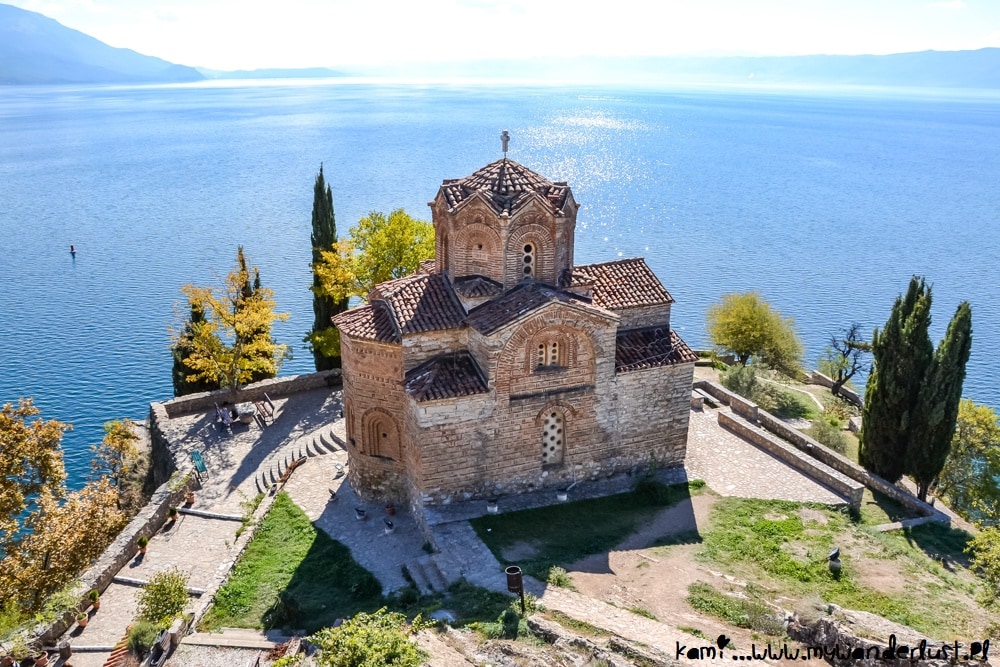
Veles might not be the not obvious destination choice when visiting Macedonia but the city, located 55 km south-east of Skopje, has at least one landmark that is worth the attention. If you are familiar with the concept of Yugoslav spomeniks – the WW2 memorials that often have rather unusual shapes – you might want to come to Veles to see one of them.
Kosturnica Memorial, dating back to the late 1970s, was created to honor Partisan soldiers from Veles and surrounding areas who were fighting against the fascist German and Bulgarian forces during the National Liberation War from 1941 to 1945. The memorial was supposed to look like the open poppy-seed flower, the symbol of life and rebirth. Inside you can find the museum with the biggest mosaic in North Macedonia.
Visiting Kosturnica Memorial has one more advantage – from the monument, you can admire a beautiful panorama of Veles (the city has a really picturesque location). Besides the abstract-looking spomenik other places worth seeing in Veles include the historical clock tower from the 18th century and the Church of Saint Pantaleon from the 19th century.
Read more about Veles in my article: Veles, North Macedonia – an underrated city in the Balkans

Even if today Kratovo is a sleepy little town, it has a long and interesting history, dating back to Roman times and for centuries it’s been an important mine center with various raw materials mined here.
Kratovo is picturesquely located in a basin surrounded by green hills at the edge of Osogovo mountains and the townscape is packed with red rooftops and medieval stone towers. In the past there were seventeen stone towers from the 12th to 14th century (the highest number of medieval towers in Macedonia), today only six remain but they sure are impressive. Another remnants of the old times are medieval stone bridges connecting two sides of the small rivers and creeks, there are still five of them in Kratovo.
Altogether, visiting Kratovo feels a bit like stepping back in time. This is one of the most underrated places to visit in Macedonia.
Read more about Kratovo in my article: Kratovo, North Macedonia – the Town of Stone Bridges and Towers

Bitola , known also as the “City of Consuls” is the second-largest city in North Macedonia, located in the south of the country near the border with Greece.
Thanks to the many consuls who had their seats here in the 19th century the city still has a different, more laid-back, and European vibe than other places in Macedonia. The center is lined with beautiful 19th-century buildings and the pedestrian central street – Shirok Sokak – is packed with cafes where you can sit down, observe the world around and enjoy the relaxing atmosphere of Bitola.
Even if the city is known for its 19th-century importance, Bitola is much older and you can find some older monuments here too, especially mosques and the bazaar area (which can compete with the one in Skopje).
But the real highlight of visiting Bitola is Heraclea Lyncestis – the ruins of the ancient town located just 2 km outside of the center.
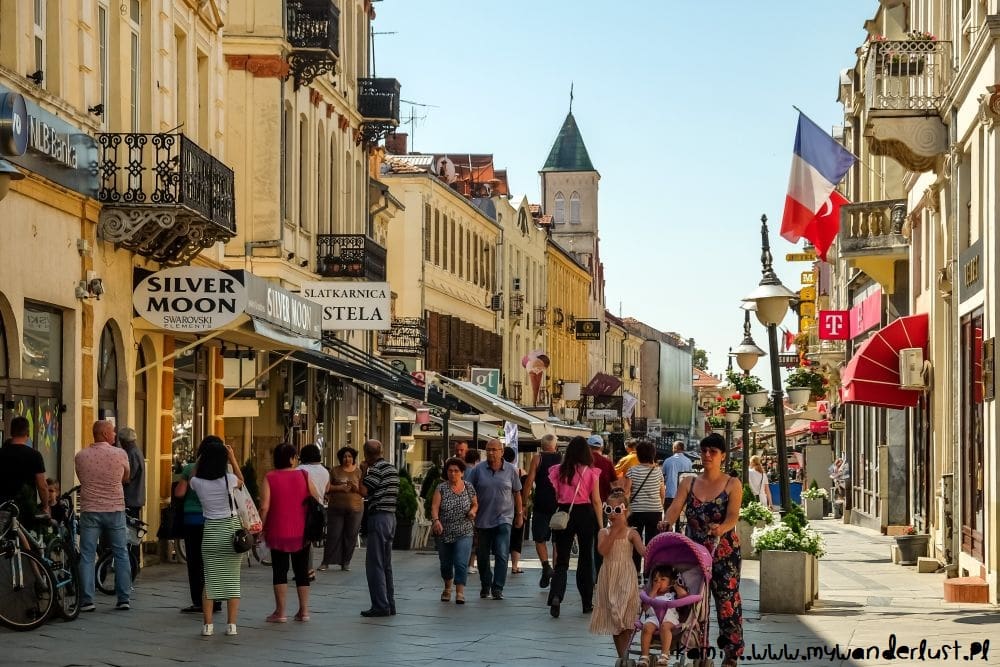
Pelister National Park
When visiting Bitola don’t also miss Pelister National Park, located just outside of the city. This is the oldest national park in North Macedonia, established in 1848, and surrounds the Baba Mountain massif with its highest peak Pelister (2601 m, the third highest mountain in the country).
The park is known for its exquisite flora and fauna, it is also a perfect place for hiking around and the close proximity to Bitola makes it a popular nature getaway among locals. When wandering around you can expect some amazing views, you can also visit two mountain lakes called Pelister’s Eyes.

Prilep is known mostly as the Macedonian tobacco and beer capital but this city, located between Skopje and Bitola, has actually a lot to offer.
The central part of Prilep isn’t large but it’s packed with monuments from the ancient, Byzantine, Ottoman, neoclassical, communist, and modern times. The old bazaar is rather small but really pleasant with its vibrant atmosphere. On the edge of it, you can see the ruins of the Čarši Mosque from 1475 (the oldest mosque in Europe with a double balcony on its minaret) that was sadly set on fire during the 2001 protests. Despite its current condition, you can still easily imagine what a beautiful place it used to be.
In Prilep, you can also see another Yugoslav spomenik – Mound of the Unbeaten – commemorating the Prilep area’s fallen in the Struggle for the Liberation of Macedonia.
What catches the attention right away when visiting Prilep is the city’s beautiful location with rocky hills surrounding the place. On those hills on the edge of the city, you can find remnants of the medieval fortress from times when Prilep was the capital of the medieval kingdom of Kings Vukašin and Marko. This is one of the best places to visit in Prilep, not only for its historical value but also stunning views around.
10 km away from the city you can also visit the secluded Treskavec Monastery from the 12th century with incredible frescoes inside. The hike to the monastery is a bit challenging but the landscape and views around are the best rewards for the effort.
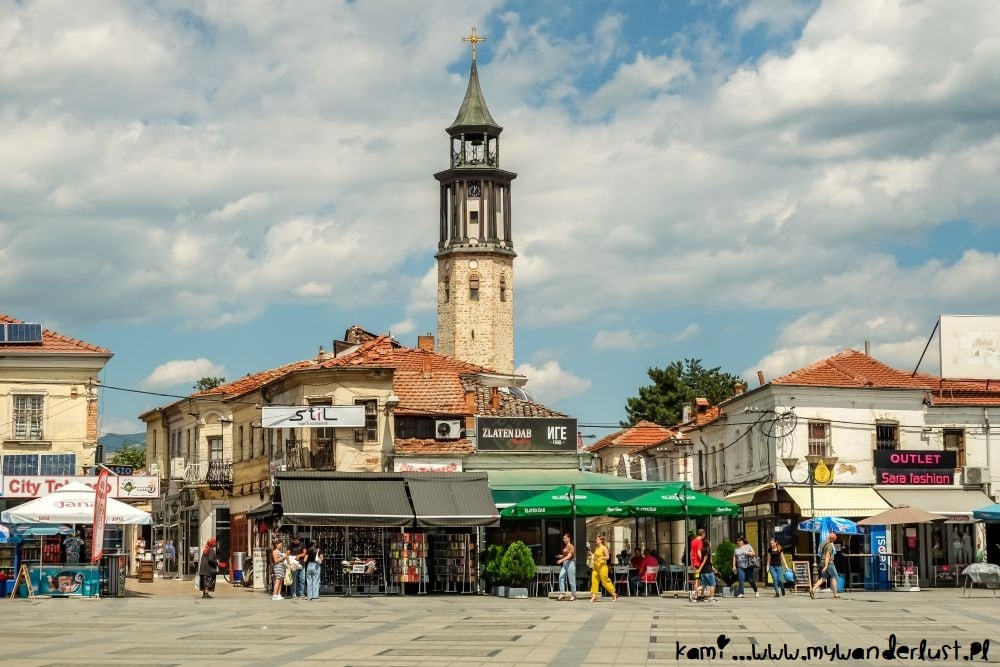
With an elevation of 1,350 m Krusevo is the highest-located town in the country that, in 1903, was the center of the Ilinden Uprising against the Ottoman Empire. Today it is a very picturesque yet sleepy town with a few monuments worth visiting.
The highlight of Krusevo is yet another spomenik, probably the most known one in North Macedonia – Makedonium, opened in 1974 on the 30th anniversary of the Second Session of the Anti-fascist Assembly for the National Liberation of Macedonia and the 71st anniversary of Ilinden Uprising. The design of this structure is really unique and looks like from outer space. If you are lucky and Makedonium is open be sure to visit it inside too to see some interesting stained glass windows and basreliefs.
Krusevo was also the hometown of the most popular Macedonian singer, Tose Proeski who died in a car accident in 2007 at the age of 26. Today you can visit his memorial home and his grave in Krusevo, there are also numerous signs all over the town commemorating this famous artist.
Krusevo is also a perfect place for a lazy stroll around, to admire the beautiful architecture of the town and beautiful views of the town and beyond.
Read more about Krusevo in my article: Visit Krusevo – the Picturesque Town in North Macedonia
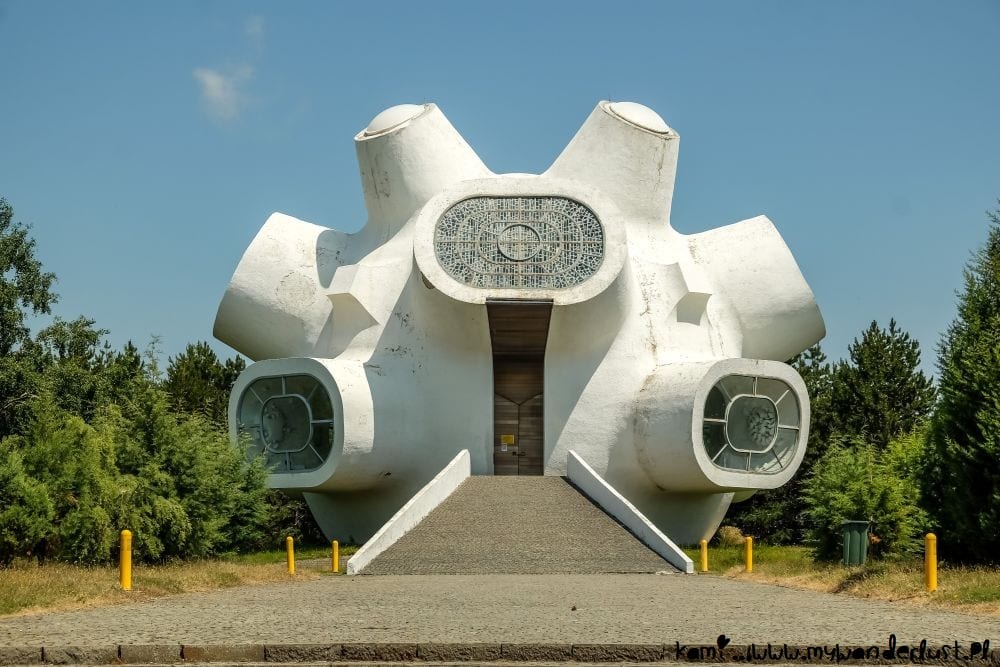
Mavrovo National Park
Mavrovo National Park is the largest national park in the country, located in the western part of North Macedonia, near the border with Albania . You can find there some beautiful landscapes with lakes, rivers, and caves as well as the highest peak of Macedonia – Mount Korab (2,764 m).
The most popular place to visit in Mavrovo National Park is the submerged Church of Saint Nicholas from the mid-19th century. How much of it you can actually see depends on the water level in Lake Mavrovo, in the summertime when the lake dries up you can even visit the church inside.
The area of the national park has actually more interesting monuments you can visit, the highlight being Saint Jovan Bigorski Monastery originally from the early 11th century, with the impressive wood-carved iconostasis. Don’t also miss the village of Galičnik, known for its historic architecture – it has the biggest number of buildings under protection in the whole country.
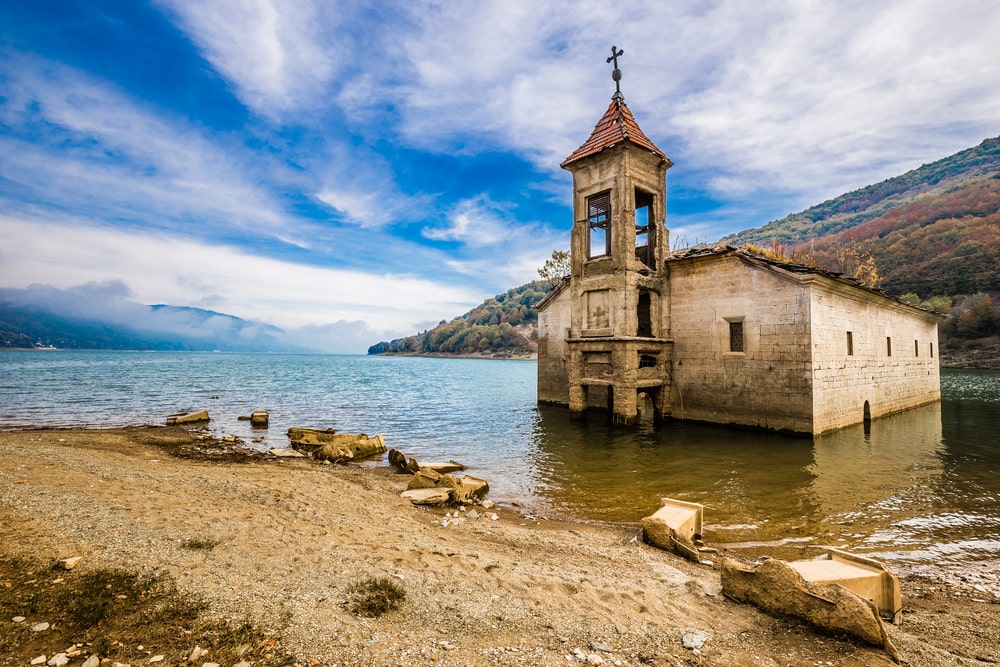
Stobi is probably the most impressive ancient town you can find in the territory of North Macedonia, dating back to BC times. Around the 2nd century BC, it fell under Roman rule and was developing until the 6th century when it was destroyed by earthquakes and invasions.
Today you can visit amazing remnants of that ancient town and see ruins of numerous historical sites: houses, basilicas, streets, and more, there are also some well-preserved mosaics still on the ground.
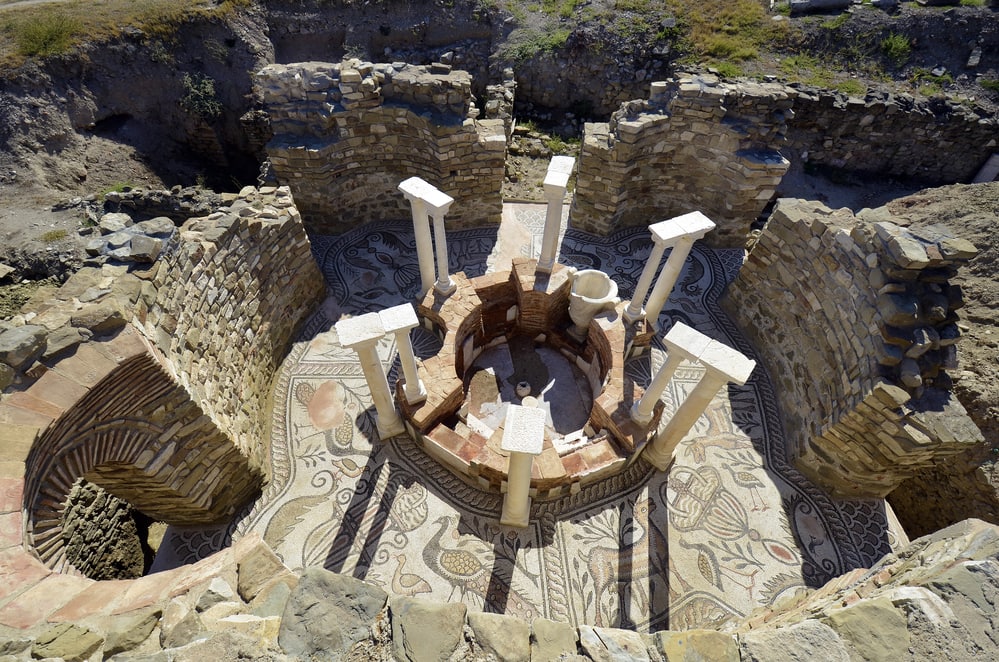
Šar Mountains
Located on the border between North Macedonia and Kosovo , Šar Mountains offer some breathtaking views and hiking possibilities. With 30 peaks higher than 2,500 m as well as a few glacial lakes located over 2,000 m, Šar Mountains is a paradise for all nature lovers.
Since the area isn’t widely popular you can expect fairly empty trails when wandering around. The highest peak of the Šar Mountains is Titov Vrv (2,747 m). The mountain range is located just outside Tetovo and is easily accessible from this city.
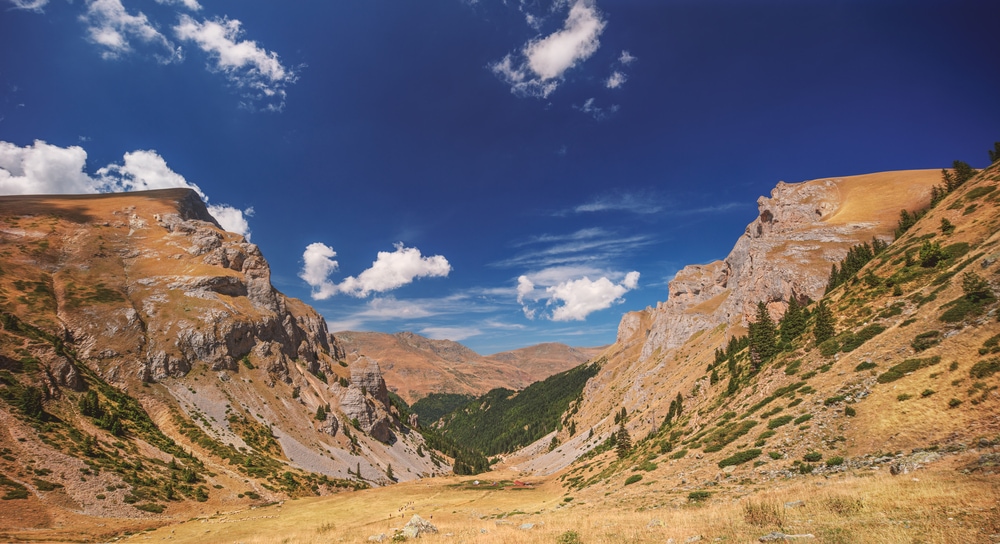
Osogovo Monastery
Located near the border with Bulgaria , Osogovo Monastery was founded in the 12th century but the oldest part of the structure we can visit today dates back to two centuries later.
The monastery in fact consists of two churches: the larger “Saint Joachim of Osogovo” and the smaller “Holy Mother of God”. That’s also where you will find a residency for the Head of the Macedonian Orthodox Church.
Besides its historical and religious value, it’s worth visiting Osogovo Monastery for the beautiful frescoes you can see inside the churches.
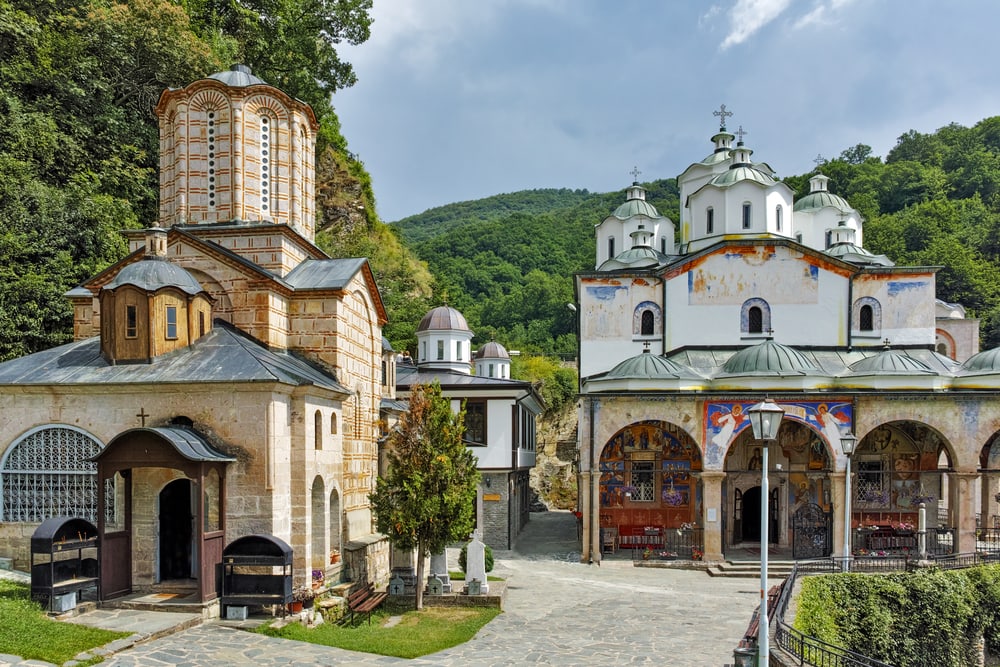
Stone Dolls of Kuklica is often called “the Macedonian Cappadocia”. There are over a hundred stone pillars: 15 large (10 meters tall) and 120 smaller ones. Since many of them resemble humans, the legend says that the pillars are in fact wedding guests that were turned into stones.
Kuklica is located only 10 km away from Kratovo so you can combine visiting these two places together.

Discovered only in 2001, Kokino is the site of the megalithic observatory that is believed to be almost four thousand years old, making it the fourth of the oldest observatories according to NASA. You can still find there special stone markers used to track the movement of the sun and moon on the eastern horizon.
What makes this place even more worth visiting is the spectacular scenery in the Kokino observatory is located in.
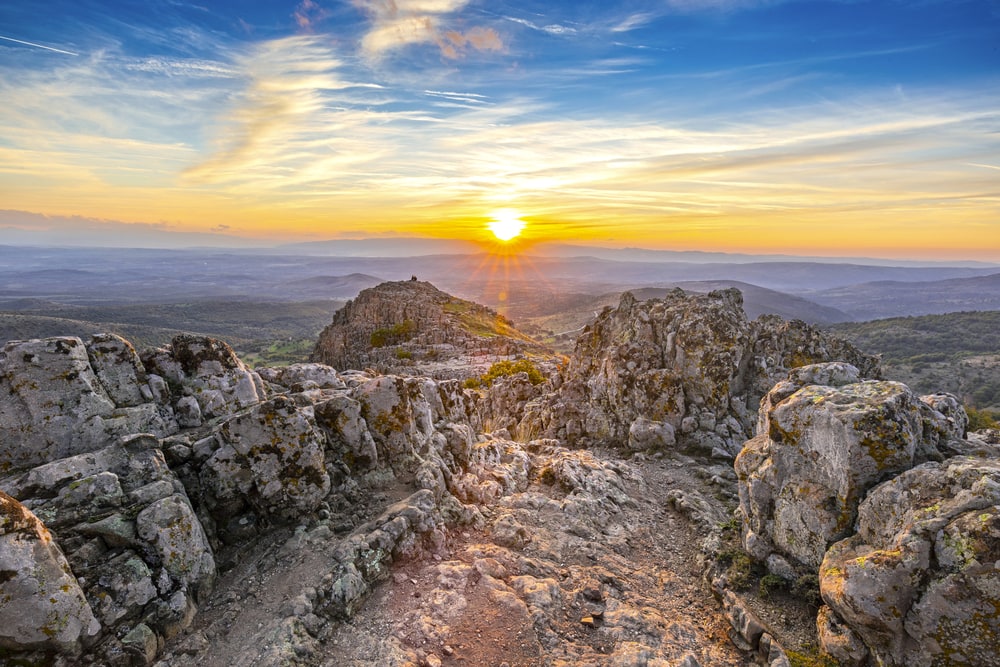
Kozjak Lake
Kozjak Lake is the largest artificial lake in North Macedonia, located not far from Skopje. Surrounded by picturesque mountains rolling down to its surface, the lake is 32 km long and in the widest place, the distance between the shores is up to 400 meters. Kozjak Lake was created in 2004 when the nearby hydroelectric power plant opened.
The lake is especially popular among fishermen but even if you are not interested in fishing you should still visit the area as the views, especially from the upper parts, are breathtaking.

Lake Prespa
Less popular than Ohrid, Lake Prespa is divided between three countries: North Macedonia (the largest part), Greece, and Albania. With an elevation of 853 meters, this is the highest tectonic lake in the Balkans, surrounded by two national parks of Macedonia: Galičica and Pelister. This is also where you will find some of the best beaches in North Macedonia, making Lake Prespa a popular destination among local tourists.
Besides the stunning views, there are other places worth visiting around Lake Prespa: Golem Grad (the largest island in the country) as well as a few old churches and monasteries.
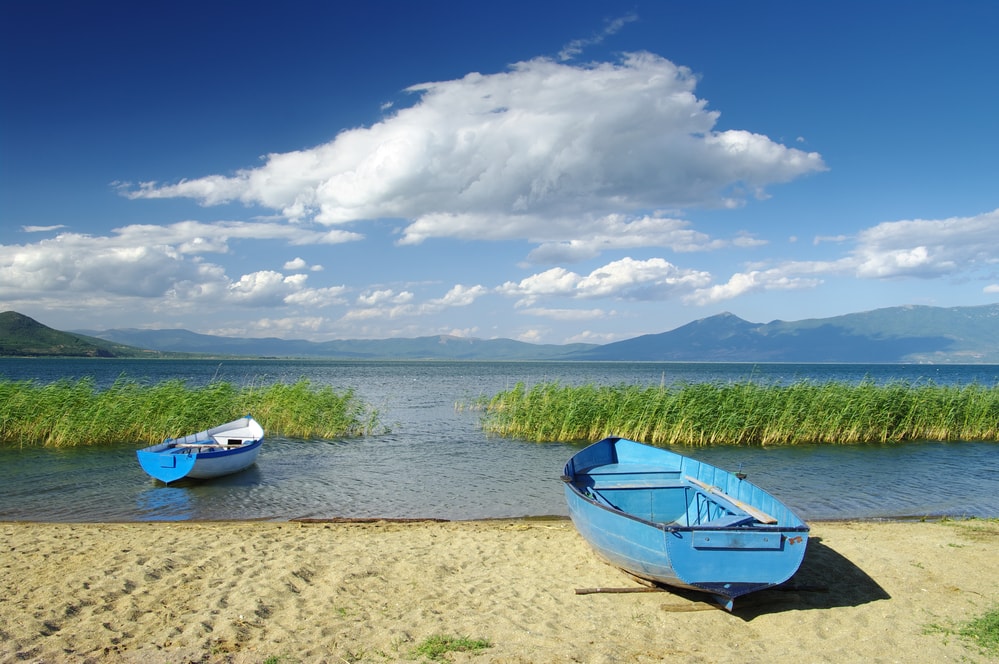
Galičica National Park
The area between Lake Ohrid and Lake Prespa is where you will find Galičica National Park, focused around the Galičica mountain range with the highest peak being Kota (2,292 meters). Within the park, you can find over 1600 floral species. The national park makes a perfect nature getaway or even a day trip destination when visiting Lake Ohrid.
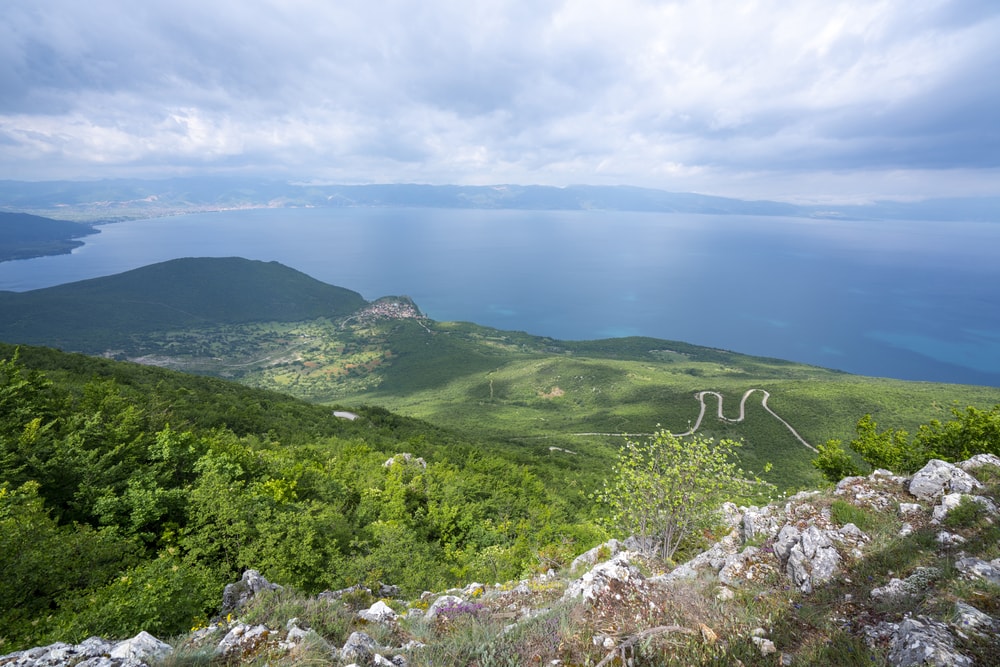
Map with the best places to visit in Macedonia
To give you a better overview of places to visit in Macedonia, here is the map with the locations of all the destonations mentioned above.
Final thoughts on visiting Macedonia
As you can see, North Macedonia really has a lot to offer and even if it doesn’t have sea access (which I think is the reason why it’s less popular than other Balkan countries) there are still plenty of great places to see in Macedonia. Give the country a chance and you will not be disappointed! You might even keep returning to North Macedonia just like I do.
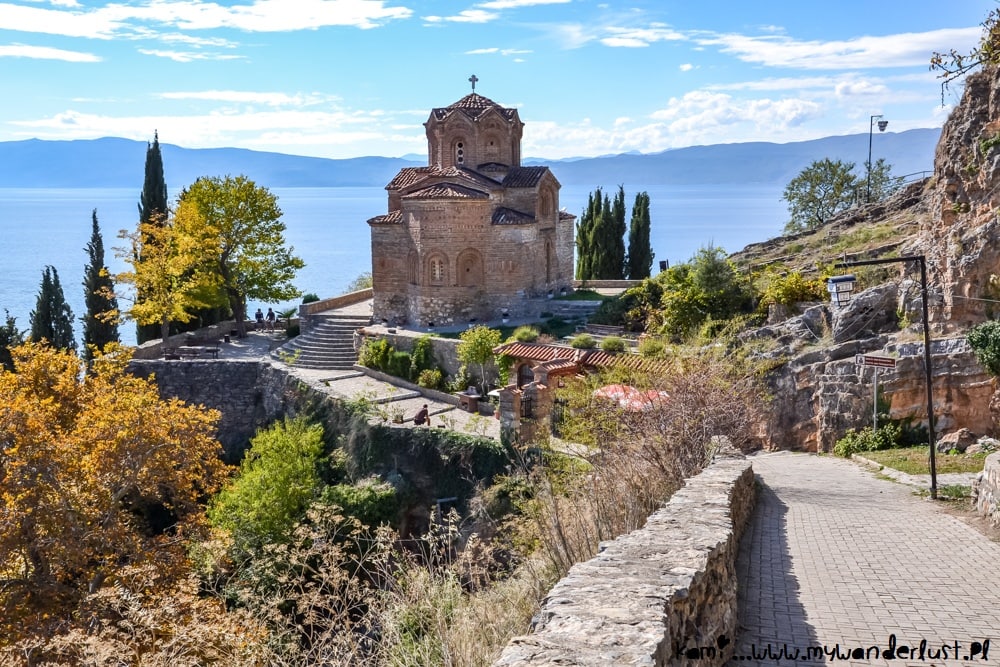
Travel Resources
Below you can find the brands I trust and use when planning trips:
- You can find the best accommodation options at Booking . They have many discounts and excellent customer service. Click here to look for the place to stay in North Macedonia
- I recommend joining organized tours to get to know the place better and to visit more places during your trip. You can find a great selection of tours at Viator or Get Your Guide .
- To always stay connected I use Airalo eSim cards – click here to get yours!
- Looking for the airport pickup ? Check Welcome Pickups!
- Never travel without travel insurance , you never know what might happen and better safe than sorry. You can check the insurance policy for North Macedonia here.
- Make sure to have the offline map always installed on your phone, they can save you so many troubles. I always use the free app Maps.Me .
For the end I left a few announcements that might interest you:
- Sign up to my newsletter or follow me on Bloglovin to get updates about the new posts
- Join my Facebook group about Eastern Europe, the Balkans and former USSR and connect with fellow travellers and enthusiasts of these regions – just click here!
- I’ve included a few handy links of services and products I personally like and use so you can plan your own trip to North Macedonia too. They are often affiliate links. This means I will get a small commission if you book/purchase anything through my links, at no extra costs for you. Thank you!
LIKED IT? PIN THIS POST FOR LATER!

If you enjoyed that post why don't you share it with your friends? That would mean so much to me! Also be sure to join 30.000+ fellow travelers and follow me on Facebook , Twitter , or Instagram for travel updates and even more pictures! If you don't want to miss new posts sign up to my newsletter or follow on Bloglovin !

Jennifer Doré Dallas
Hi! I am curious, how is the Wi-Fi for a remote worker that needs to do a lot of stable Zoom calls?
I never had issues with the wifi in North Macedonia but then I didn’t use it for zoom calls, just to work online
Leave a Reply Cancel Reply
Sign me up for the newsletter!
Let’s become friends!
Join me on Facebook for even more travel updates!
Kami and the rest of the world

Touropia Travel
Discover the World
10 Best Places to Visit in Macedonia
By Alex Schultz · Last updated on October 3, 2023
A fascinating country to explore that is still very much off the beaten path, Macedonia is blessed with incredible natural beauty and an intoxicating mix of cultures that draws on both Balkan and Mediterranean influences. Ruled at various times by the Romans, Ottomans, Serbs, and Soviets, there are a wealth of historic sites dotted around the country.
Among the best places to visit in Macedonia are old monasteries and hilltop fortresses. Mosques, Orthodox churches, and amazing archaeological ruins are also prevalent, and many of its cities have delightful Old Bazaars at their heart which date back to Ottoman times.
Map of the best places in Macedonia
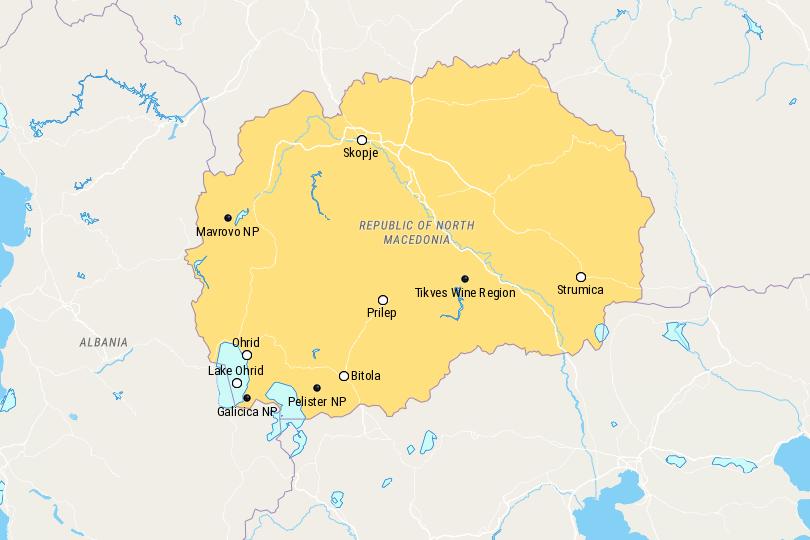
Its mountainous landscape is home to glittering lakes and tinkling waterfalls and its three national parks are full of beautiful hiking trails that weave their way amongst the verdant hills and valleys. With its often turbulent past now behind it, Macedonia’s wealth of stunning tourist attractions makes it a fantastic, little-known destination that has a plethora of amazing things to see and do.
10. Strumica [SEE MAP]
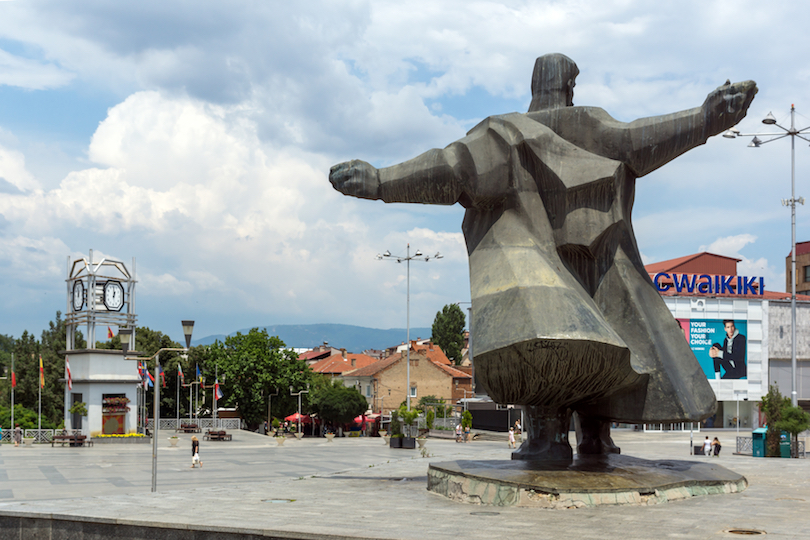
Famed for the beautiful Byzantine monasteries lying just outside of the city, Strumica is located in the east of Macedonia. The surrounding countryside is full of magical waterfalls and mountains.
A quiet and relaxed city, Strumica is home to some lovely ruins and archaeological sites, such as the Roman Therma and the Carevi Kuli Fortress dates back to the 5th century.
While many people simply stop by on their way to the nearby border crossing into Bulgaria , the stunning countryside, historic sights, and the glittering Kolesino and Smolare waterfalls certainly warrant a longer stay. The best time of year to visit is during the Strumica Carnival, when the whole city comes together to celebrate, with various parades, music and traditional events taking place.
9. Prilep [SEE MAP]

Located beneath a bare hill adorned with the ruins of an old fortress, Prilep is full of history. It was once the ruling seat of a medieval kingdom; as such, there are lots of fantastic churches and monasteries scattered around.
Hiking up to the 10th-century fortress is a must when in Prilep for the breathtaking views it offers of the city down below. On the way, you’ll pass lots of strange and marvelous rock formations, such as the intriguing Stone Elephant.
A peaceful, laidback place, strolling around Prilep’s Old Bazaar is a lovely way to spend the day. The city’s numerous churches all have their own characteristics and distinctive features. The Sv. Blagoveshstenie Church is the undoubted highlight with its delightful galleries and woodcarvings.
8. Mavrovo National Park [SEE MAP]
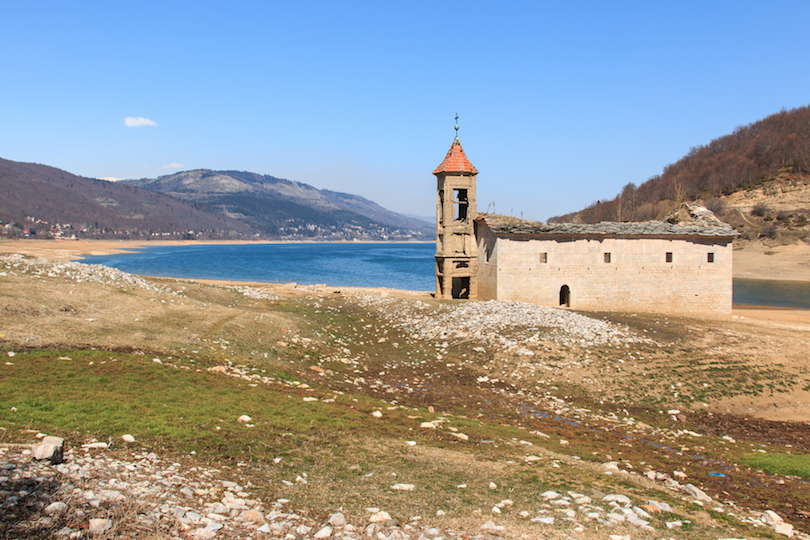
The largest national park in the country, Mavrovo has loads to offer outdoor aficionados. Over the course of the year, you can explore its splendid scenery by horseback, kayak or skis, as well as on foot or via mountain bike.
Named after the scenic village located in the park, Mavrovo is home to the country’s largest artificial lake. While taking a boat trip on its tranquil waters, you’ll get to see the half-submerged St. Nicholas Church, a truly breathtaking sight.
With its wonderful natural beauty, Mavrovo is a lovely park to visit. Because it is home to the country’s highest peaks, there is plenty of great rock climbing and skiing to be had in winter, and the views on offer are spectacular.
7. Tikves Wine Region [SEE MAP]
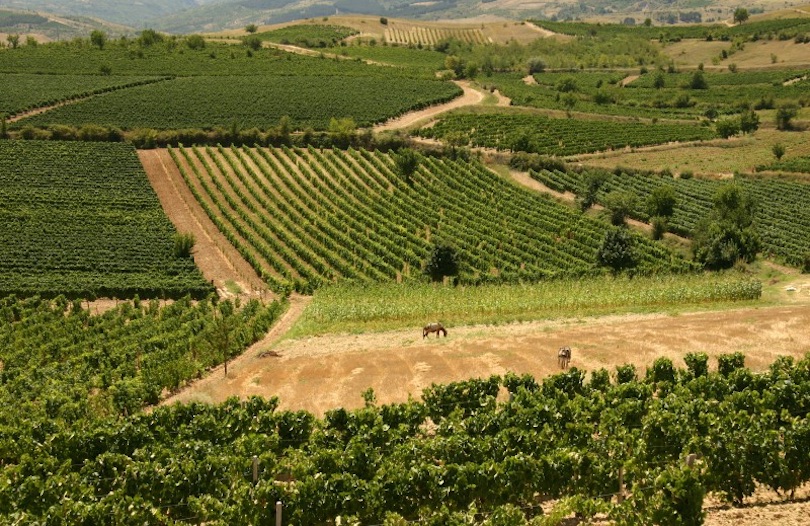
Renowned for the fabulous wine it produces, Tikves’ undulating hills and valleys are home to fertile soils and the warm climate makes it perfect for cultivating grapes.
Wine has been produced here since the 4th century BC. The peaceful scenery is charming to tour around while stopping off at picturesque, quaint wineries and vineyards to taste the local produce.
In addition to the fabulous wine and scenery, Tikves Wine Region also has a number of churches, lakes and dramatic gorges for you to stop off at on the way to your next winery.
6. Pelister National Park [SEE MAP]
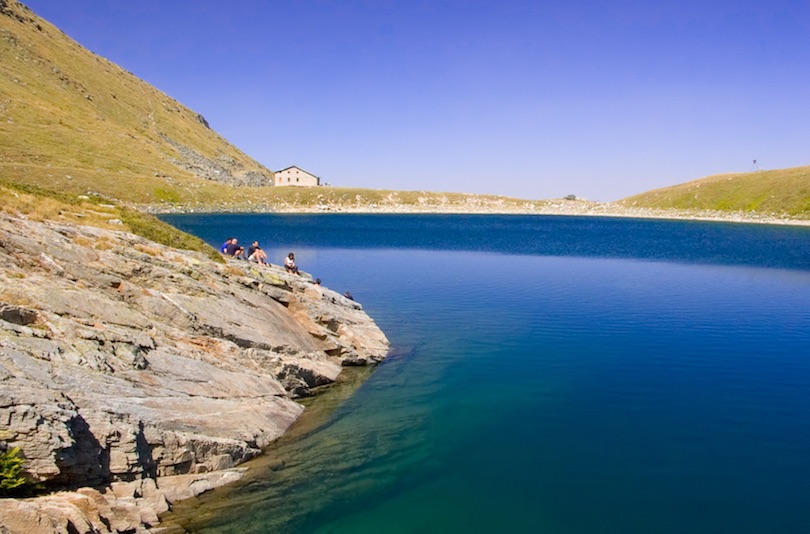
Established in 1948, Pelister National Park is a mountainous area which covers the Baba Mountain massif. The reserve is home to a host of endemic animals, among which are bears, wolves, and soaring eagles.
The oldest national park in the country, Pelister is home to two stunning glacial lakes which are nestled away amidst its towering peaks. These are delightfully known as Pelister’s Eyes.
With loads of diverse nature on show and a plethora of hiking trails twisting their way amongst the valleys and forests, Pelister is a joy to explore. The views from atop of Mount Pelister will take your breath away – if the hike hasn’t already. In addition to all of this, you can camp in the park or go skiing, depending on the time of year.
5. Bitola [SEE MAP]

Located not far from the border with Greece in the south of Macedonia, Bitola is the second largest city in the country. It is full of beautiful old buildings, delightful art galleries and a plethora of welcoming and friendly cafes.
Very much off the beaten path, Bitola is located amongst three different mountain ranges. As such, there is lovely scenery on show, as well as scenic walks amongst the verdant hills and mountains surrounding the city.
In town, visitors will find elegant, pastel-colored townhouses alongside beautiful mosques and churches, while the Old Bazaar dating to Ottoman times is a delightful place to grab a coffee and people watch. With a lively cultural scene, lots of festivals take place here over the year. Among the museums, the Museum of Bitola is particularly worth checking out; it provides a fascinating look at the city’s history and culture.
Founded in the 4th century BC, Bitola is one of the best places to visit in Macedonia. Just out of town are the amazing archaeological ruins of Heraclea Lyncestis, which are not to be missed. The Roman site is home to some splendid floor mosaics and the ruins of Roman baths.
4. Galicica National Park [SEE MAP]
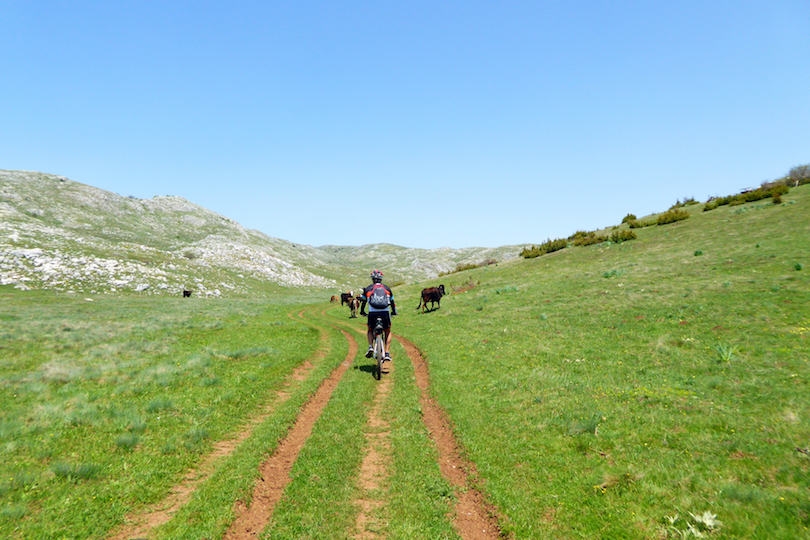
Located between Lakes Ohrid and Prespa, the stunning Galicica National Park is a wild and wonderful place to visit. Hiking amongst the unspoiled and untouched valleys, forests and mountains will certainly delight nature lovers.
Dominated by the Galicica limestone massif that lies between the two lakes, the national park is home to a number of lofty peaks. From their summits are some breathtaking views of the surrounding countryside.
With picturesque little mountain villages, an abundance of fantastic fauna and flora, and a diverse landscape that encompasses lakes, mountains and valleys, Galicica National Park’s natural beauty is well worth checking out when in Macedonia.
3. Skopje [SEE MAP]

Macedonia’s capital is an intriguing and interesting place to visit, in large part due to its eclectic architectural collection that includes beautiful Ottoman-era mosques, enormous Neoclassical buildings, and a huge array of gleaming, modern statues.
Inhabited for over six thousand years and ruled by countless empires and kingdoms, Skopje certainly has its fair share of historic sights. Among the most popular are the impressive 6th century Kale Fortress and the Stone Bridge, which both feature on the city’s coat of arms. Wandering around the Skopje’s atmospheric Old Bazaar will make you feel like you’re in the souks of old Istanbul.
Alongside its wealth of restaurants, shops, museums, and cafes, Skopje also has some great nightlife to offer, which revolves around the city’s main square. The square is home to the Porta Macedonia, a huge triumphal arch that celebrates twenty years of Macedonian independence. Lovely views and scenery are also on hand from the top of Mount Vodno that looms over Skopje to its southwest; it is adorned by the towering Millennium Cross, which is now a popular tourist attraction.
Located on the banks of the Vardar River, Skopje is certainly worth visiting when in Macedonia. While critics say it now has a theme park feel to it due to the recent proliferation of nationalistic and, at times, tacky monuments and statues, there is much to see and do of interest in this unique city.
2. Ohrid [SEE MAP]

Sometimes known as ‘the Jerusalem of the Balkans,’ as it was once home to 365 churches, Ohrid is a very historic town that is among the most beautiful and atmospheric in Macedonia.
Wandering around its old cobbled streets is a treat; you will pass by some delightful architecture and its quaint little restaurants and cafes make for a perfect stop when you feel like taking a break to watch the world go by. Among its most popular attractions is the captivating Samuil’s Fortress which overlooks the town, and the Church of Saints Clement and Panteleimon – one of the most impressive of the numerous churches in Ohrid.
What really sets Ohrid apart, however, is its beautiful location on the shores of Lake Ohrid. The town is blessed with numerous breathtaking views out over the turquoise waters. As well as taking a scenic stroll along the town’s shoreside boardwalk, visitors should not miss out on Saint John at Kaneo Church for the incredible panoramas it has out over the lake.
1. Lake Ohrid [SEE MAP]
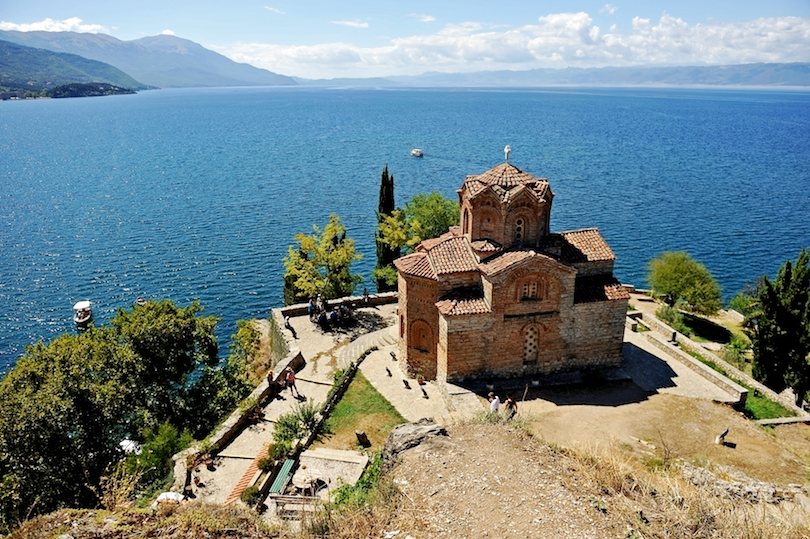
Lying on the border between Macedonia and Albania, Lake Ohrid is spectacular; its beautiful clear blue waters glisten in the sun surrounded by mountains. Tourists are only now slowly returning to its shores after the break-up of Yugoslavia in the ‘90s.
One of the deepest and oldest lakes in Europe, Lake Ohrid is a very important and biodiverse ecosystem. It is home to a vast array of species that are endemic to the area, such as predatory fish and freshwater snails.
Its weaving shoreline is just as picturesque as its mirror-like waters; quaint villages and towns such as Ohrid and Struga are tucked away amongst glorious forests and alongside peaceful beaches. With loads of watersports, boat trips and swimming spots on offer to complement the incredible scenery, Lake Ohrid is one of the Balkans and Macedonia’s hidden gems.
Share this post:
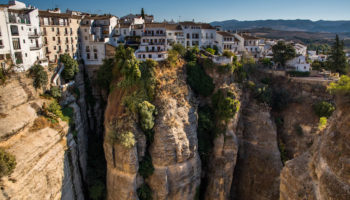
15 Best Countries to Visit in Europe
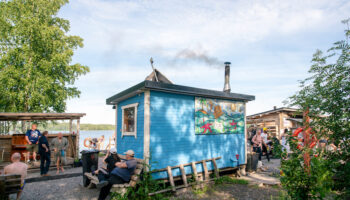
27 Top Tourist Attractions in Helsinki
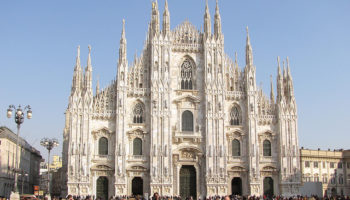
10 Most Captivating Gothic Cathedrals of Medieval Europe
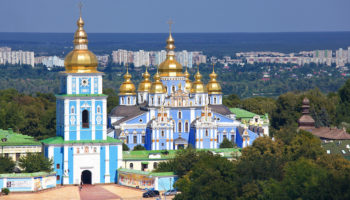
25 Best Places to Visit in Eastern Europe
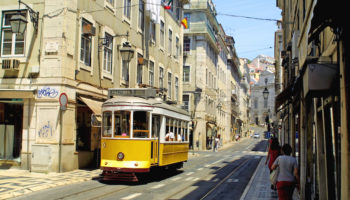
25 Best Cities to Visit in Europe
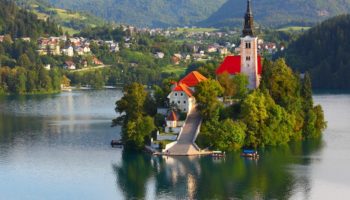
17 Most Charming Small Towns in Europe
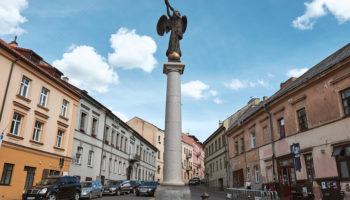
12 Best Things to do in Vilnius, Lithuania
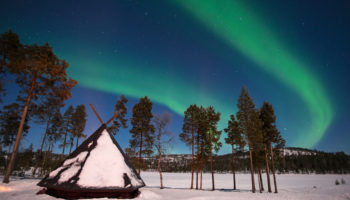
17 Best Places to Visit in Northern Europe
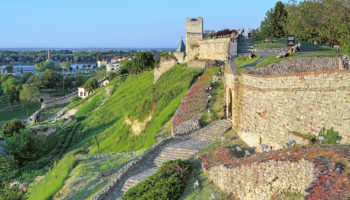
22 Top Things to do in Belgrade, Serbia
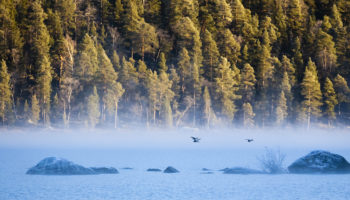
10 Most Beautiful Lakes in Finland
Reader interactions.
September 8, 2019 at 12:53 am
I went to skopje and it was wonderful in August, going back in November.
Leave a Reply Cancel reply
Your email address will not be published. Required fields are marked *
This site uses Akismet to reduce spam. Learn how your comment data is processed .

Historic Places And Monuments
The old city of stobi.

Scupi is one of the largest Roman cities in the Balkans with the status of a colony. It is situated 5 km northwest of Skopje, near Zlokukani, on the southwest slope of Zajčev Rid, left of the site where the river Lepenec flows into the Vardar. Its precise location was identified by Arthur Evans in 1883. Continuity of life on this site has been confirmed from the Bronze and Iron Ages to the 6th century B C. The beginnings of this city are linked with the incursions of the Roman legions in the late 1st century BC and the founding of the province of Moesia in 15 AD.
The question concerning its previous status, i.e., whether it was a civilian settlement or a legion camp, remains open. During the Flavian dynasty, probably during the reign of Domitian, in 84/5 it acquired the status of a self-governing deductive colony ( Colonia Flavia Scupinorum) with the settling of veterans, mainly those from Legio VII Claudia.
The original settlement was transformed into a complex Roman urban city with all the administrative, civilian and religious facilities and structures which the new conditions and circumstances required. It developed as an important administrative, economic, cultural, religious and transit center of the province Moesia Superior.
There is a reference to Stobi in Ptolemy in the 2nd century. During Marcus Aurelius, in 170, the Dacian Costoboci passed through it during their incursions towards Aegea. In 268/69 it was ravaged by the fierce hordes of Goths and Heruls/ Eruli. In the late 3rd century it became the metropolis of the newly established province of Dardania, and in the 4th century, it experienced once again great economic and urban growth. In the Tabula Peutingeriana (4th century) it is marked with a vignette as the province capital. During his stay in Stobi in 379 and 388, Emperor Theodosius I issued two imperial edicts. The city was probably not spared during the ravaging incursions of the Huns in 447. Between the 4th and 6th centuries, it was an episcopal and metropolitan see. In 518 it was destroyed in a disastrous earthquake recorded in the Chronicle of Marcellinus Comes. After the renewal in the 6th century, urban life eventually ceased towards the end of the century, during Mauricius (582/3). It survived as a small rural settlement until the 10th and 11th centuries. Its urban features, the infrastructure and the high level of The surrounding walls are in the form of an irregular rectangle (738 x 590 m), covering a surface of 43 hectares. The city plan has an orthogonal design. The streets, paved with massive stone slabs, run parallel with the rampart walls (SW/NE/NW/SE) and intersect at a right angle. The pavements are separated with curbs and are covered with porticos. Under and by the streets there is a sewage system for waste water, as well as a complex grid of clay and lead pipes for the supply of clear water. Throughout its historical development, the city preserved its basic urban plan, with the same orientation of the building complexes and other structures, despite the fact that the dimensions and purpose of the city quarters changed in different periods. In terms of its urban design, judging from the scope of its exploration, these urban features are especially characteristic of the Late Antique Period (late 3rd and the 4th centuries.) Several building complexes and structures have been completely or partially explored: the theater (a grandiose structure with the unearthed contours of the skena, the theater building and the auditorium, with luxurious architectural marble decoration) which belongs to the Roman type of theaters, built during Hadrian in the 2nd century; a horeum (a large-size public building which served as a warehouse, built between the late 3rd and early 4th centuries); a city villa/domus (a private house with walls resplendently decorated with frescoes and private floor heating, built between the 3rd and 4th centuries); a civilian basilica (a representative and monumental public building with lavish architectural marble decoration and a mosaic floor, built in the 4th century); a city bath (a public building with floor heating and sections for hot and cold baths, built in the period between the 4th and 5th centuries); a three-nave Early Christian basilica with a baptistery on the south side, dating from the period between the 5th and 6th centuries); a small housing complex (private houses from the 6th century); several structures of unidentified purpose and part of the street grid ( the cardo maximus, a crossroads with two decumani, another cardo and a decumanus from the period between 4th and 6th centuries). The necropolises and other auxiliary buildings are outside the city walls. Approximately 1,000 graves from the southeast and northwest necropolises have been explored, which date from the period between the 1st and the 4th centuries, as well as parts of the Antique bridge across the river Vardar, a private villa and a Christian basilica in the village of Bardovci.
Fortress Kale

However, this area was settled with highest intensity as a mediaeval fortress, more precisely, as the Upper Town of the mediaeval Skopje. As such, it was reconstructed in the periods that followed, at the time of the Ottoman conquest, and remains in use to the present day. In prehistoric times, there were at least three settlements (Eneolithic, Bronze Age, Iron Age), while in the Middle Ages and the Ottoman period, at lest three other settlements were consecutively built (the first between the 10th and 13th or 14th centuries, the second between the 14th and 17th centuries and the third between the 18th and 20th centuries).
The earliest finds from the Skopje Fortress are the remains of the very first settlement from the Copper Age ( Eneolithic) or the 4th millennium B C. Various structures, mud huts or semi-mud huts which served as dwellings, cult structures or waste or storage pits were dug into clay subsoil. In the next period, the Bronze Age, i.e., during the 3rd and 2nd millennia B C, prehistoric way of life continued, this time in a smaller area, limited mainly to the northeast parts of the Fortress. In addition to numerous movable finds and remains of dwelling structures, ceramic ware kilns and other remains of material culture from all the stages of the Bronze Age have also been recorded in these strata.
In the course of the 13th century, life in Skopje’s Upper Town continued with the same intensity. The ramparts were reconstructed and surrounded an entirely new urban area, while the city was further fortified with surrounding walls and the so-called Lower Town (suburbium). A church with a cross-shaped interior and a necropolis around it was discovered on the highest and most dominant part of the Fortress, in the southeast part of the city. According to written records, other churches stood there as well, inside the Skopje Fortress, dated to the same period. In 1391, Skopje was captured by the Ottomans, who destroyed the city and parts of the city ramparts. After these events, the Fortress was used for other purposes and served as a military barracks. The buildings and the entire cultural inventory that have been discovered and which are dated to this period reflect activities customary for a fortress that served this purpose.
Ancient town "Heraclea Lyncestis"

The Antique city of Heraclea Lyncestis is situated on the south side of the city of Bitola, in its immediate vicinity. The antique ruins of Heraclea provoked scholarly interest in the early 19th century. Diplomatic representatives were especially active in this domain, and this site was an important part of their daily activity. The favourable geographic features and historical circumstances contributed to the superiority of Heraclea during the Antique period. The city lies in a fertile plain, in the ancient region of Lyncestis, protected from the north by Mt. Baba and the small river Siva Voda on the south. From time immemorial, a road (known as the road of Candavia) led through it which, during the Roman period, substituted the most famous road of the classical epoch, the Via Egnatia that linked the Adriatic and Aegean coasts. It was recorded as an important stop in a number of itineraria, such as Itinerarium Antonini and Itinerarium Birdigalense, while in Tabula Peutingeriana and the anonymous geographer of Ravenna refers to it as a stop on the road Heraclea-Stobi. The emergence of this, the most important city in Antique Macedonia, is linked with the name of Philip II of Macedonia, in mid-4th century B C . Towards the middle of the 2nd century, the Romans conquered Macedonia and subdued its political power, turning it into a province and partitioning it into four regions. Despite such a situation, Heraclea, which became part of the fourth region, experienced a degree of prosperity. In the first three centuries of the new era, it acquired the status of a Roman colony. This is confirmed by an inscription on a marble base dating from the 3rd century AD, which includes a reference to the name of Septimia Aurelia Heraclea. In terms of its physiognomy in the Roman period, several structures from the 2nd century AD have been discovered that convey the spirit of the times: the Thermae, the Portico of the Court House with an impressive framed inscription from Hesiod’s Works and Days, and the ingenious feat of Roman architecture, the Theatre, where the strict construction rules of Vitruvius are incorporated to perfection. It is a relatively small structure (twenty rows of seats) which could take in 2,500 spectators, with the Nemesion above the uppermost row. Heraclea experienced its most glorious period and flourishing when it stepped on the path of the cross and became a prominent Episcopal See. The reference to the bishops ( Eugarius, Quintilius and Benignus from the period between the 4th and 6th centuries AD) and their participation in the church councils, as well as the ensemble of the unique architectural achievements, the Small Basilica, the Great Basilica, the Episcopal Residence and the City Fountain built by Bishop John on the occasion of the 35th anniversary of the reign of the energetic Emperor Justinian clearly testify to this fact. Perhaps the most mystifying and most impressive feature of Heraclea are the floor mosaics done in a variety of techniques (tessalatum and sectile), which cover the surface of ca. 1,300 m2. All the mosaics in Heraclea possess unique beauty, but the masterpiece of Early Christian art is the floor mosaic in the narthex of the Great Basilica. It is a genuine testimony to the Christian faith; in its symbolic language we can identify the ancient alphabet of the Christian religious system. The city of Heraclea did not enjoy long the fruits of its Golden Age. The dark age of barbarism came about with the onslaughts of Avars and Slavs. They did not settle it, but scattered around it and interrupted forever the city’s urban life that had gathered all kinds of experiences over the centuries.

The Ancient Theater- Ohrid

During the Macedonian-Hellenistic period in world history (from the late 4th to the 1st centuries B C), Lychnidos was a wealthy urbanized city on the shores of White Lake (Lake Lychnidos), near the famous Antique main road Via Egnatia. The necropolis at Deboj (the smaller east side of Ohrid Hill) and at Gorna Porta ( Upper Gate, north entrance in the old part of Ohrid) explored in 1978/1979 and from 2000 to 2002, yielded numerous archaeological artifacts made of gold, silver, bronze and ceramics, today housed as part of the gold collection in the Robevci Museum in Ohrid.
The Antique Theatre, which dates from the same period, is situated at the east foot of the higher part of Ohrid Hill, near Gorna Porta; it was probably built in the 2nd century BC and adapted in the 2nd century AD to meet the needs of the Roman society. Today, explored, conserved and presented to the public, it is used for spectacular performances which are part of the cultural life of Ohrid and Macedonia. West of the theatre, in its immediate vicinity, a typical ancient Macedonian tomb is fully preserved, with steps leading to the entrance, a dromos, an antechamber and a chamber, which stood in this old part of Ohrid in the late 4th or early 3rd century B C. The first references to the city of Lychnidos and the fortress come from the Antique historian Livius in 209 B C, during the reign of the Macedonian king Philip V. This testifies to the fact that in the late 3rd century B C the fortress had already served its purpose in all the decisive moments in the history of the city of Lychnidos, the present-day Ohrid.

- Things to do
- Attractions

SKOPJE FORTRESS - SKOPSKO KALE
On a high cliff overlooking the river Vardar, Skopje’s fortress has kept a watchful eye for centuries. Being the highest point in Skopje, Kale has always been prized by local inhabitants. Long before the Turks created the extensive castle walls that stand today, settlements had existed here. The earliest traces of life date back to the Neolithic period and early Bronze Age, about 4,000 years before Christ.
The fortress was originally built by the Byzantines in the 6th century A.D, with stone walls that are about 121 meters (400 feet) long. After the 1963 earthquake, Kale’s circular, rectangular and square towers were conserved and restored.
Kale today is one of Skopje’s best sightseeing places offering a fantastic view of the city and proximity to the sites of the city’s Ottoman old Bazaar.
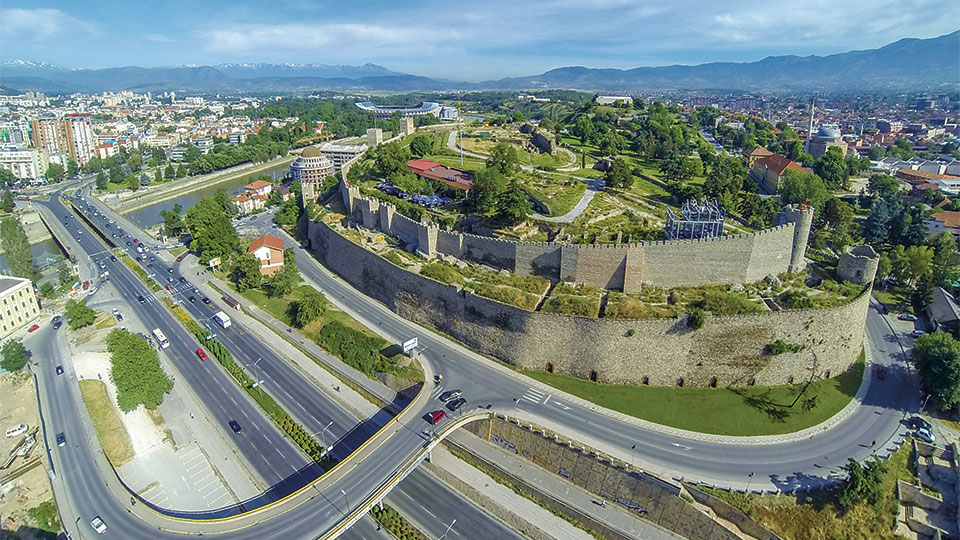
THE MEGALITHIC OBSERVATORY KOKINO
The Megalithic Observatory Kokino is located about 30 kilometers northeast of Kumanovo . This site has a diameter of 100 meters and is scaled on two levels underneath the mountain peak Tatikev Kamen at an altitude of 1013 m. When discovered in 2001 it was believed to be a special mountain sanctuary from the Bronze Age. A detailed archaeo-astronomical research carried out afterwards showed that the locality has all the characteristics of a holy place but also of an older observation of celestial objects.
The most important characteristic of the observatory includes positions for observation. Special stone markers used for marking all movement characteristics of the Sun and Moon have been found on the east horizon. The observatory used a method of static observation marking positions of the Sun at the winter and summer solstice, as well as the equinox. Archaeological excavations are carried out on the upper platform on which valuable material has been found, ceramic fragments mostly, but also animal bones, pyramidal weights, fragments of two hones (grind stones), made of filitic slate and kelt mould.

THE MUNICIPIUM STOBENSIUM-STOBI
The historiographical records and the archaeological excavations give us the opportunity to build up a proper historical picture of the continuous habitation and the events linked to Stobi.
The discovered remains from the archaic and the classical period probably mark the beginning of the town. Their small quantity and the lack of written sources do not allow certain conclusions about the settlement and its size.
The earliest written evidence of Stobi is found in Livy’s Ab Urbe Condita. It refers to the triumph of Phillip V against the Dardanians. Livy says that the battle happened near Stobi in 197 BC. His second information about Stobi takes us to the Roman occupation of Macedonia and the year 167 BC, when Stobi becomes the main trade center of salt in the third meris. The archaeological excavations revealed enough data from the Hellenistic settlement and its necropolis which allows us to follow the further development of the town.
The trade and the location of Stobi were the main impulse for constant development during the Roman rule.
THE ANCIENT TOWN OF HERACLEA LYNKESTIS
Heraclea Linkestis is an ancient town situated on the southern part of the city of Bitola, at the base of Baba Mountain. The name was given by Heracles, the mythical hero and founder of the Macedonian royal dynasty Argeadi while adjective Lyncestis meaning "Linkestidska" comes from the name of the region Lynkestidia in where the city was found. The city was founded in period IV century BC, by the Macedonian king Philip II of Macedon.
Today on the ground of Heraclea the remains of more sacred objects are found, decorated with floor mosaics made in opus sectile and opus tessalatum, dating from the 5th and 6th centuries. It is a small basilica (A), civil basilica (B), the great basilica (C) located about 250 meters from the downtown area of Heraclea, despite that, here are found early Christian and medieval tombs, then portico courtroom from the Roman period (2nd century VN) bath from the Roman period (2nd century VN), theater from the Roman period (2nd century VN), episcopal residence from early Christian times (4 to 6th century), city tap water from the time of Justinian (562). In its place today are held and various cultural events. It is open for visits every day from 8 to 19 pm with advance notice.

KING MARKO'S TOWERS - PRILEP
Marko's Towers (Markovi Kuli) are situated to the north-west of the Prilep, Macedonia just above the suburb Varoš. The locality of Marko's towers is located in one of the most picturesque medieval citadels in Macedonia. It is a 120-180 m high hill, surrounded by steep slopes covered with minute granite stones. One can reach the upper part of the former settlement from its north and south side.
During the four-decade archaeological research, remnants indicating the existence of an early antique settlement - Keramija, were found. In the Roman period, this small village settlement expanded into the southwest area, which is suggested by the several marble ornaments of an early Christian basilica. The rampart on this terrain dates from the 13th and 14th centuries and is in good condition. The walls are about one meter thick and were built of weaker limestone mortar and rest upon the large limestone rocks. Internal walls separated the acropolis into smaller areas. The palace of Volkašin and Marko was also situated here. Its north gate has a compound foundation, which speaks of numerous addings and reconstructions of the space. According to some historical findings, until the second part of the 14th century and even later, this fortress was defended by only 40 soldiers. The settlement was situated south of the acropolis on a surface of some 3,6 hectares. On its north side, there is a double gate, as well as a large guardhouse between the entrances. On the south wall there are three well-preserved towers. The lowest zone of the rampart consists of a row of short walls drawn in a broken line. In the west side, there are graves inserted into the rock. In the 14th century, this part served as a temporary refuge of the local population from the Turk invasion.

After the death of King Marko, in 1395, this settlement was taken by the Turk guards, and because of that, life in it completely perished. The inhabitants of the former settlement looked for refuge in the near regions. Consequently, at the foot of Marko's towers, a settlement with a rarefied structure developed. It was separated into several quarters and each had its own church. This new settlement from the 14th century took the name of Varoš, a name under which it still exists today.
OHRID, THE ANCIENT LYCHNIDUS
The existence of the ancient town of Lychnidos (today’s Ohrid) is linked to the legend of the Phoenician Cadmus who, banished from Thebes, in Beoetia, fled to the Enhelians and founded the town of Lychnidos on the shores of Lake Ohrid. Lychnidos and its wider area were inhabited by the Illyrian tribes lead by the tribe Desarets. Philip the Second, the father of Alexander the Great in the year 353 invaded this city and it is than that Lychnidos is mentioned, as a name of the Ohrid Lake. An inscription on a stone has been found dating from those days where the citizens are mentioned as Lychnideans.
The eldest historical information about the city Lychnidos dates from the year 217 BC and they are about certain roman military operations on these grounds. Before these events the city has been under the reign of the Macedonian emperors. The subsequent history of Lychnidos is full of interesting events. In the 208 a certain Erop occupied it and in 196 BC it was the Iliric king Pleurat, ally to the Roman conquerors.
Its name is mentioned in 170/169 BC as a Roman military base – period of many combats with the Macedonian king Persey. Ever since the time of the Macedonian kings Lychnidos was known by its coin making. On the one side of the coins there was the Macedonian shield with a star in the middle, and on the other side a kohlrabi and the inscription Lihnidion. Only two of these rare coins have been found, one is in the Institute for protection of the cultural monuments – Ohrid, and the other in Istanbul (Czarigrad).
BARGALA - STIP
The antique city Bargala still remains the main source of material from the ancient period. Bargala city is also mentioned in the acts of Halkedonskiot conclave 415 years. The Name of this city mentions an inscription of 371 yr., Which is a memorial plaque for raising the city's port. The plate was found in the locality Hanche, on the left bank of the river Bregalnica Dummy Karbinci. This monument gives information where the ancient city Bargala was located. The name of the city is of Thracian origin.
The old ancient settlement with urban character called Bargala was located in Dolni Kozjak. This city at the end of the 4th century, served as a military camp of the Roman legions in the conquest of the east. Later was demolished. Residents raised a new city Kozjachka River in Upper Kozjak, as evidenced by archaeological findings.
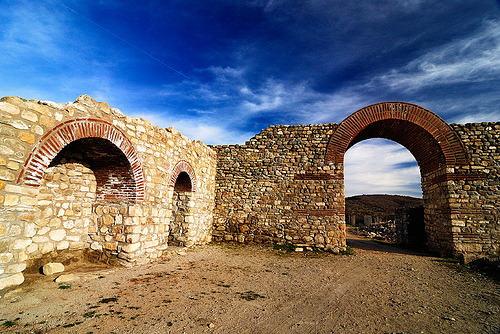
The city became an episcopal seat in the 5-6th century. The city Bargala's was demolished ,but then it was quickly settled. The church tradition of the old episcopal seat continued in Slavic period in this region. More recently, he archaeologists from the Institute and Museum in Stip discovered another basilica from the 6th century. By Bargala having three basilicas. Moreover, it is discovered a winery in the northeastern part of the excavations. Bargala still remains as one of the most ancient historical sites and endless inspiration for archaeologists from Macedonia.
ISAR FORTRESS – STIP
Isar Fortress is a special landmark for the city. It is elevated 150m above the level of the river Bregalnica. In 2009, researchers discovered 30 meters of the tunnel that leads to the top of the Isar River. This confirmed the most famous legend of Shtip, the conquer of the city through a secret tunnel under Isar. Studies in the last period only confirm about the deep history.
The goal is to carry out conservation and reconstruction of the fortress, which by the end of 2011 should be fully lit. It is located on the left side of river Otinja, tributary of river Bregalnica, which passes through the town of Stip.
Location Astibos archaeological has been confirmed by numerous stone monuments from 2 to 6 century. Since than the tunnel originates, blasted through the granite rocks from the top of Isar to Western Bregalnica foot level. Remains of an early Christian basilica from the 6th century have been register in the eastern foot od Isar.
STIBERA ANCIENT CITY
The temple consisted of nave and lobby. Its walls were built of stone and solid plaster, and the foundations were solid and massive. The method of building the nave is typically Roman. From the discovered architectural buildings the ancient gymnasium parcel out. It consists of two separate buildings: Heroes sanctuary and peristyle lobby and Exedra.
SAMUEL'S FORTRESS
The fortress in Ohrid was named after Czar Samuel due the fact that one period of his region he had chosen Ohrid as the capital of his kingdom. The fortress is a profane edifice inseparably connected with the entire history of Ohrid from the oldest periods till day. The town Lychnidos and the fortress for the first time where mentioned by Livy in 209 B.C., during the region of the Macedonian king Phipip V. This data tells that at the end of the 3 rd century B.C., the fortress was fully erected and functioned in the crucial moments in the history of the town Lychnidos (Ohrid)
The present day appearance of the fortress with its size most probably was established in the 4 th century A.D., as visible from the building technique of the opus mixtum ( brick laid in four and three rows and delineated by lime mortar). Accounts in the historical sources tell that this type of a city fortress had a powerful defence role, and this is why in the year od 479, Theodoric Amali the king of the East Goths during his campaign from Macedonia to New Epirus was not successful in occupying Lichnidos, since “the town was laid in a fortress and had abundant (water) sources inside the walls”.
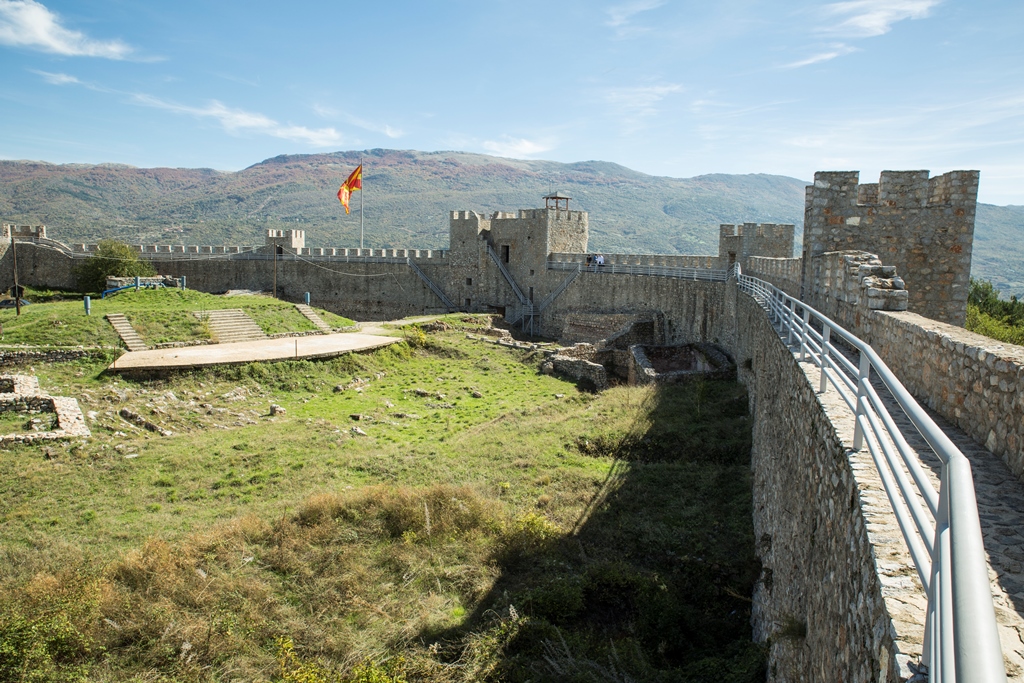
The fortress depending on the historical circumstances was more or less in focus, it was restored or demolished. Nevertheless, the space surface from time of the Late Antiquity remained generally unchanged; accepted for authentic form of the central part, the construction of the citadel that took place in the late 10 th and early 11 th century. This was the period of czar Samuel, when Ohrid became the capital of the first Macedonian – Slavic kingdom, even though in the historical science has viewed this with a different overtone. After Samuel’s death in 1014, without struggle Ohrid was taken by Basil II, so the fortress was left undamaged. In the second half of 14 th century, namely the period of the governing of the great perish Andrea Gropa with the region of Ohrid, the citadel was restored and enforced.
Event Calendar
Video gallery, accomodation, promote your service, promote your service.
Service type: Select your service type Adventure Tourism Rural Accommodation Accomodation Rent a car Taxi service Restaurants Wineries Travel agencies Tours Events Tourist Guides
Activity: Select activity type Hotel * Hotel ** Hotel *** Hotel **** Hotel ***** Hostel Resort Camping Villa House Cottage Apartment Room Restaurant Trade Culture Education Animals Art Backpacking Bungy Canyoning Climbing Cycling Diving Free fall Hiking Homestay Horseback riding Hot air ballooning Kayaking Overlanding Paragliding Rafting Safari Sailing Skiing Skydiving Snowboarding Surfing Trekking Ziplining Season tour: Please select tour type Season tour - Spring Season tour - Summer Season tour - Autumn Season tour - Winter Adventure tour City tours Cultural tours Generation tours - Youth Generation tours - Senior Name of service: Email:
Telephone: Website:
Address: City: Languages:
Description of event: Date of event: Website (link):
Add up to 3 images.
Please enable JavaScript to use file uploader.
Image file: Image file: Image file:
Description of your service:
Historic Sites in Republic of North Macedonia, Europe
Republic of north macedonia historic sites.
- Churches & Cathedrals
- Points of Interest & Landmarks
- Monuments & Statues
- Sacred & Religious Sites
- Historic Sites
- 5.0 of 5 bubbles
- 4.0 of 5 bubbles & up
- Budget-friendly
- Good for Kids
- Good for Big Groups
- Good for Couples
- Hidden Gems
- Honeymoon spot
- Adventurous
- Good for a Rainy Day
- Good for Adrenaline Seekers
- Things to do ranked using Tripadvisor data including reviews, ratings, photos, and popularity.
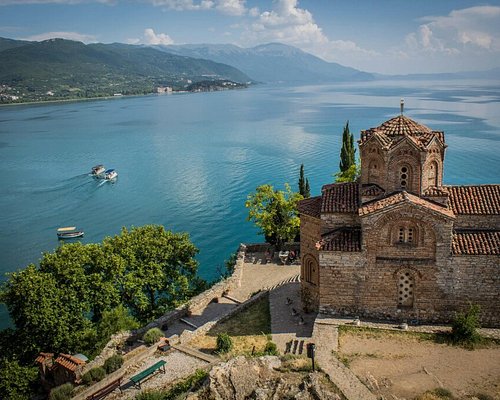
1. St. Jovan Kaneo

2. Monastery of Saint Naum
3. Old Bazaar - Skopje

4. Plaoshnik

5. Skopje Fortress Kale

7. The Bitola Clock Tower
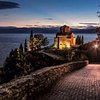
8. Kapan Han

9. Early Christian Basilica

10. Old Mavrovo Church
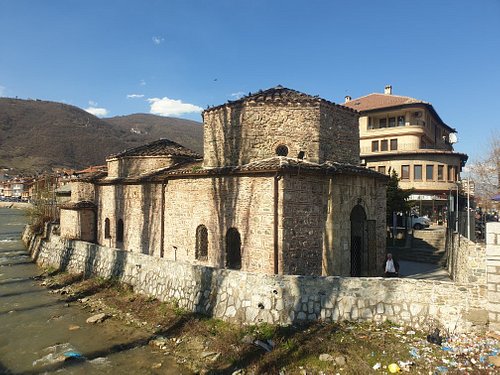
11. Isa Beg Hammam
12. The Zebrnjak Monument

13. Ancient Town of Scupi
14. Clock Tower

15. Forteresse de Kitino Kale

16. Feudal Tower

17. Marko's Monastery

18. Chinar Tree

19. Skopje Daily Tours
20. Roman Thermal Village of Bansko
What travelers are saying.

Skopje, Macedonia: The city that bridges two worlds
Skopje, Macedonia is a city whose name we usually hear tied to international news. Located in the heart of the Balkans, the conflicts and turmoil this city has suffered don’t do its beauty, spirit, and history justice. It’s time to go beyond the headlines and look at what makes this striking metropolis tick.
Where to Visit in Skopje, Macedonia
There’s no shortage of history and adventure to explore in Skopje , from its settlement more than 2500 years ago to the 527-year-long Ottoman reign and the more recent exploits of Zorba the Greek or the revolutionary efforts of Goce Delchev, it’s an incredible place.
Skopje’s not a big place – with an estimated 700,000 inhabitants, it’s the biggest city in Macedonia (and home to roughly one third of the nation’s population, it’s still a small city by international standards. That’s a good thing. In addition to being small, it’s walkable, designed for the pedestrian, and its streets are lined with linden and Japanese cherry trees, monuments, and sculptures.
To get a decent understanding of Skopje, you have to see the natural wonders that surround it, and the mix of architectural styles and historical periods that it holds.
Matka Lake and Vrelo
St. Andrew’s Monastery on scenic Lake Matka. Photo by anjči .
Formed by a dam on the Treska River, Matka Lake and the surrounding canyon is one of the most popular day trips for visitors to and locals from Skopje. It’s the first man-made lake in Macedonia, and we’re happy it exists. Less than an hour outside the city striking rock walls rise out of pristine mountain water. Caves and karstic formations dot the surrounding landscape, and several unique animal species live here. It’s a peaceful place, but there is plenty to see and do.
One of the caves in the canyon is Vrelo. It’s a fascinating stop for tourists, and was named one of the top 77 natural wonders of the world. The cave itself holds two lakes and extends both below and above the water. But Vrelo isn’t the only ancient and beautiful place to explore when you visit Matka. St. Andrew’s Monastery is another great stop. Built in 1389, it’s a stunning piece of artwork unto itself, Matka Monastery is nearly as old and equally stunning, and St. Nicholas Monastery dates at least to the 1600s, but is more known for the impressive views it offers of the canyon below.
For a relaxing adventure, try kayaking, fishing, or swimming on the river. Looking for an adventure on dry land? The hiking is incredible.
Skopsko Kale
Skopsko Kale in Skopje, Macedonia. Photo by Dominik Tefert.
Situated above the modern city of Skopje, the Kale Fortress (a bit redundant, since “kale” is Turkish for fortress…) demonstrates something history will drum into your head in time. Once a good fort, always a good fort. First inhabited by prehistoric peoples, Skopje’s impressive stone fortress was first used as a fort under the ancient Romans. They had the brilliant idea to create a reinforced structure after an earthquake destroyed most of the city of “Skupi” in 518. Then came the Ottoman empire. They remodeled, reinforced, and expanded the fort in the 10 th and 11 th centuries.
And then, the massive earthquake of 1963 struck Kale, crumbling many of the walls, and leaving the site a bigger ruin than it already was. Although occasionally closed for repairs and renovations, the fortress is a welcoming place and guides are on hand to explain its history – good thing, because it’s a fascinating place, although there are no museums on site.
If you’re a camera junkie, make sure to check out the views from Kale. There’s no better place to capture panorama shots of Skopje (except, perhaps, the Millennium Cross).
Sveti Spas – Home to God and Revolution
Speaking of crosses…Sveti Spas is the oldest church in Skopje. It predates Ottoman rule, and rumor has it that at one point it was shrunk in order to stay in line with an Ottoman rule that dictated no church could be bigger than a mosque.
Outside, it’s a modest and quaint setting that you’d love to grab a bite of baklava by and just sit and enjoy the view. It’s topped with a wooden belltower, and a well-maintained garden. Inside, you’ll find the church is a bit more – revolutionary – than most. Literally. This house of worship holds one of Orthodoxy’s most stunning and intricate icons, carved in the 1600s and restored in the 1800s. It’s also the final resting place of national hero Goce Delchev, and is home to a small museum of Macedonian revolutionary history. You decide – military museum or religious house of worship. Either way, it’s worth the visit.
Kursumli An, Daut Pasha Hammam, and the Old Bazaar
Kursumli An in Skopje is a fascinating ruin, but not an abandoned one… Photo by Darko Nikolovski .
From hosting weary travelers to bathing harems and selling wares, the Muslim architecture of Skopje, Macedonia has played a colorful role in the city’s history. Kursumli An is one of the oldest Ottoman structures in the city, and was once topped by a large dome. Like the other ancient Ans in the city, it was designed to provide shelter and security to traveling merchants, traders, and visitors. As a result, few windows were included in the structure.
Today, the main courtyard is open to the air, and you can feel the history of traders, travelers, and explorers who passed through its walls when you stop for a visit. It’s rarely open, but when it is, watch for the exhibits of grave stones from the Museum of Macedonia – although they may seem a tad spooky, they offer a unique window into the blend of cultures that once lived in this area.
Daut Pasha Hammam was once the bath house for a full harem. Today, it is a stunning architectural remnant of a bygone era. The ceiling is dotted with stars, and the building itself hosts the work of famous artists as a part of the National Gallery of Macedonia. From the outside, it’s a metal-roofed stone structure that looks humble, although impressive in size. Inside, the star-shaped skylights and art-bedecked walls will put your imagination in charge.
The Old Bazaar is the oldest Ottoman bazaar in the Balkans, and its streets are still lined with shops where old men sit drinking strong coffee and eating honey cakes as the day wears on. You’ll find a captivating mix of goods here, although little (if anything) is made onsite anymore. Some of the bazaar’s streets are covered, and the postcard-like setting of this area is a favorite tourist spot.
Macedonian Square, the Stone Bridge, and the Museum of the Macedonian Struggle
Kameni Most, or “The Stone Bridge” was once a bloody symbol, but today is a bridge between two worlds. Photo by Rašo .
Macedonian Square is a strange intersection of new and old, East and West, Christian and Muslim. The Stone Bridge, once the site of Ottoman executions, is now the bridge between two worlds. It connects new Skopje with the old town, and leads into the heart of the modern Macedonian Square, a center for activity, culture, and education. Just a few blocks away, the Old Railway Station is now home to the Skopje City Museum, and provides a permanent reminder of the January 26, 1963 earthquake that turned this city into a heap of stone rubble.
At 5:17 in the morning, the clock on the railway station’s wall stopped. More than 1,000 people died, and Skopje would never look the same. Much of the surrounding city owes its current appearance to an architecture contest held to help the city recover. Japanese architect Kenzo Tange’s whimsical, futuristic vision came to life here shortly after the quake, but was never fully implemented.
Closer to the Stone Bridge, and surrounding Macedonian Square, a mix of architectural styles is still visible. Recent projects here have stirred criticism regarding the government’s frivolous spending and kitschy taste, but one thing is certain – the square itself draws tourists and photographers in droves.
Across the Vardar River, there are some interesting pieces of architecture, including the Palace of the Youth Center Karposh and the Museum of the Macedonian Struggle. Providing a visual record of Macedonia’s history, its collections are unique and intriguing, and the grounds of the museum are also worth walking through.
Memorial House of Mother Theresa
Built in 2009, this unique structure is whimsical in its design. Paying homage to one of Skopje’s most famous natives, it commemorates the life of Gonxha Bojaxhiu – known to most of the world as the Nobel Prize Winning nun from the ghettos of Calcutta, Mother Theresa. It’s worth the stop, regardless of your religious leanings (or lack of).
Where to Eat in Skopje, Macedonia
Hungry? The traditional cuisine in Skopje, Macedonia is the perfect mix of East and West. If you’re up for a taste of the local cuisine, head over to Stara Kuka. Looking for something a little more…fresh? Check out Canyon Matka. Here’s why we think you’ll love them:
Stara Kuka – The Old House
Built in 1836, this restaurant housed six generations of the Jovanovich family before it became a dining facility. It claims to be the oldest traditional house in Macedonia, and offers a small museum on the grounds for true history buffs. The restaurant’s modern kitchen includes a traditional wood stove, and Macedonian folk music can often be heard here, as well.
As for the food, try the Shopska salad and the Turli Tava or the traditional Pastrmajilija for a taste of old Macedonia. Don’t leave without trying dessert, though! Call me a chocoholic, but I’d opt for the hot chocolate cake. It may not be as traditional, but come on. It’s chocolate!
Canyon Matka
Do you like fresh food? Like trout that’s just been caught? There’s nothing better after a long day on the water than Canyon Matka’s trout. The Canyon Matka Hotel & Restaurant is a stunningly beautiful place to dine, with incredible views of Matka Canyon. But the trout…yum! If fish isn’t your thing, I hear the duck breast with cherry jam is good, and rumor has it that the filet mignon isn’t bad, either.
Word to the wise – check your bill. The waiters here have a bad rap for tip scrounging, and the service isn’t always the best. The food and the views are unbeatable, though.
Ever been to Skopje? Tell us all about your trip. Loved the article? Share it! If you haven’t been there yet, contact Explore Macedonia to plan your trip.
Map of Skopje, Macedonia
Related posts:
macedonia skopje
Christina Boyes
Send us a message here cancel reply.
Your email address will not be published. Required fields are marked *
Skopje is amazing city! Must visit!
Truly remarkable city!
National Geographic content straight to your inbox—sign up for our popular newsletters here

Fishing boats sway in the waters of Lake Ohrid, a World Heritage property.
Explore 10 of Macedonia's Top Natural and Historic Treasures
A crossroads between East and West, this tiny country is a treasure chest of historical monuments, natural wonders, and vibrant culture.
Macedonia might be one the world's most fascinating, and underpublicized, places. A former Yugoslavian republic, this tiny country—barely bigger than Vermont—is tucked between Greece, Albania, and Bulgaria on the Balkan Peninsula.
Modern-day Macedonia is a melting pot of Persian, Greek, Roman, Ottoman, Serbian, and Soviet flavors. Friends linger over coffee in outdoor cafes as throaty Slavic chatter drifts amid curls of cigarette smoke and clinking glasses of rakija . Rounded domes of Orthodox Christian churches share the skyline with towers of Muslim mosques, limestone-crusted mountains rise over quiet villages, and glittering lakes punctuate the wild countryside.
Whether you’re a city-dweller or outdoor adventurer, here are 10 reasons to plan a trip to Macedonia:
Hike Mount Ljuboten
The Shar Mountains rise to the clouds for 994 miles along northwestern Macedonia, reaching upwards of 8,000 feet. Mount Ljuboten’s prominent pointy peak (8,196 feet) demands attention. The five-hour hike to the top can be completed in a day. Villa Ljuboten Mountain Resort , a simple guesthouse perched at the treeline, at an elevation of 5,500 feet, is a great base. From there, follow soft, wildflower-dotted meadows to the windy summit. Soak in fantastic views of Macedonia and Kosovo before returning to the villa, where a warm fire and the hearty aroma of a home-cooked feast greet weary hikers.
Explore Skopje

A bronze statue of Alexander the Great is the centerpiece of Skopje's main square.
Home to more than half a million people, Macedonia’s capital is a quirky blend of old and new. The first landmark to catch your eye is the 217-foot-high Millennium Cross , which crowns Vodno Mountain. A cable car whisks sightseers to the summit for easy viewing.
Also commanding attention is Kale Fortress , which has been presiding over the city since the sixth century A.D. Amble up the hill to venture inside the walls, partially built with stones from Scupi, a nearby ancient Roman city that has been crumbling into red poppy fields since an earthquake in A.D. 518.
A short stroll brings you to Skopje ’s downtown square, a unique medley of architectural styles. The scene is a product of Skopje 2014, a $700 million government project intended to spruce up the city. Instead, it earned kudos for being kitsch. Looming statues—including a huge Alexander the Great—are juxtaposed against baroque and neoclassical buildings and an Arc de Triomphe. Spouting fountains and colored lights add to the pizazz.
Cross the Stone Bridge and explore the Old Bazaar, where narrow, cobblestone streets have been alive with commerce since the 12th century.
Slither through a cave
Macedonia's limestone karst landscape is like Swiss cheese, riddled with more than 300 caves. Don a spelunking suit and squeeze through a small hole in the rocks to enter the underworld at Gorna Slatinska , a quarter-mile labyrinth that lets you through only if you’re willing to slither. By light of a headlamp, duck under eerie stalactites and dodge tiny bats that dangle from the ceiling. The local caving society, Ursus Speleos , researches caves in the area and can show you what they’ve found.
Rock climb or kayak in Matka Canyon

A boat glides past the emerald landscape in Matka Canyon.
Less than 10 miles from Skopje is Matka Canyon , where the Treska River weaves past limestone cliffs before pooling in the emerald Matka Lake. Drive to the end of the road and nab a table on a stone terrace at the Canyon Matka Hotel’s lakefront restaurant . Rent a kayak and paddle upriver to Vrelo Cave , a deep chasm with lit pathways and wooden steps that leads to underground lakes. For those with less pep, motorboat tours are available.
Matka Canyon is also a magnet for rock climbers. A 40-minute hike leads to popular routes, many near the tiny Monastery of St. Nicholas Shishovski. If you’re not up for scaling rock walls, take a seat on the cliffhanger deck and watch. Macedonia Experience can show you around.
Hike the hills of Mavrovo National Park
Mavrovo is Macedonia’s largest national park, cradling the country’s highest peak: the 9,068-foot Mount Korab. Bears, lynx, wolves, deer, and 129 bird species roam the rolling forest and highlands of the park. Base yourself at Hotel Tutto , which is tucked into a hillside in the Radika River Valley. From there you can explore the park by foot, horse, mountain bike, or kayak. Winter is also a good time to visit—with your skis in tow.
Dive into history in Ohrid

The Church of Saint John at Kaneo overlooks the calm waters of Lake Ohrid.
Click your heels in Ohrid and you might think you’ve been transported to the Mediterranean. The crystal clear waters of Ohrid—one of the world’s oldest lakes—date back more than a million years. Tucked along the lush, hilly shore is the city of Ohrid, home to 56,000 people and one of the oldest settlements in Europe. The entire region is designated as a UNESCO World Heritage property.
Ohrid’s importance in religious history is evident in dozens of historic churches and monasteries, such as the Church of Saint John at Kaneo , which occupies a prominent perch on the edge of the lake. While stunning, it might be outdone by St. Panteleimon, the world’s oldest Slav monastery, where the intricate rockwork has been meticulously restored.
Wander the bustling streets of the Old Bazaar before venturing farther afield. To the south, Galicica National Park straddles a big hump between Ohrid and Prespa Lakes, which can be viewed from the 7,395-foot peak of Magaro Peak. Afterward, hop on a boat at Prespa Lake to Golem Grad, also called Snake Island. Yes, there are snakes, and more than 200 species of birds, including pelicans. Also check out the beautiful frescoes in the 14th-century St. Peter’s Church.
Paraglide Krusevo’s thermals
Krusevo , Macedonia’s highest city at an elevation of more than 4,400 feet, is nestled along a ridge that rises from the broad Pelagonia Valley, a geography that creates steady updrafts perfect for paragliding. Colorful wings paint the sky like brushstrokes—swirling, climbing, and gliding. Conditions are so prime that the World Air Sports Federation held the European Paragliding Championship here in 2016. If you’re looking to learn or give it a whirl, Heli XC can assist.
Visit the Painted Mosque

The interior of Tetovo's Painted Mosque is decorated with intricate geometric designs.
Every other religious monument in Macedonia might pale in comparison to the Painted Mosque , a 15th-century masterpiece in Tetovo. The exterior’s vibrant pattern of rectangular paintings framing lattice windows is just a hint of the grandeur within. Slip off your shoes and step inside. Your jaw might drop at the sight of the swirling geometric artwork that covers every inch of the walls and balconies.
- Nat Geo Expeditions
Indulge in food and drink
One thing is for certain in Macedonia: You won’t go hungry. Forget about the clock at mealtime and prepare for a feast. Macedonian cuisine blends Turkish, Mediterranean, and Balkan themes. Burek , or “salty pie,” is a mainstay— a warm, doughy treat filled with spinach or cheese. It often starts a meal, along with ajvar (a red pepper and garlic sauce) and shopska salad of tomato, onion, cucumber, and green pepper topped with tangy sheep cheese.
Don’t be fooled into thinking the starters are the whole meal. The main course might be a hearty bean stew, peppers stuffed with ground meat, grilled lamb, or perhaps all three. Pair it with fine wine from one of the country’s 84 wineries—or your host’s home brew.
The national drink is rakija —a fiery brandy that burns your throat. You might have one too many, as Macedonians seem to find many reasons to say cheers.
Meet for coffee
“Meet for coffee” in Macedonia is actually code for coffee, beer, dinner, or even just hanging out. Macedonians love to socialize. Meet someone new, and you might make a friend for life.
Avery Stonich is a freelance writer based in Boulder, Colorado. She has traveled to more than 50 countries in search of adventure. Visit her website at averystonich.com and follow her on Twitter and Instagram .
Related Topics
You may also like.

A taste of North Macedonia, from flaky burek to rakija and farmhouse cheeses

This sunny German city should top your summer travel list
Introducing nat geo kids book bundle.

7 of the best places to stay in Canada

The best Father’s Day gifts for adventure-loving dads

A gastronomic guide to Georgia — the country's best wineries and restaurants

Get ready to hit the road with these road trip essentials

The essential guide to visiting Canada
- Environment
- Paid Content
- Photography
History & Culture
- History & Culture
- History Magazine
- Mind, Body, Wonder
- Terms of Use
- Privacy Policy
- Your US State Privacy Rights
- Children's Online Privacy Policy
- Interest-Based Ads
- About Nielsen Measurement
- Do Not Sell or Share My Personal Information
- Nat Geo Home
- Attend a Live Event
- Book a Trip
- Inspire Your Kids
- Shop Nat Geo
- Visit the D.C. Museum
- Learn About Our Impact
- Support Our Mission
- Advertise With Us
- Customer Service
- Renew Subscription
- Manage Your Subscription
- Work at Nat Geo
- Sign Up for Our Newsletters
- Contribute to Protect the Planet
Copyright © 1996-2015 National Geographic Society Copyright © 2015-2024 National Geographic Partners, LLC. All rights reserved

5 Marvelous Historic Sites Of Republic...
5 marvelous historic sites of republic of macedonia.
The small south eastern country of Republic of Macedonia is becoming a favorite tourist destination of Balkan region now a days. This country has different types of great attractions for visitors. But it has a rich history too. By the name of Macedonia the word that comes into mind is Alexander the Great. But the birth place of Alexander known as Macedonia is different from this republic of Macedonia. Alexander’s Macedonia is a territory within Greece. But this Macedonia once came under the occupation of Greek kingdom of Macedonia too. Apart from this kingdom, Macedonia was also occupied by Roman empire, Byzantine rulers and Persian empire etc in different historic age. It was inhabited in prehistoric Neolithic age too. If you love visitng historic places then you can visit several sites in Macedonia that have relics of different historic era. Here is a list.
Below Are 5 Marvelous Historic Sites Of Republic Of Macedonia:
1. prehistoric settlement of tumba madzari, skopje.
It was already mentioned that Macedonia was inhabited by prehistoric people in Neolithic age. According to historians this community was an agricultural one. Excavations carried out in last century had unearthed several interesting articles and relics connected with this community. A model village has been constructed that can be seen in north eastern Skopje. Historians say that this village can be dated back from 6000 to 4300 BC. According to historians the most striking feature of this community was worship of mother goddess. Articles found from excavation have proved this.
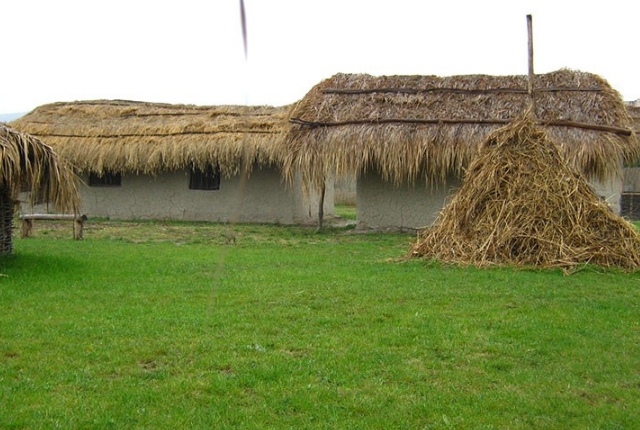
2. The City Of Heraclea
If you want to see ruins which are connected with Greek Macedonian kingdom then you should visit the ruins of Heraclea near city of Bitola in republic of Macedonia. Hearclea was founded in 4th century BC by king Phillip 2 of kingdom of Macedonia. It was established in the name of Heracles or Hercules. In 2nd century BC it came under the occupation of Roman empire. Some changes were done in the administration of the city by Romans. Now a tourist can see exquisite remains of buildings, columns, bath, circus and spectacular mosaics that instantly catch eyes. A history loving tourist should not miss this site in Macedonia.
3. The Ruins Of Stobi
Stobi was a prosperous city of Macedonia. Though it flourished under Roamn occupation mostly but historians say that It was inhabited and developed before that era. Then Stobi was part of Persian rule. Stobi became Roman colony in 69 AD during reign of emperor Vespasian. It continued to thrive till 6th century. Now tourist can see remains of Roman residents, columns, baths, theater, arts in forms of spectacular mosaic and some places of worship connected with Christian heritage. Ruins of Stobi is located in central Macedonia.
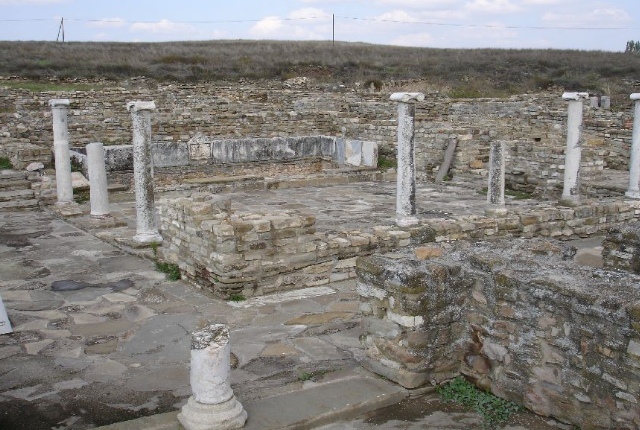
4. The Aqueduct Of Skopje
Aqueducts were built over a large region which brought water asto major Roman settlements. These structures are considered as signs of astonishing development of engineering and town development skills of Romans. Though historians have failed to make out what exactly this aqueduct system did during Eoman rule in Macedonia still it looks quite marvelous even now. This huge structure is one of the favorite tourists spots of Macedonia and Skopje. This aqueduct system is one of the largest in Yugoslavia region. It is located at a distance of 2 km from the city of Skopje.
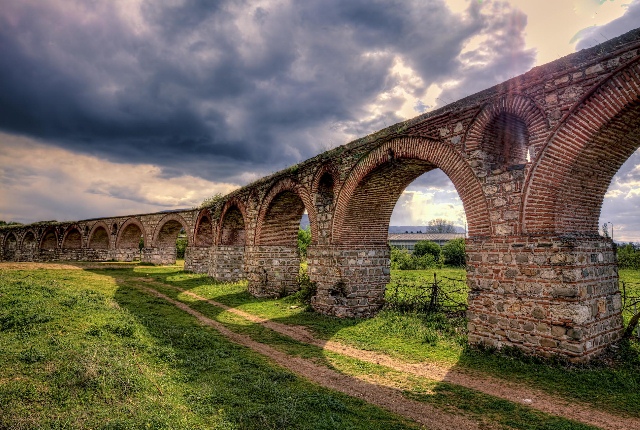
5. Marko’s Tower Or Castle
After visiting some ancient ruins or sites of Macedonia you can visit one of the historic sites that belongs to medieval age of the country. Like other European countries Macedonia also has several interesting castles. One of such castles is this Marko’s Tower situated near Prilep or the village of Varos. It was founded by medieval prince Marko on a hill that is almost 180 meters high. The specialty of this fortress was several towers, the walls were thick and built of limestone mortars. Now finely preserved ruins provide glimpse of that medieval glory. Historians say that though this castle was built in medieval period this spot was occupied or inhabited even before that and even in Roman time.
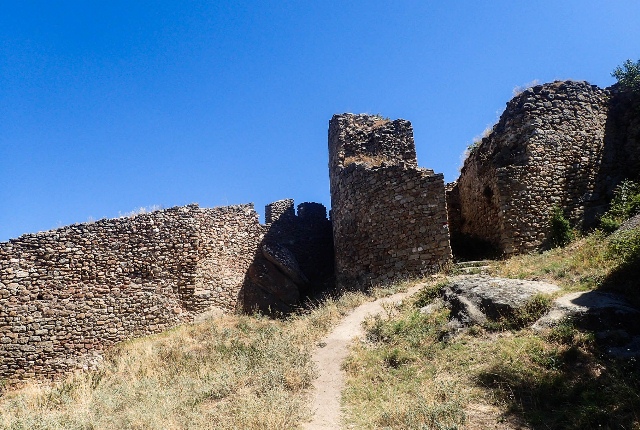
Leave a Reply Cancel reply
Your email address will not be published.
You may use these HTML tags and attributes: <a href="" title=""> <abbr title=""> <acronym title=""> <b> <blockquote cite=""> <cite> <code> <del datetime=""> <em> <i> <q cite=""> <s> <strike> <strong>

- Extreme Spots
- Cities in 3D
- All countries

- Cultural sights
- Festivals in Macedonia
- Attractions and nightlife
- Cuisine and restaurants
- Traditions and lifestyle
- Festivals and celebrations
- High-resolution maps
- Interactive map
- Map of cities
- Map of regions
- Map of sights
Cultural sightseeing in Macedonia. What to visit - museums, temples, castles and palaces
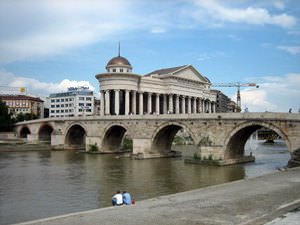
Fantastic City Tours and Excursions in Macedonia
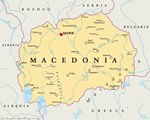
Famous sites of culture and history of Macedonia in photoset
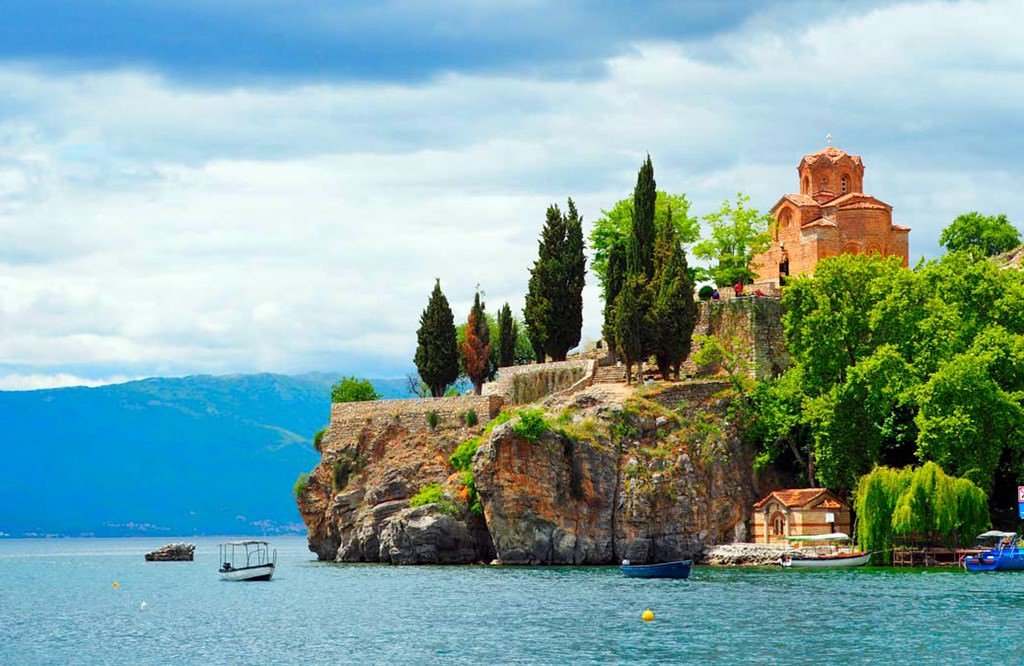
Culture and monuments in popular cities of Macedonia

Macedonia map of cultural and historical sites


A Complete Guide for Visiting the Country of Macedonia
- Post last modified: May 10, 2024
- Post author: Danielle Zito
- Post published: December 19, 2022
- Post category: Europe / Guides
Sharing is caring!
Are you looking for the best places to visit in Macedonia? Well, we're here to share everything we learned from our road trip through this Balkan country this summer.
Being a landlocked country, Macedonia is often overshadowed by its neighboring countries, but we're here to share all of the fun and unique spots to check out within the country.
In this guide we're not just going to share the best places to visit in Macedonia, but how to get around, how to stay safe, and all the other things you need to know before you go. Without further ado, let's jump right into our complete guide to visiting the country of Macedonia.
*Please note that this blog post may contain some affiliate links, which we make a small profit on, at zero cost to you. Links are only used on products & services that we've used and believe in, to give you the best buying experience. Purchasing from these links helps us to continue providing free travel guides for you- so thank you for your support!

Where is the Country of Macedonia?
The country of Macedonia is situated in the south east of Europe. It lies directly north of Greece , West of Bulgaria , and East of Albania . Kosovo also borders Macedonia to the north, and Serbia shares a border to its north east.
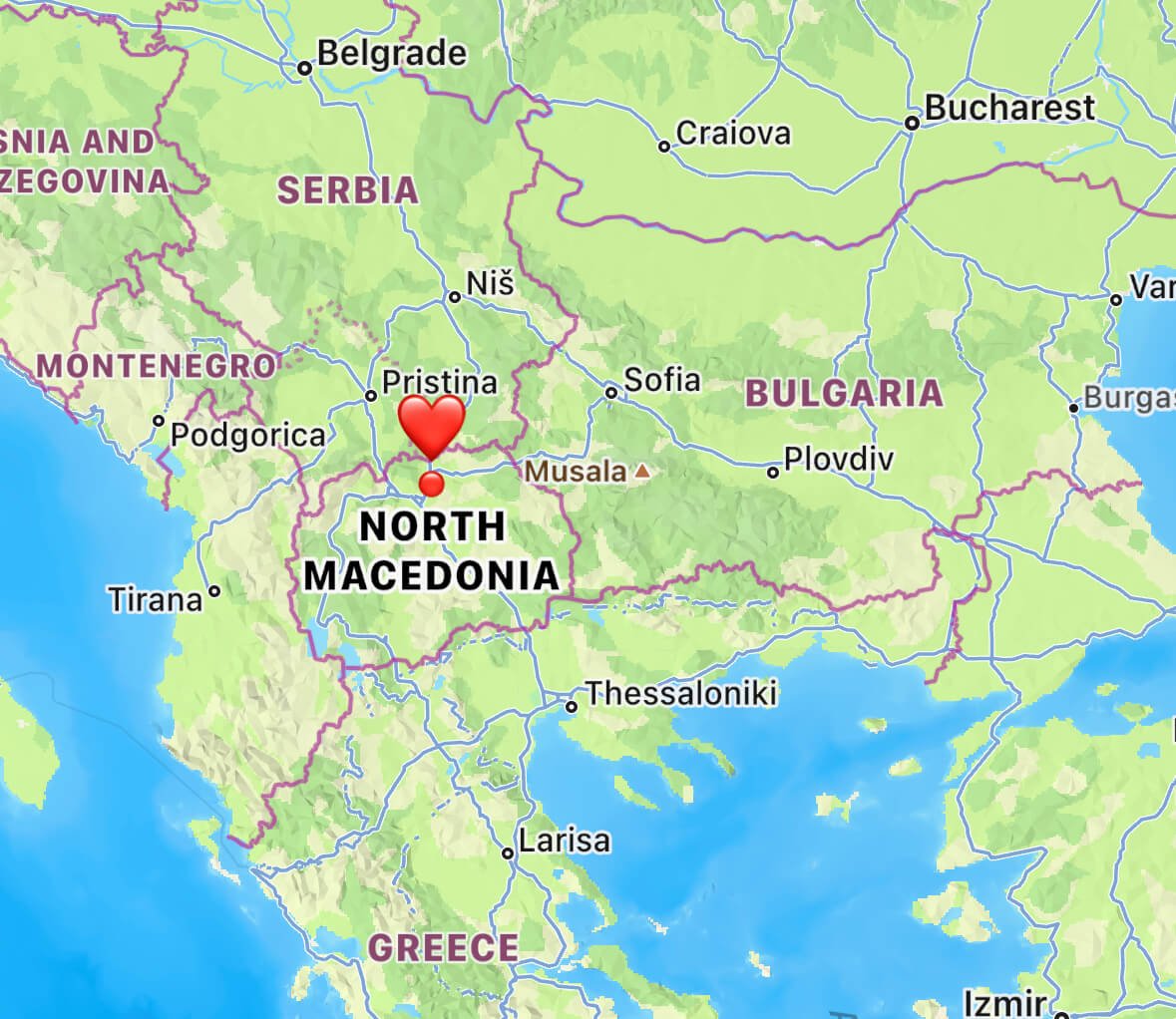
Macedonia is located in south east Europe.
How to Get to Macedonia
The biggest, and easiest city to start your trip to Macedonia is by going to Skopje , the capital of Macedonia. Skopje is easily connected to surrounding countries such as Serbia , Kosovo , and Bulgaria . If you're coming from Albania , the easiest place to begin your Macedonian travels is Lake Ohrid , which is right on the border with Albania .
Want to take a bus to Macedonia? Here are some popular routes that you can book:
- Sofia to Skopje
- Belgrade to Skopje
- Tirana to Skopje
Flying to Macedonia
The two international airports in Macedonia are Ohrid and Skopje , which is the main hub. Cities that fly direct to Skopje include Athens, Baden, Basel, Belgrade , Berlin, Bologna, Bratislava, Bremen, Brussels, Budapest , Cologne, Copenhagen , Dortmund, Eindhoven, Friedrichshafen, Geneva, Gothenburg, Hamburg , Istanbul , Izmir, London, Malmo, Memmingen, Milan , Nuremburg, Oslo, Paris, Rome , Stockholm, Treviso, Vienna , Warsaw, and Zagreb .
Cities that fly into Ohrid include Basel, Dortmund, Memmingen, Vienna , and Zurich .
Flight Tip: Using Skyscanner you can out from "your city" to "Macedonia". This way you can see which is the cheapest airport to fly to. Also, you can check the calendar to see which are the cheapest dates for flying.
Search for a flight to Macedonia:

Stay Up To Date📫
We have a non-spammy weekly newsletter, where we give travel tips, and exclusive content and discounts .
Entry Requirements for Macedonia
Before entering any new country, it's important to check the requirements to get in. Here are both the visa and covid requirements for visiting the country of Macedonia.
Visa Entry Requirements for Macedonia
Macedonia allows visa free access to all citizens from the EU, UK , US , and Canada, for a period of up to 90 days. If you plan on spending more than 90 days in Macedonia, you will need to apply for a visa at your local embassy.
Covid Entry Requirements for Macedonia
All Covid related requirements have already been lifted, so all tourists (whether they are vaccinated or not) can freely enter the country of Macedonia without any issue. When we traveled there in June, we also found that masks were not really worn much anymore.
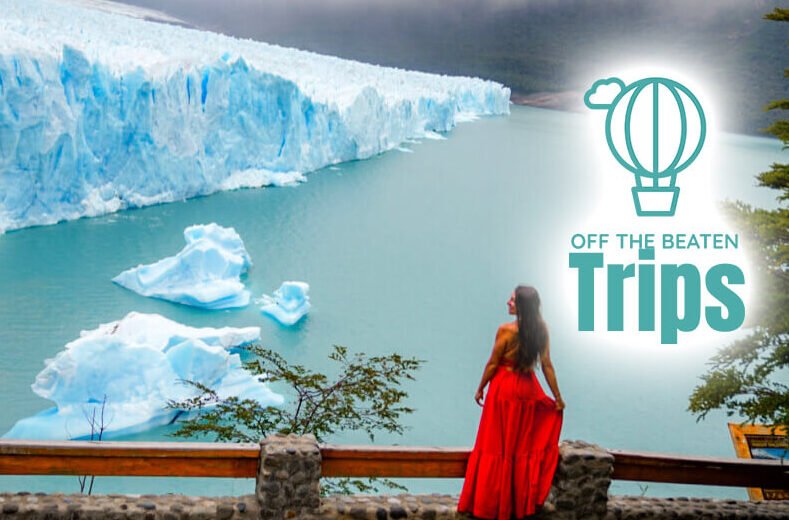
Looking To Travel Somewhere?
Off The Beaten Trips is our travel agency.
But this isn't anything like you've ever experienced before. You'll have an epic trip without having to break the piggy bank.
Unique locations. Epic adventures. Lifetime memories.
Local Adjustments
Whenever you are traveling somewhere new, there may be some things that differ from where you're coming from to keep in mind. Here are the local adjustments for Macedonia to know before you go.
The official language in Macedonia is Macedonian. It is very similar to the surrounding countries that speak Slavic languages such as Croatia or Serbia . Macedonians also use an adaptation of the Cyrillic script, so reading can be quite hard for those not familiar with this alphabet. If you visit bigger cities, you will find plenty of people that speak English, but if you visit smaller villages, it could help to have Google Translate handy.
The currency used in Macedonia is the Macedonian Denar. Currently (February 2024) 1 USD and 1 euro are both equal to about 57 Denar. Most hotels and restaurants throughout the country usually only use cash, as well any street vendors. You'll need to make sure to withdraw plenty of Denar from a local ATM, as it is what you'll be mostly using throughout Macedonia.
Macedonia uses the same outlets as the rest of the European countries , which are for plug types C & F. The standard voltage in Macedonia is 230 V, and has a standard frequency of 50 Hz. If you are from the US make sure to get an energy converter (not just an adapter), so that your electronics don't burn out.
Water Potability
All throughout Macedonia there is potable water, so you can drink from the tap or fountains in the cities. We suggest bringing a reusable water bottle so that you can fill up and stay hydrated while exploring.
Tipping Culture
Unlike many other European countries, Macedonia actually doesn't have a set tipping culture. Some people don't leave anything extra at all, while some others will leave just 100 or 200 Denar for very good service. It isn't typical to leave a tip anywhere, even restaurants and bars. If you are particularly satisfied with the service though, you can leave up to 10%.
Travel Planning Services
Travel More . Spend Less .
Let us help you plan your dream trip.
The Best Places to Visit in Macedonia
Now that you know the basics for before you go, here are the best places to visit in Macedonia.
Skopje is the capital, and main hot spot of Macedonia. This is definitely a place you'll want to either start or end your trip while visiting the country. Make sure you check out the beautiful architecture of the old town, browse the old bazaar, and grab a bite to eat at Senigallia, a restaurant located on a boat along the river.

Skopje is the most popular of all the places to visit in Macedonia.
Matka Canyon
Matka Canyon is one of our favorite places to visit in Macedonia. It's situated just a half hour south west of Skopje, making it the perfect day trip from the capital.
The main area of Matka Canyon has a boardwalk going along the side of the canyon, where you can find kayak rentals, boat trips, and even a restaurant that hangs over the water of the canyon.

There is even a cave that you can visit inside Matka Canyon.
Matka canyon offers plenty of other great things to do such as hiking trails, as well as a large area where families have picnics and spend the day cooling off in the river from the summer heat. There are plenty of kiosks and restaurants in and around the canyon, and even one that has a cave inside!
You can easily rent a car and go on your own, or get a tour to Matka Canyon from Skopje.
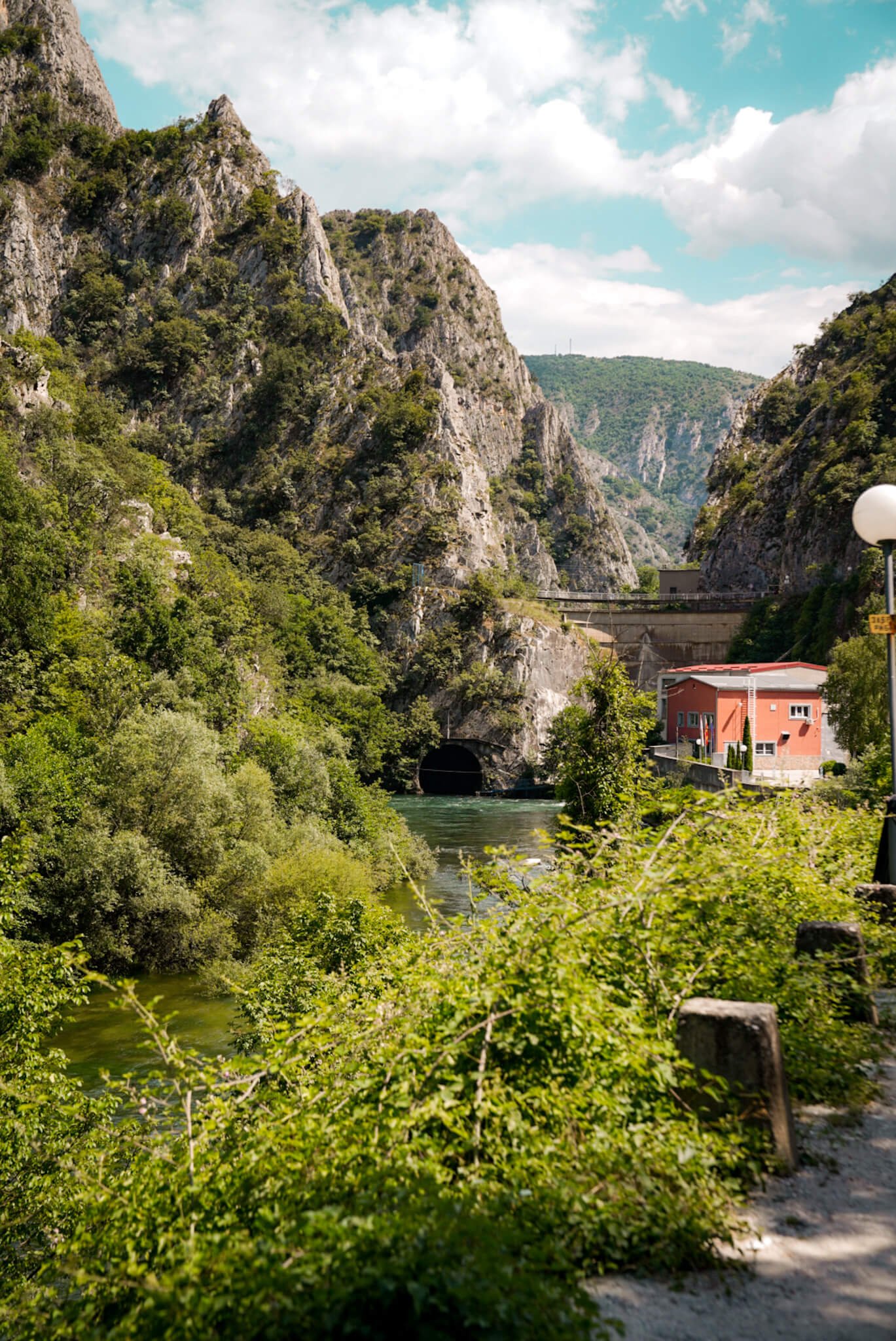
Matka Canyon is one of the most beautiful places to visit in Macedonia.
The Stone Dolls
Ever been to Cappadocia in Turkey ? Well, this hidden gem in Macedonia has similar formations to the famous Turkish ones. It's so underrated that we were actually the only ones there. Located in the north eats of the country, this is a great day trip from Skopje, or a short stop from the capital to Sofia in Bulgaria .
Want to visit a great restaurant nearby? Kuklika Etno Restaurant is located on a lake and has super tasty local cuisine.
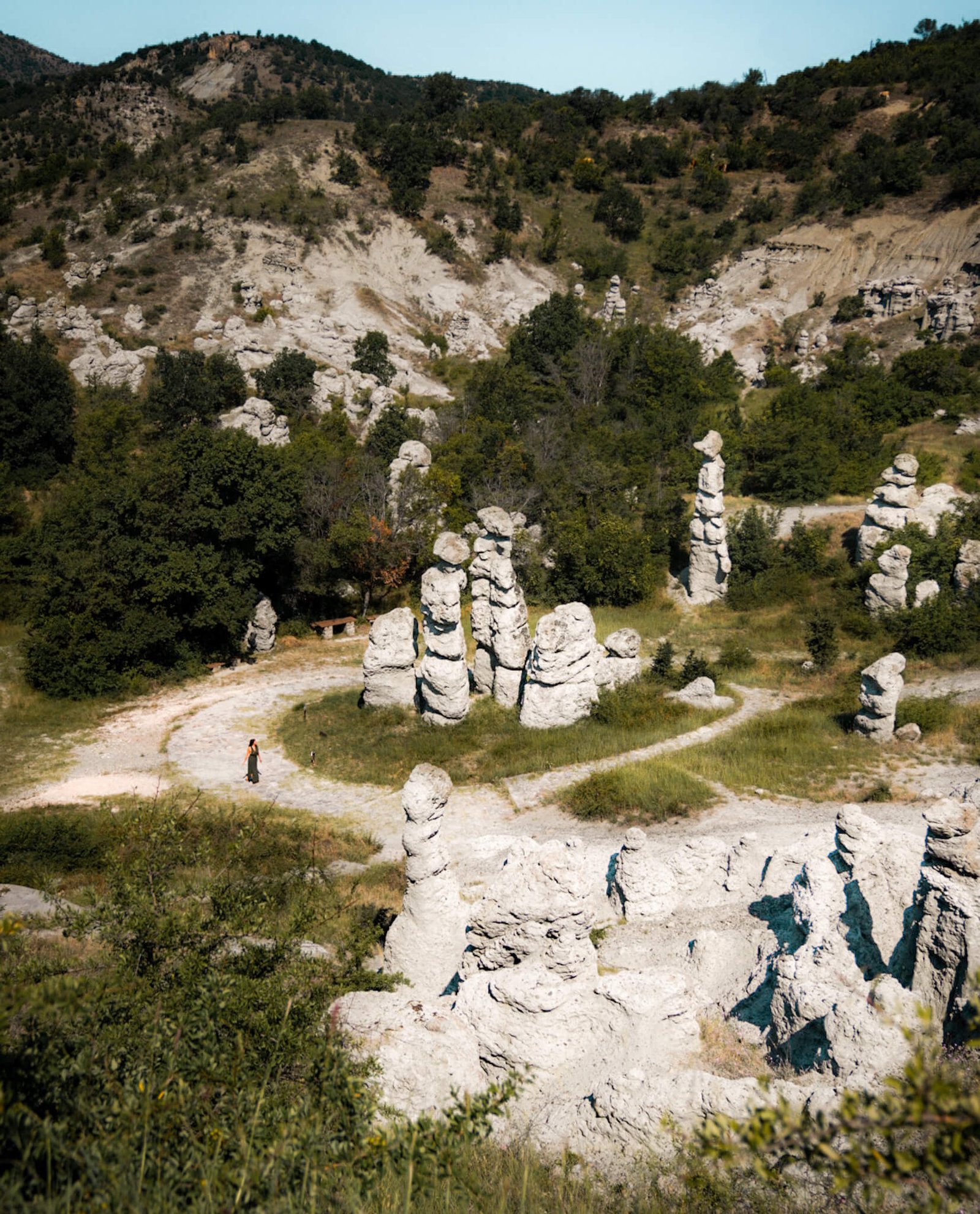
The Stone Dolls have a similar landscape to Cappadocia in Turkey.
Lake Ohrid is the most beloved and sacred places to visit in Macedonia. Known to be holy, the lake is full of beautiful churches and monasteries. Go shopping in town, explore the fortress, relax at one of the beaches, or take a boat trip to see all that Lake Ohrid has to offer. As one of our favorite places to visit in Macedonia, this is definitely a must for your trip.
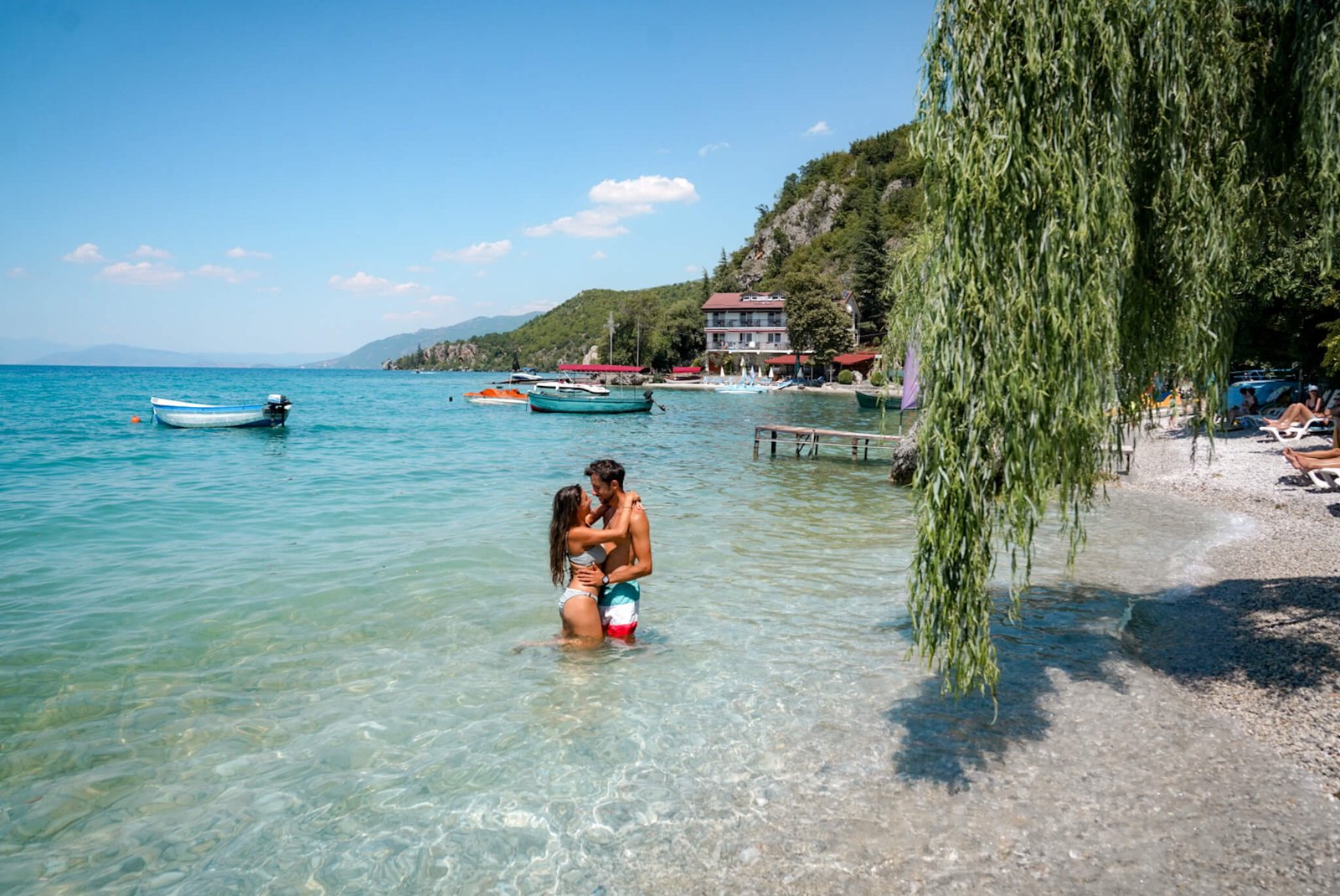
Kozjak Lake
Want to see another beautiful lake in Macedonia? Well Kozjak Lake is actually the largest artificial lake in Macedonia, and is actually known as the Macedonian Grand Canyon. With stunning landscapes and viewpoints, this is definitely something to add to your list if you have a car.
Don't have time to read the whole article and want to save it for later? Just pin it!
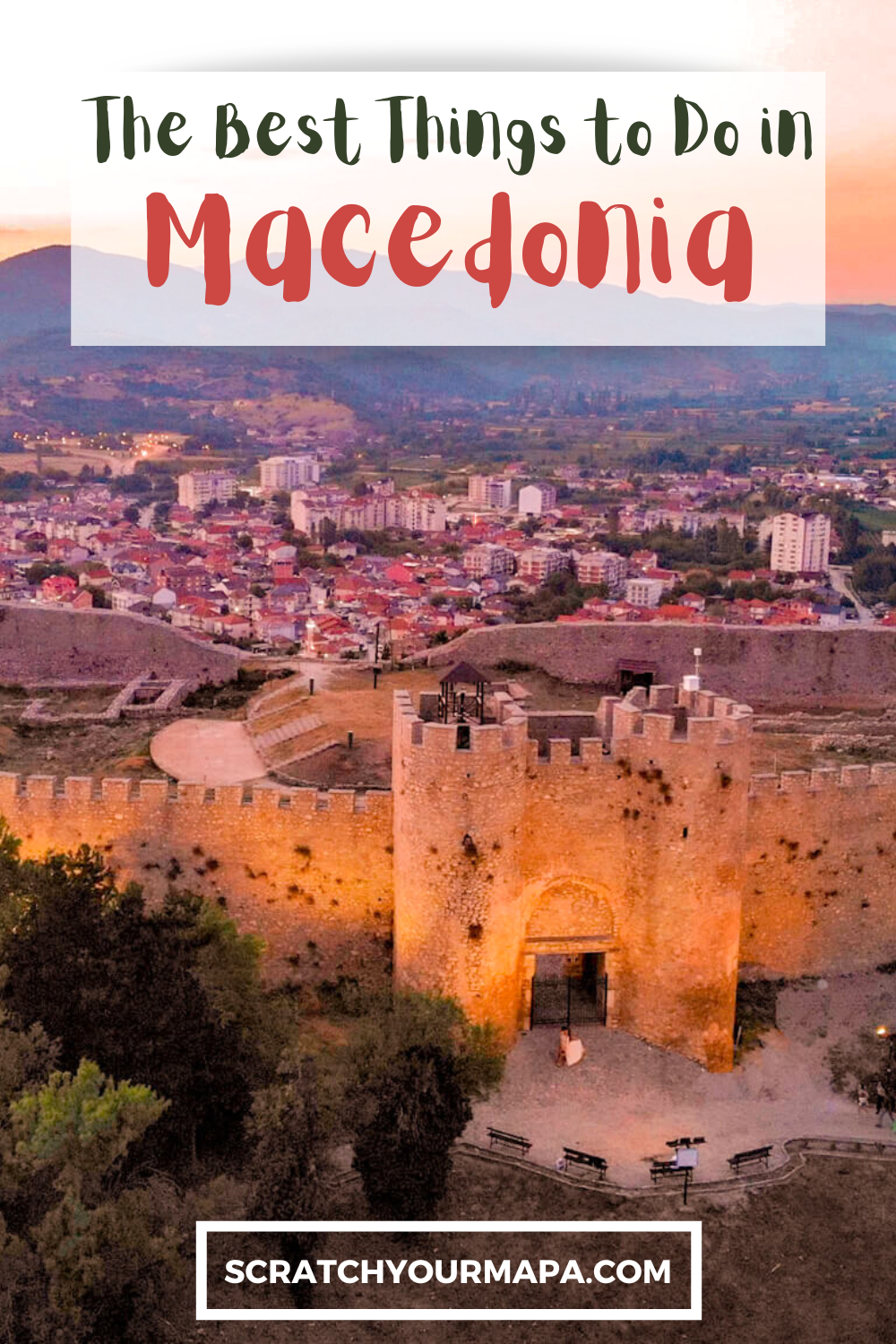
Makedonium- Ilinden Monument
While most beautiful structures in Macedonia have historic looks, but this one is quite different. The Makedonium Ilinden Monument is a futuristic white domed structure, and represents a memorial for a large uprising. Located in a small mountain village called Kusevo, you could come here on a day trip from Lake Ohrid .

All Your Travels
In one book.
Transform your travel memories into a unique book, with personalized pages, country by country.
Kratovo is a tiny village that pleasantly surprised us on our road trip. Located in eastern Macedonia, this is a great place to stay if you want to visit the Stone Dolls. We stayed at a Etno House Shancheva, which is one a century old. The owners were so sweet, and even gave us a full history tour, as well as some local products as gifts.
How to Get Around Macedonia
We rented a car when we were visiting Macedonia, and the countries around it. We found that outside the capital, it was particularly helpful, especially for experiencing some of the unique spots in the middle of nowhere. If you only plan on visiting Skopje though, you won't necessarily need a car, and can get around fine by public bus.
How To Travel Cheaper and Better in 15 minutes!
How much more would you travel, if it costed you less resources?
With our Free eBook, you will learn how to save money and time on your future trips . Plus, you'll see the exact system we use.
Grab your copy for free when you sign up for our newsletter 👇

Local Cuisine of Macedonia
Macedonian cuisine is a mix of the surrounding countries. Just like Bulgaria and Greece , there are a lot of dishes made with local cheeses, and phyllo dough, and just like the mountains of Albania , and Serbia, there is a lot of meat and heavier food. Head to Lake Ohrid though, and one of the specialties is the trout. Macedonia has generous portions, and low prices. The only thing they could improve on a bit is their service.
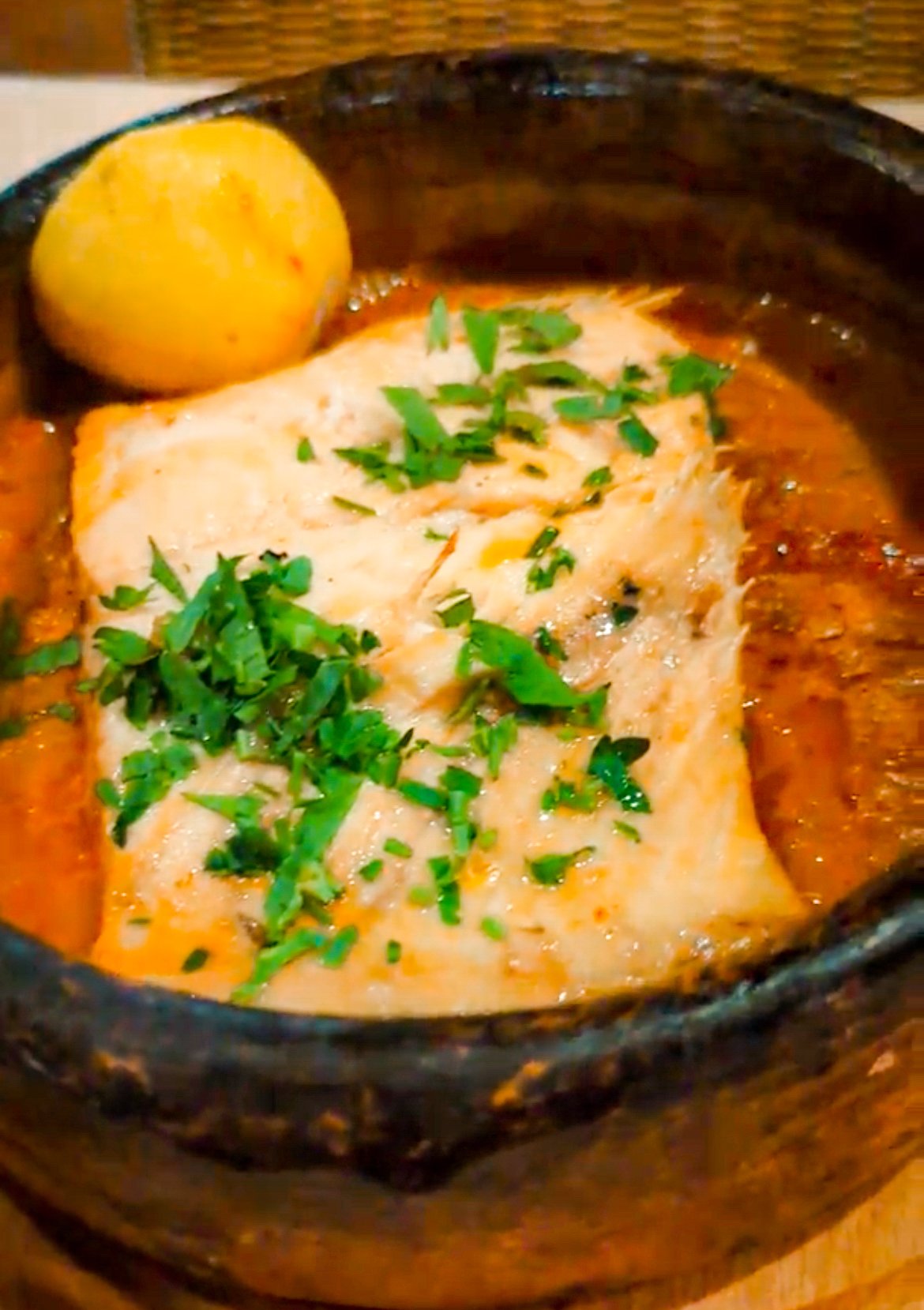
Is Macedonia Safe?
Overall, we felt pretty safe throughout Macedonia. Unfortunately though, we did have one experience that made us feel otherwise. We parked in a private lot in the center of Skopje, and despite paying for a private lot, and only being gone from the car for an hour for dinner (it was still light out), the window to our car got smashed and our belongings got stolen from the trunk.
The police weren't as helpful as we were hoping, and they told us that this is common for that area. While we don't think Macedonia as a whole is super unsafe, unfortunately there are bad people everywhere, so we definitely suggest being extra cautious with your belongings, and while walking around during the night.
Other Things to Know About Visiting Macedonia
Now that you know the best places to visit in Macedonia, how to get around, and the local adjustments, we have a few other things to share. Here are some extra things to keep in mind when visiting Macedonia.
Weather in Macedonia
The weather in Macedonia is similar to the surrounding countries in Eastern Europe. Macedonia experiences all 4 seasons, with cold snowy winters, and super hot summers.
The Best Time to Visit Macedonia
We think the best time to visit Macedonia is in late spring, or early fall, when the temperatures are mild and pleasant. We visited Lake Ohrid in June, and absolutely loved it. The summer is when it is busiest, but we definitely think that early June or September would have been a bit more ideal.

Transform your photos
One click is all it takes to make your photos look stunning. Get our latest package of Lightroom presets, Into The Wild .
Packing for a Trip to Macedonia
When it comes to packing for a trip to Macedonia, it really depends on what time of year you plan on visiting. We suggest bringing a reusable water, and comfortable shoes for exploring. If you plan on visiting Lake Ohrid , definitely bring a bathing suit and sunscreen. Finally, bring a backpack or purse that zips to protect your belongings.
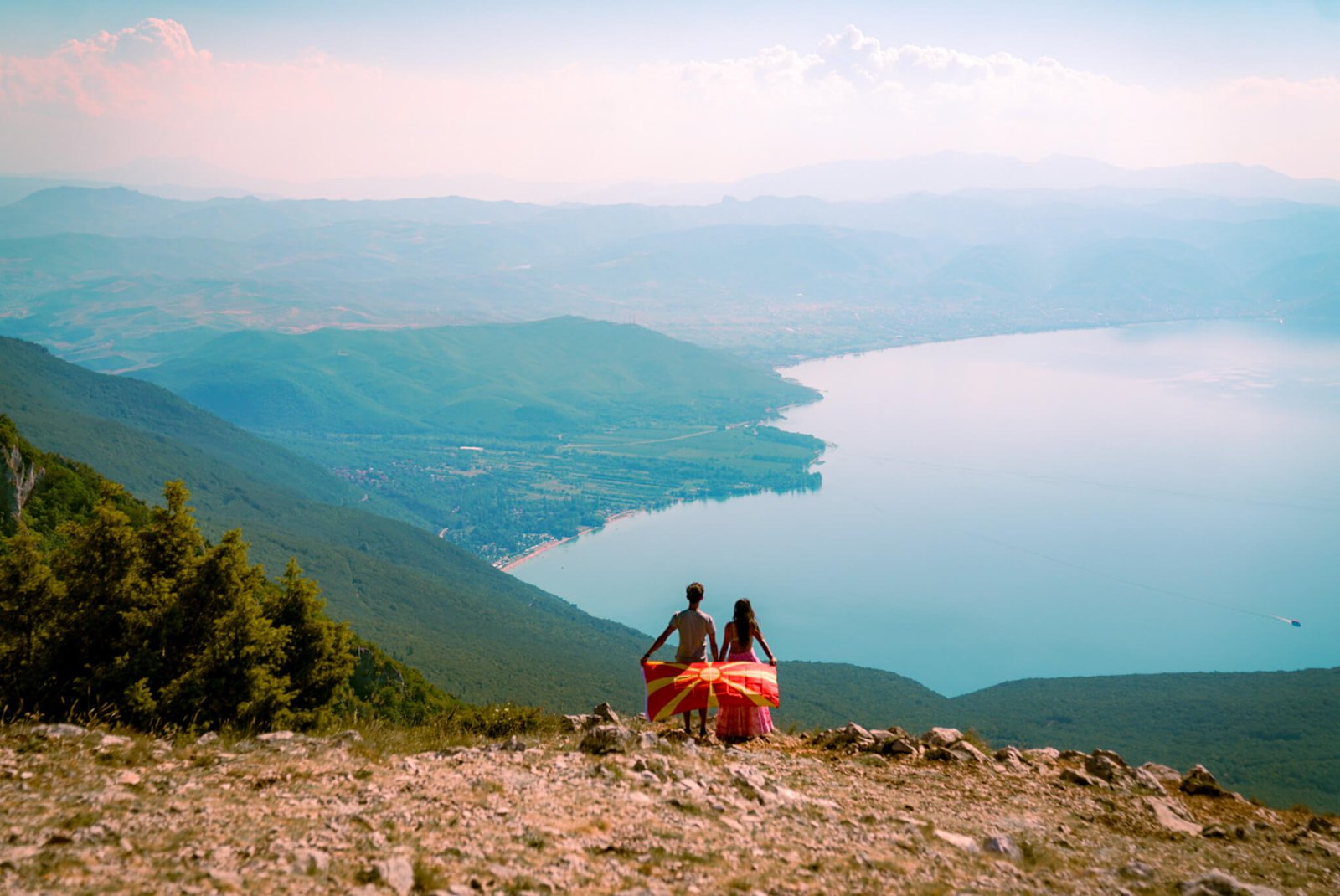
Travel Planning Tools
Here are some useful tools that you can use for planning your upcoming trip!
Macedonia is definitely an underrated country, and has some really cool destinations that are under the radar. We spent a week in the country, and felt that it was the perfect amount of time to see the top places to visit in Macedonia.
Want to learn more about Skopje or Lake Ohrid ? We have full travel guides for both, and have weekly travel guide about various destinations throughout the Balkans. Make sure to subscribe to our newsletter , so that you can always be in the know about our new articles, and get exclusive discounts.
Want to start planning your trip? Well, we can help you save both money and time. Scratch Your Mapa Travel Planning is unlike the ordinary travel agent services, and is aimed to help you explore more and spend less. Want to learn more? Take a look at some of our travel planning packages
or email us to set up your free consultation.
Here are a few other articles you'd love:
December 12, 2022
A Complete Guide to Visiting Skopje in Macedonia
Are you planning a trip to through the
November 21, 2022
A Complete Guide for Visiting Serbia
Welcome to the heart of the Balkans, and
August 15, 2022
A Guide to Theth: Albania’s Mountain Paradise
Theth was our first stop in Albania, and
August 8, 2022
Seven Rila Lakes: The Most Beautiful Hike in Bulgaria
If you're looking for one of the most
August 1, 2022
Osum Canyon: The Grand Canyon of Albania
Have you ever heard of Osum Canyon? Well,
July 21, 2022
Lake Ohrid in Macedonia: A Sacred Balkan Paradise
Welcome to the most sacred and beautiful place
Like this article? Please share it with your family and friends, so that we can continue to keep creating free travel guides for you! It takes just a second, and would mean the world to us. Thanks for being here!
You Might Also Like

The 12 Best Things to Do in Turin, Italy
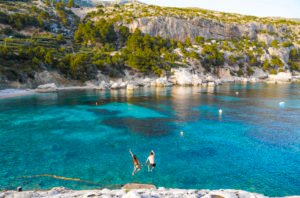
Hvar in Croatia: An Island for Stunning Nature and Epic Nightlife

Minca, Colombia: A South American Hidden Gem
Active Itinerary
Join our community to use our interactive maps to plan your own itinerary and get tips and suggestions from those who have already visited.
Quick SEARCH
Your itineraries, your bookmarks, your bucketlist, already been there, your favorites, quick share, itinerary settings.
Browse your current notes. You can have notes attached to your itinerary, a specific location in your list or a specific page.
Your current itinerary settings and options.
Interactive maps are a premium feature and only available for certain account types. Free during the beta phase …
Choose your active itinerary or create a new one. Depending on your account type, you are limited to only one list. Fill your list, move or drag and drop items between them.
As a premium member, you will have private and public lists, as well as default core lists (favorites, bookmarks, already been there, bucket list).
Collection of the content you enjoyed the most. Favorites are shared publicaly. Use Bookmarks for private storage.
Share your current itinerary: With friends and family via email, to Twitter, to Facebook or pin it on Pinterest.
Decide, if the active itinerary is public or private.
Your bucketlist, go ahead and add some POIs!
Bookmark content, that you want to keep as reference and for easy access.
Quickly search through your locations / notes ….
Places you have already visited and like to share.
Change NOTES
RECEIVER …
Lorem ipsum dolor sit amet, consectetur adipiscing elit. Ut elit tellus, luctus nec ullamcorper mattis, pulvinar dapibus leo.
YOUR PROFILE
Current announcements, quick contact, website settings.

Quickly change some main profile and account settings.
Quickly change some website settings.
Get in touch!
Latest news and changes ….
Central Macedonia Art, History & Archaeology Sites & Museums
The modern-day Central Macedonia region occupies the central part of the historic and geographic region of Macedonia. Although an administrative region, Central Macedonia more or less corresponds to the ancient region of Lower Macedonia, or Macedonia proper. The Macedonian Kingdom was rule from two capitals, Aigai (present-day Vergina) and Pella, both of which have spectacular archaeological sites. Pella is where Alexander the Great was born, and Aigai is where the ruins of his father’s royal palace is – and where he was proclaimed king following his father’s assassination. Mountains dominate the landscape to the north, while the southern coastline includes the port city of Thessaloniki – a city that was second only to Constantinople in the post-Roman Byzantine era. The regional units that make up Central Macedonia are: Chalkidiki, Imathia, Kilkis, Pella, Pieria, Serres and Thessaloniki. The administrative capital is Thessaloniki.
This page, part of our Greece Travel Guide , provides details of the art, archaeology and history sites, museums and related attractions to visit in the Central Macedonia administrative region. Readers wishing to visit these places will find visitor information, links to official websites as well as other helpful resources. The guide is produced by Thomas Dowson , an archaeologist and the founder of Archaeology Travel, who has been visiting Greece regularly since 1990, , and is currently researching a comprehensive guidebook to Athens. Read more about the website, its authors and our work .
New to the Archaeology Travel website? Those who have an account (free of charge) can create personal travel lists and itineraries. To benefit fully from the various travel planning features, see the User’s Guide .
Archaeology & History Sites in Central Macedonia

Alexander the Great Monument
On Thessaloniki’s waterfront is one of the most striking monuments to Alexander the Great, created in 1973 by Evangelos Moustakas. At the centre of the monument is a bronze equestrian statue depicting Alexander riding his horse Bucephalus, which together with the plinth is 11 m high. Near the statue is a low wall with a low relief frieze of the 333 BC Battle of Issus, Alexander’s second battle against the Persians, but his first facing Darius. Eight erect spears with shields symbolise Alexander’s army. The city is named after Alexander’s sister, who was married to its founder, Cassander.

Ancient Vergina - Aigai
Vergina was established very recently, in 1922 following the Treaty of Lausanne. The town is better known as the site of the ancient capital of Macedon, Aigai. The many archaeological sites include the ruins of the palace, a theatre and various public buildings. But it is the Royal tombs and cemeteries that are best known, having produced some of the finest ancient artefacts, now on display in museums in the town. It was in Aigai Palace that Philip II was assassinated and his son Alexander proclaimed his successor. The ancient city was added to the UNESCO List of World Heritage Sites in 1996.

Dion Archaeological Park
With an excellent view of Mount Olympus, the ancient town of Dion grew up around a sanctuary dedicated to Zeus – who is said to have lived on Olympus. For ancient Macedonians this was an important sacred place, and since the end of the 5th century BC it was a leading centre for the ‘Olympian Games of Dion’, to honour and worship Zeus and his daughters. An archaeological walk has been created allowing visitors to experience the significant elements of the site.

Nymphaeum of Mieza - School of Aristotle
Philip II of Macedon brought Aristotle to Mieza to teach his son, Alexander. For this purpose, Philip gave the philosopher the shrine of the Nymphs, or nymphaeum of Mieza. The school is an archetype of Macedonian schools that would eventually spread throughout Alexander’s empire. Cassander, Hephaestion and Ptolemy I Soter were also educated here. Archaeologists believe only a portion of the gymnasium has been excavated, and there are plans to re-excavate the site. The site is open to the public.

Pella Archaeological Site
The ancient city of Pella was founded by Archelaus I, as the capital of the Kingdom of Macedon. Both Philip II and his son Alexander the Great were born here. Until it was sacked by the Romans in 168 BC, Pella was the largest and richest city in Macedonia. Most of the surviving features to see are to the west of the modern town of Pella. The Agora and surrounding area have been extensively excavated. Here visitors can clearly see the town plan, as well as temples and houses with spectacular mosaic floors, most notably the House of Dionysus, and the House of the Abduction of Helen. Work is still on going at the ancient palace.

Platamon Castle
The castle was built between 1204 and 1222, although it is generally accepted to have been built on the ruins of an ancient Hellenistic city, by the Crusaders. Due to its strategic position, the castle has played an important role in the history of the region, passing from the Crusaders to the Byzantine aristocracy, from the Ottomans to the Venetians, and back to the Ottomans. During World War II it was occupied by New Zealanders, attempting to block the Nazis advancing into Greece. Besides the historical interest of the location, the hilltop has a spectacular 360-degree view of the Pieria region and Aegean Sea.

Roman Thessaloniki - Thessalonica
Following the fall of the Kingdom of Macedon in 168 BC, Thessalonica became a city in the Roman Republic. Given its position of the Via Egnatia, the city became an important commercial centre. Under the Romans the city developed considerably, and there are many remnants and substantial ruins from this period to visit including the port, acropolis and forum. Emperor Galerius seems to have left the biggest mark, as this was his chosen seat. Galerius’ sites and monuments include the Rotunda (intended as his mausoleum), his palace and the Arch of Galerius.

White Tower of Thessaloniki
One of the most popular attractions in the city, the White Tower is also the symbol of Thessaloniki. The tower was built by the Ottomans after they captured the city in 1430. The fortress was built on the site of earlier Byzantine fortifications. Over the centuries the tower has been a fortress, garrison and a prison. During WWI it was used to store antiquities, then the meteorology laboratory of Aristotle University, and even the Sea Scout were based here for a time. Since 2008 the tower has been home to a permanent multimedia exhibition on the history of Thessaloniki, from its founding to the present.
Museums & Art Galleries in Central Macedonia

Archaeological Museum of Dion - Archaiotheke of Dion
The Archaeological Museum of Dion was established to display artefacts recovered from the nearby site of Dion – a large fortified city occupied from the 6th century BC to the 5th century AD. Artefacts from other sites in the region, including those at the foot of Mount Olympus, are also on display here. The range of objects exhibited is vast, from exquisite marble statues and mortuary monuments to more mundane artefacts of daily life. Next to the museum is the Archaiotheke of Dion, which was built to house the Dionysus Mosaic.

Archaeological Museum of Pella
The museum was built to house the vast collection of artefacts excavated from the ancient city of Pella, capital city of the Macedonian Kingdom. The exhibitions are are arranged thematically, and cover daily life in Pella, public life in Pella, the spectacular mosaics and other art objects, funerary customs in Pella and life at the palace. Highlights of the extraordinary collection of artefacts include gold wreaths, a gold mask and other jewellery, and the so-called Stag Hunt Mosaic showing Alexander the Great and his lifetime companion Hephaestion hunting a stag.

Archaeological Museum of Thessaloniki
Permanent exhibitions include some of the finest antiquities and artefacts of ancient Greece, from prehistory to late antiquity. One of many highlights includes the largest collection of gold wreaths from Macedonian cemeteries. The artefacts in these collections come from private donations and gifts, as well as archaeological sites excavated in Macedonia since 1912, when the museum was founded. The museum is in the centre of Thessaloniki, close to many other museums and popular attractions. Visitors with a range of accessibility requirements are well catered for.

Museum of Byzantine Culture
A relatively new museum, opened in September of 1994, it was established for the research and display of Byzantine material culture in Macedonia. The museum’s impressive collection of sculptures, frescoes, mosaics, icons and inscriptions are arranged in a series of permanent exhibitions that cover early Christianity in the region, and the middle, later and post-Byzantine periods. Temporary exhibitions are also regularly curated that add to what is on permanent display in the museum.

21 Mind-Blowing Places to Visit in Macedonia

Macedonia is one of the least-traveled countries in Europe (less than fifteen thousand American, Brits, and Canadians visit here annually – combined!). Yet, this mountainous, landlocked country has so much to offer! There are quirky cities, gorgeous villages, interesting historic sites, majestic lakes, and beautiful mountains. And while some of the most beautiful places to visit in Macedonia rival those anywhere in the world, you’ll pay a fraction of what you would for a trip to similar spots in western Europe or even Croatia or Slovenia .
So whether you’re backpacking the Balkans or you’re just looking for a quick city break , don’t make the same mistake most travelers do and just hit Skopje or Ohrid. There are far too many unexpected and wonderful places to visit in Macedonia to give this country short shrift.
A note about Macedonia versus North Macedonia: This article is about planning a trip to North Macedonia (the country) and not the region of Greece called Macedonia. However, the name “North Macedonia” is not commonly used yet, so we will simply by substituting the name Macedonia in places. This is not a political statement; we are merely trying to help those looking for information about the country find it easily. Political comments will be deleted.
The Best Places to Visit in Macedonia
From small fishing villages to resort towns to interesting historic sites, these are our picks for the best places to visit in Macedonia.

Most trips to Macedonia will start in Skopje, either landing at the airport or grabbing a bus from Sofia , Tirana, or Greece. Visitors will find that there are fantastic things to do here, but the real joy is simply strolling the quirky streets and enjoying the juxtaposition of the city’s delightfully slow pace with its urban atmosphere. Highlights include visits to the Old Bazaar, Skopje Fortress, and the stone bridge. Don’t forget to check out the city’s decidedly strange architecture!
Skopje is also a great place to base yourself to visit a few of the other spots on this list, so if you’re the kind of traveler who likes to spend a week or two in a place, you can use Skopje to explore the greater region on day trips.

The Jerusalem of the Balkans, many people have heard of Ohrid as an important cultural and religious city. But this UNESCO World Heritage Site is worth visiting for so many reasons. Yes, it is full of beautiful churches and monasteries, including the picture-perfect St. John at Kaneo , but it’s also just a fabulous lakeside town. Here you can mix your summer fun with cultural pursuits, making Ohrid the perfect all-around vacation destination.
Give yourself time to tour the churches, but don’t skip on time on the water. No trip here is complete without getting in a boat! You can go on a quick sunset cruise, or you can take an entire day trip on the water visiting some of the other villages on the lake (several of which are listed below).
Matka Canyon

The most popular day trip from Skopje, though you can also choose to stay at Matka Canyon for a few days at the local hotel. Easily reachable by taxi, bus, or car, you simply have no excuse not to take in this beautiful Macedonian natural wonder while in the city.
Matka Canyon is beloved by hiking enthusiasts, spelunkers, and photographers of all levels. While here you can go for a boat ride, visit the monasteries, swim, kayak, hike, or visit one of the caves.

Located in the southern part of North Macedonia near the border with Greece, Bitola is the country’s second largest city. Yet it receives a fraction of the tourists of Skopje or Ohrid, so it has a decidedly off-the-path feel. Start your time here in Magnolia Square underneath the clocktower, before making your way through the city’s important religious sites.
You don’t come to a sleepy Bitola to rush, so take your time by enjoying the local cafe scene on Sirok Sokak, the city’s main pedestrian drag. Visit the city’s Old Bazaar and the covered market, where you can get your Macedonian shopping fix.
Mavrovo National Park

While Lake Ohrid attracts international travelers, the rest of Macedonia’s natural wonders are far less known outside of the country. Yet Mavrovo National Park is home to the country’s highest mountain (Mount Korab), the best ski resort (Zare Lazareski), and one of the country’s most beloved festivals (the Galičnik Wedding Festival). So if you’re looking for somewhere that offers interesting culture and beautiful nature year-round, look no further.
If you’re a foodie, you’ll want to make a visit to the twin villages of Janče and Galičnik, which have become something of a culinary mecca in Mavrovo and across Macedonia.

The town of Trpejca on Lake Ohrid has earned the nickname of the Macedonian Saint-Tropez as tourists have increasingly set their sights on visiting this tiny yet glamorous former fishing village.
Most hotels here are actually guest houses run by locals who open their homes to the numerous tourists during the high season and return to regular life during the rest of the year. While here, you can indulge in swimming, snorkeling, boating, and soaking up the sun on the shore. It has a reputation as having the cleanest swimming water on the lake, and Instagrammers adore the photogenic rocks standing out in the water.
You can visit as a day trip from Ohrid or you can base yourself here for a few days of total relaxation.
Kokino Observatory

Located in the northern part of the country near the Serbian border, the four-thousand-year-old Kokino Observatory is an ancient megalithic site that Bronze Age peoples used to track the patterns of the sun and moon. Avid photographers will love the opportunity for astrophotography looking up at the same sites that men and women have been tracking for thousands of years:
Four massive stone thrones, facing the direction of the east, make up the lower platform. The higher platform consists of markers carved into malleable andesite rocks, that indicated significant astronomical events like the summer and winter solstices, as well as the spring and autumn equinoxes. While seated on the thrones, particularly the second one, the exact movement of light during these days could be seen. The most powerful member of the community usually took his place on this special seat, and observed the light that streamed through the carved markers, and soaked in the energy of the sun. Rituals based on these solar changes were held at the observatory.
The Bay of Bones

The Bay of Bones is a unique experience in Macedonia. This overwater museum on Lake Ohrid is an authentic reproduction of a pile-dwelling settlement, so visitors can see how men and women lived here in the first millennium BC. There’s also a reconstructed ancient Roman military fortress up on the hill nearby. Both can easily be visited from Ohrid or the other lake villages by boat.

Situated in the crater of an extinct volcano, the museum city of Kratovo is famous for its six stone towers and its picturesque nineteenth-century architecture. Other can’t-misses in the city are the medieval bridges, including Rada’s Bridge, and the city’s underground tunnels.
If you visit Kratovo as a day trip from Skopje, make sure to pair it with a stop at the nearby Kuklika Stone Dolls. This natural wonder is a set of stone pillars, which legend has it that each pillar is a member of a wedding party put under a curse by a scorned bride.

The city of Tetovo has an Albanian majority, so while here you’ll see the city’s interesting mosques including its most famous, the painted Sarena Mosque. You’ll also want to set aside time to see Tetovo Art Gallery, located in the former bathhouse, the city’s beautiful churches, and the beautiful stone bridge.
If you come to Tetovo as a day trip from Skopje, pair your visit with a stop at the nearby fourteenth-century Monastery of Leshok.
Stobi Archaelogical Site

The most famous archaeological site in North Macedonia, Stobi is located in the middle of the country, almost equidistant from Skopje and Bitola. Stobi served as the capital of the ancient Roman Provence of Macedonia Secunda, and it continued to play this important role during the early Byzantine Empire.
While here, make sure to see the famous theater, the beautiful baptismal font, and the detailed mosaics.
Snake Island

The island of Golem Grad in Lake Prespa is better known by its more imaginative nickname, Snake Island. Visits here start from the villages of Konjsko or Stenje, where you can take a two-kilometer boat ride to the island (though you can visit from any point on Lake Prespa if you happen to have access to a private boat…).
Why the name snake island? Well, yes, it’s because there are quite a few snakes on the island:
The alternative name of Golem Grad is ‘The Island of Snakes.’ Upon arrival on the island itself, make sure that the first tree which you’ll see (and there are many) will be decorated with thin snakes that hang on the dry branches. The first ones are friendly and are not poisonous – beloushki (grass snakes) and they live in the rocks and by the water. The second type…Well, you may be amazed, excited or terrified – it depends on how willing you are to encounter horned vipers having a party on the island. Yes, they are everywhere. Yes, they are poisonous. These magnificent guards protect the place from the top of the island.
While here, make sure to stop by the grave of Tsar Samuil, the ruined church, and the flocks of pelicans who live here during the season.
Pelister National Park

Located about an hour outside of Bitola, Pelister National Park is the second largest national park in the country. The most famous landmarks here are the two mountain lakes known as Pelister’s Eyes.
Visitor’s come for the spectacular views, hiking, camping, rock climbing, and horseback riding. So basically Pelister National Park is an outdoor paradise.
Heraclea Lynkestis

Located just outside of Bitola, Heraclea Lyncestis was founded by King Philip II of Macedon, the father of Alexander the Great. The ruins here are one of the last remaining ties between the ancient and modern Macedonian cultures.
While here, there are many important landmarks to see:
Beautiful Roman baths, the Episcopal church and baptistery, a Jewish temple, portico and a Roman theater now used for summer concerts and theater performances, all stand proud in excellent condition. The Roman theater on the hill, who’s ruins where unearthed in the late 1960’s, was constructed during Emperor Hadrian’s 20-year reign (A.D. 117-138). He is credited with building as well as restoring many structures in the province of Macedonia. It was not until after his death that the theater came into use. Artifacts found at the site indicate that it was primarily used to stage gladiator fights until the late 4th century, when such fighting was banned throughout the Empire. There is a small museum on the grounds with few artifacts and a nice scale model of the city at its peak.
Radožda

Located on Lake Ohrid just two kilometers from the Albanian border, the village of Radožda is over a thousand years old. Besides soaking in the sun and enjoying the peaceful village setting, you can tour the seven churches in the village. On Easter, the townspeople set out to visit each one, but the most famous is the cave church of St. Archangel Mihail from the fourteenth century.
Galičica National Park

Named after Galičica Mountain, which straddles the border between Macedonia and Albania, Galičica National Park is on the Macedonian side of the mountain and covers the area between Lake Ohrid and Lake Prespa.
If you get high enough on the mountain you can see both lakes simultaneously (and even grab a photo of both). The panoramic views from here are just breathtaking and more than worth the effort of getting this high.

An easy day trip from Bitola, the village of Prilep (which also encompasses the former village of Varoš) is famous for its namesake tobacco.
After you arrive, start with the clocktower which is the most famous spot in the city. Make sure to see the Monastery of Treskavec and the Carshi Mosque and spend time exploring Varoš with its beautiful Ottoman architecture.
Hiking and history lovers should visit the nearby medieval fortress of Markovi Kuli.

Completely off the tourist path, Kruševo is a great mix of museum town and decay. The colorful houses come to life when the sun is shining, spread across the hilly village.
Spomenik hunters need to put this place on their Macedonian itinerary since it’s home to one of the most unique Yugoslav Memorials. Makedonium, also called the Ilinden Monument, is located on Gumenja Hill and is dedicated to those who fought for Macedonian independence from the Ottoman Turks and during World War II.
Monastery of St. Naum

A popular day trip from Ohrid, the Monastery of St. Naum (Manastir Sveti Naum) is situated on the shore of the lake near the Albanian border. Yet the church is important for more than just its beautiful setting:
This is one of the first monuments of Slavic church architecture, built duringByzantinee times. The central part of the monastery complex is the church of the Holy Archangels, and it is the most captivating building in the entire region. Surrounded by tall cypresses, traditional buildings and stone walls, it is nicely secluded… The interior of the church is well known for its characteristic wood craving, which is very old, dating back from the 17 th and 18 th century. Inside the church, the icon of the holy Assumption of St. Naum is still there, representing the oldest item of the theme. The core of the monastery complex is a lush and serene garden, with fountain streams and colorful peacocks. An attraction on its own, these birds are a popular highlight of the entire region as well.

By Reklam-net, CC BY-SA 3.0 , Link
About an hour away from Ohrid by taxi, the trip out to Recica is an easy one. Once here you’ll find a “village” with only one resident and no stores. But the highlight here isn’t the people watching or the shopping, rather you come here to see one of the most unique sites in the Balkans: the natural laundry!
The laundry here is done using a vortex in the river which agitates the clothing the way a washing machine does. Afterward, the laundry is hung up to dry, so you’ll find a field full of laundry hanging in the sun.
You won’t find a more unique day trip from Ohrid or any other city in the Balkans, so make sure to make time to see this cultural site!
Šar Mountain (Sharra Mountain)

Located an hour and a half from Skopje on the border with Kosovo, Shar Mountain is a popular ski resort and hiking spot. The mountain is covered in glacial lakes, called Sharplaninski Ochi in Macedonian. Dog lovers will be excited to see the Shara Mountain Sheepdog, also known as the Sharplaninec, a local dog breed endemic to the mountain.
Foodies should make sure to check out the local cheeses, made from sheep’s milk, and other local dairy products.
Macedonia Travel Resources
Headed to Macedonia? We have some great travel resources to help you with your trip. First read our guide to planning a trip to Macedonia , which covers visas, budgets, vaccines, and much more. We also have a Balkan currency guide which explains how money works in Macedonia and local tipping customs.
Next, you’ll want to read our guide to shopping in Macedonia so you know which souvenirs are truly local gems.
If this will be one of your first trips in the Balkans, check out our massive list of things to know before traveling the Balkans as well as our Balkan bus , road trip , and itinerary guides.
For more information about traveling to Macedonia and the Balkans, check out our North Macedonia and Balkan travel pages.
Finally, Make Sure You Come to Macedonia with Travel Insurance
I’m sure you’re aware that travel insurance is essential for Macedonia and for travel in general! Allison and I have both been paying customers of World Nomads for the last two years. We love the peace of mind it gives us in case of emergencies, accidents, illnesses, theft, or trip cancellation or disruption.
While Macedonia is perfectly safe to travel around, there’s always a risk inherent in everyday travel, so it’s better to play it safe. The saying goes “if you can’t afford travel insurance, you can’t afford to travel” is true!
Get a travel insurance quote for your trip here.
Pin this Guide to the Best Places to Visit in Macedonia for Your Trip

Stephanie has been living in and traveling around the Balkans for the past three years. She’s written for National Geographic Online , appeared on CNN Arabic and in the New York Times , and ridden more Balkan buses than is good for a person.
Related posts
Omg! I need to go back to Macedonia! I only spend a week there, and there’s so much to see! I’ll save this post to plan the next trip ❤️
It’s insane how much there is in this tiny country! We live next door and we still haven’t seen it all after many visits <3
Thanks for sharing your amazing experience. Macedonia is indeed a lovely country that I would love to explore next time. I am going to bookmark this post as a useful source for my next trip!
We adore North Macedonia! I hope you get to visit soon!
Was a nice experience I agree its worth visiting. Been there last August and going back in November👍👍👍
So glad you enjoyed your visit to North Macedonia! Enjoy your return trip!
Such a beautiful country! Thank you on a detailed impressive guide! Saved your post for the future 🙂
Yes, North Macedonia is beautiful!
Submit a Comment Cancel reply
Your email address will not be published. Required fields are marked *

New on Sofia Adventures:
- How to Spend a Magical One Day in Istanbul: Mini Itinerary
- 30 Insanely Delicious Greek Street Foods You Need to Try
- 13 Things That EXIT Music Festival Visitors Should Know
You are using an outdated browser. Please upgrade your browser .

Top 12 Historical Places In The Balkans To Explore in 2022
Published in Blog

The Balkan region is full of historical stories and a rich past. If you love history, you are in the right place. Get ready to explore the best historical sites in the Balkan region!
1. Diocletian’s Palace (Croatia)

The unique palace is becoming one of the most important historical sites in Croatia, included on the UNESCO World Heritage List. In the old part of Split is located this ancient palace Diocletian, which looks more like a huge monumental fortress with massive construction. It dates from the 4th century AD, which served as a retirement residence and military camp. Delighted in the Mediterranean area, Diocletian decided to build this complex here, which today is the best representative example of Roman architecture on the Adriatic. The palace has a rectangular shape with 4 gates. The complex is still inhabited by people today, making it one of the oldest settlements in the world. It also has various shops, bars, restaurants, churches, squares, and narrow streets. The main square is Peristil and the Cathedral of St. Dominus, which dates back to the 7th century and is the oldest Catholic cathedral that works in its original structure. Climb to its bell tower to witness the panoramic view of the surroundings. Namely, Diocletian's Palace was decorated with 3500-year-old granite sphinxes. Over the centuries only 3 have survived, one of which is on the Peristil, the second is in front of the Temple of Jupiter, and the third is in the city museum. Another interesting part to visit in the complex is the basements of the Palace, which are one of the best-preserved ancient sites of this kind.
2. Pula Arena (Croatia)

Pula Arena is the most famous historical and ancient monument in Pula, but also the best-preserved building in Croatia. This Roman amphitheater is also one of the six largest surviving amphitheaters in the world. Every trip to Pula will take you to this monumental building with fully preserved walls and towers, which is undoubtedly the main symbol of the city. Built-in the 1st century AD which could accommodate approximately 20.00 spectators, it was used for gladiatorial battles in Roman times, but also battles between knights in the Middle Ages. Today you can explore and wander through the corridors where gladiators and lions once passed. Today the amphitheater is used for film festivals, operas, and music concerts.
3. Ostrog Monastery (Montenegro)
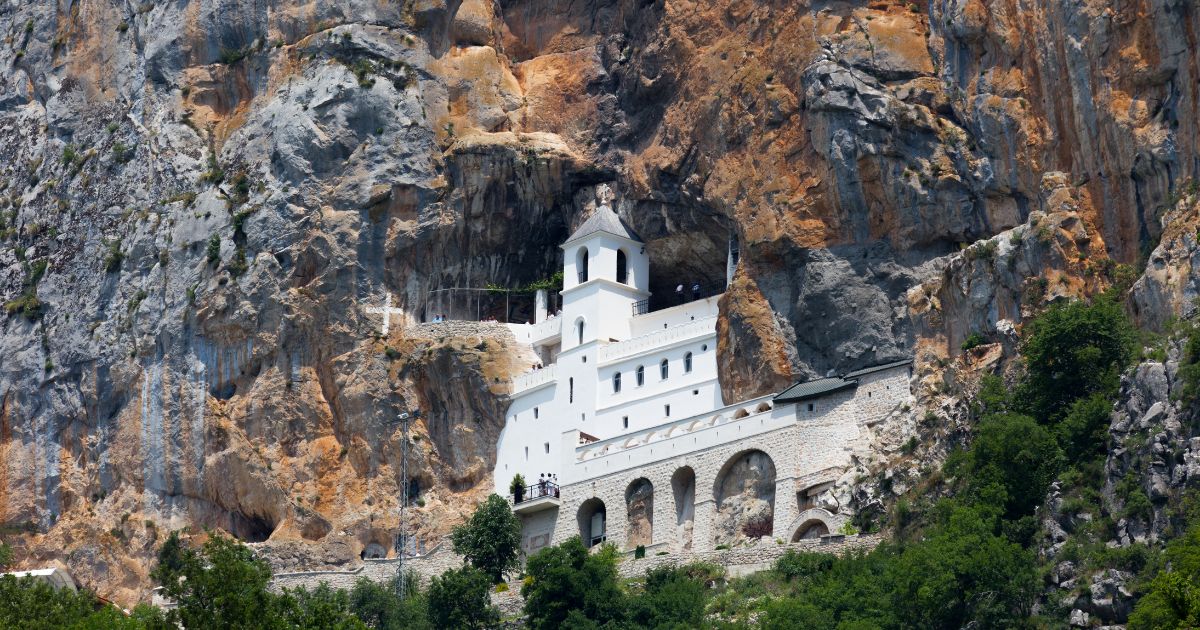
The monastery built in a vertical form, carved into the rocks, is a real architectural achievement. With its unusual construction, it confuses visitors and even engineers who do not understand how it was built in the past. It was founded in the 17th century by St. Basil of Ostrog, and its relics are kept in the upper monastery. Here are located the two cave churches, with imposing frescoes that adorn the church walls. In the lower monastery is the church of the Holy Trinity with beautiful frescoes, while behind it is the natural spring with clear water. A monastery is an important place for Christian pilgrimage. Take a People who have visited the monastery, believe that they have changed spiritually.
4. Ancient Theater (Ohrid, North Macedonia)

The ancient theater in Ohrid dates back to the end of the III century BC. It was intended for showing dramatic, musical, and poetic performances in the Hellenistic period. It stood out with its rich architectural decoration, especially the theatrical building which was decorated with plates on which were carved scenes from the life of the gods. Two such plates depict Dionysus, which are now kept in the Ohrid Museum. Crisp and Topos, who were lovers of theatrical art, had their seats, so today their names are still engraved in stone blocks. During the Roman period, the theater was adapted to the Roman way of life, so it was converted into a theater space with an arena for gladiatorial fights.
5. Golubac Fortress (Serbia)
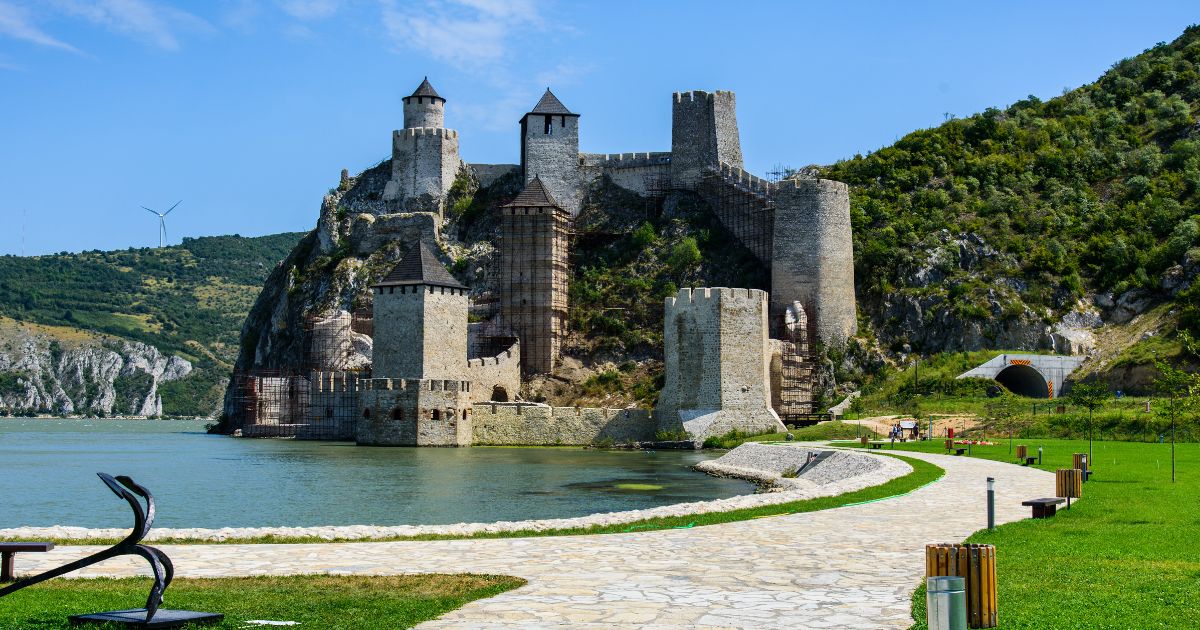
Golubac Fortress is an extraordinary fortress, built at the beginning of the Iron Gate gorge where the Danube flows into the Carpathian Pass. It dates from the 14th century at the time when the medieval Serbian state existed. Due to its strategic location, the fortress has been the center of many battles between the Ottoman Empire and the Kingdom of Hungary for centuries. Today the fortress is a famous tourist attraction in Serbia and is one of the most photogenic places in the country. You will be fascinated by medieval walls and stone bridges. The 10 towers that reach a height of up to 25 meters are especially prominent. To visit the fortress, it is recommended to book a place on their official website (https://tvrdjavagolubackigrad.rs/eng/). The fortress is the entrance to the beautiful Derdap National Park, so after visiting the fortress, you have the opportunity to see the whole region surrounded by idyllic nature.
6. Stobi (North Macedonia)

An ancient city dating back to the 2nd century BC. In the ancient period,d it had a very important strategic, military and trade position. Located at an important crossroads between the Aegean world and the central Balkans, it was an important urban, administrative and commercial center. The Roman road Via Egnatia passed through it. The most important monument from the Roman period is the Theater built in the II-III century AD. Other architectural structures that have been discovered and documented include the rampart, the Heraclea gate, the Aqueduct, the synagogue, parts of the city streets, the baths, and the basilicas. During the IV-V century, many imposing churches were built, with rich interior and architectural decoration, mosaics, and frescoes. Also in this city are observed several cult representations of deities from the Greco-Roman period. In its time, Stobi grew into one of the most important Roman cities in Macedonia.
7. Acropolis (Athens)
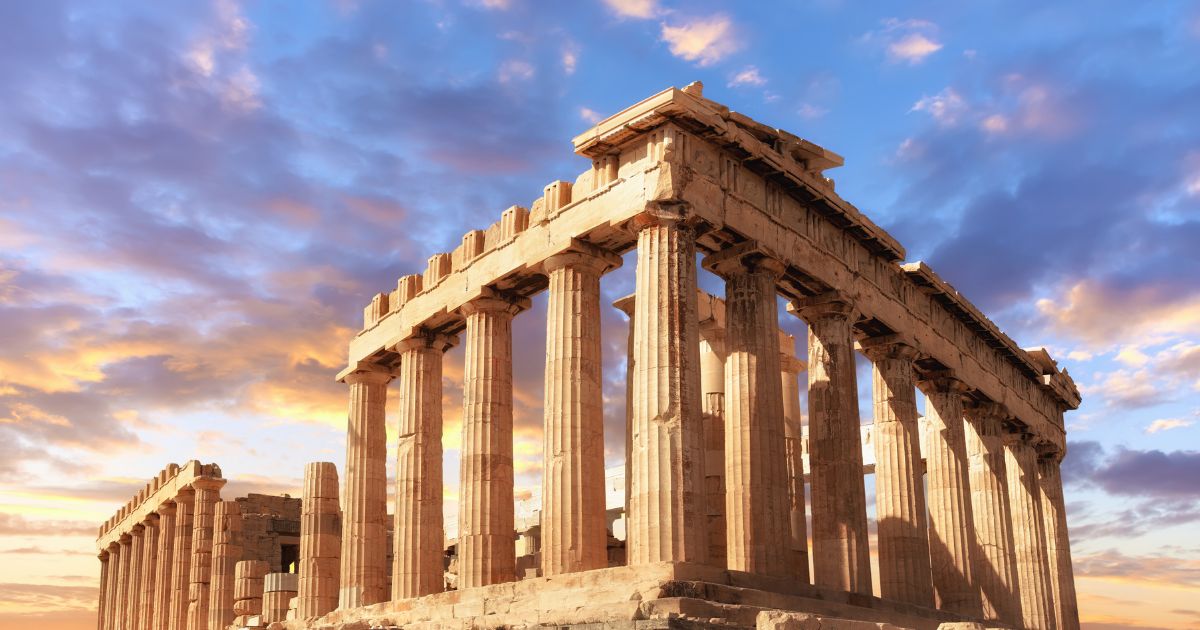
The Acropolis, a UNESCO World Heritage site, is one of Greece’s most beloved architectural wonders. From this vantage point, you can see the entire city of Athens and its ancient history. Showcasing thousands of years of history in the city of Athens, It is now a UNESCO-protected site and one of the most popular tourist destinations in Greece. The Acropolis was the most important religious sanctuary of the ancient Greek world. It is truly one of the world’s greatest pieces of architecture and history.
8. Ljubljana Castle (Slovenia)

The symbol of the city of Ljubljana is the monumental castle located on the hill Castel, just above the center of the city. It is a complex of castles that originally functioned as a medieval fortress. Historical records tell us that it was built in the 12th century, while today’s majestic appearance dates back to the 15th century. Located on a high hill, it provides some of the most beautiful views of the region. Many activities will be available to you here, such as exploring the historic rooms , taking a look at the museum exhibitions that present the distant past of Slovenia, tasting delicious food in the restaurants located within the complex, and getting acquainted with puppetry and the works of creative Slovenian puppet makers. If you are lucky you will find cultural events that are organized on various topics such as dance evenings or film screenings. Don’t forget to climb the magnificent Outlook Tower.
9. Kalemegdan (Serbia)
Probably one of the most famous and significant historical and cultural complexes in serbia. almost everyone who travels to belgrade must visit this impressive park-fortress. it was built from the 13th to the 19th century, to be eventually transformed into a park. the fortress is quite large, so to see it completely, you will need several hours. a walk through it offers you amazing views of the sava and danube rivers, as well as the whole city. it consists of several parks and trails, where you can enjoy your walks through this spectacular fortress. exhibitions and various sports, cultural and artistic events are regularly organized, which is why the fortress is today a major tourist attraction in belgrade. the fortress together with the park has been declared cultural monuments of exceptional importance., 10. butrint (albania).

The ancient Greek city of Butrint lies in the heart of today's Albania, 14 km south of Sarandë. It was founded by colonists from Corinth and was later ruled by the Romans and Byzantines. The once-thriving ancient city of Butrint is one of the most important archaeological sites in Albania. It is one of the most preserved classical and Hellenistic archeological sites in the Mediterranean. Butrint was declared a UNESCO World Heritage Site in 1992 and is part of the National Park. . The remains of the city include Ancient Greek streets, public squares, Roman baths, an early Christian basilica, and other buildings like a Roman theater considered to be one of the best in South-Eastern Europe. A must-visit destination in Albania!
11. Rila Monastery (Bulgaria)

The Rila Monastery is a Bulgarian Orthodox monastery sitting on the slopes of the Rila Mountains in the southwestern part of Bulgaria. The monastery was founded by hermit Ivan of the Rila in 927. It became an important center of religious life and is famous for its beautiful frescoes. When visiting the monastery you will see many historical artifacts including the tombs of Bulgarian saints and the old manuscript library.
12. Budva Citadel (Montenegro)

Built on the very edge of the cliff, the medieval castle of Budva is located on a high surface that offers spectacular sea views. It is one of the most important monuments in the country which was founded by the Romans in the Middle Ages. The main structure is surrounded by stone walls, which served as a military defense. As time passed by, the fortress was occupied by various authorities, such as the Venetians, the Austro-Hungarians, and the Ottomans. In its walls are the ruins of the church of St. Mary. Climb this magnificent castle to get a beautiful view of the blue Adriatic Sea, but also the surroundings of the city of Budva.
More stories from DMC Balkans Travel & Events:
The church of saint sava is the largest orthodox church in the balkans, game of thrones tour dubrovnik, croatia, the city that never sleeps - belgrade, sarajevo one of europe's most intriguing cities, st. naum - the heaven on earth, 5 places you must visit in ohrid, 11 breathtaking places you must visit in the balkans, 10 jaw-dropping places to visit in croatia, best destinations for nature lovers in the balkans, dmc balkans travel & events tours:, best balkan tours, serbia mono tours, bosnia mono tours, macedonia tours, europe tours, we help travel companies create memorable holidays in the balkans and central europe., contact us.
The website uses cookies for better user experience. By continuing to use the website, you declare yourself to agree to this. Further information can be found in our privacy policy. Read more
Best Time to Visit Macedonia: Fall's Hidden Gems Revealed
Planning a trip to Macedonia and wondering when's the best time to go? You're in the right spot. Macedonia is a hidden gem in Europe, known for its stunning landscapes, rich history, and tasty food. But to really enjoy all it has to offer, timing is key.

Spring and fall are the golden times to visit Macedonia. Imagine walking through ancient ruins without the summer heat or exploring beautiful national parks with colors that pop in the cool, comfortable weather. These seasons offer the perfect mix of pleasant weather and fewer tourists, making your trip both enjoyable and memorable. Let's dive deeper into why these months might just be your best bet for an unforgettable Macedonian adventure.
Key Takeaways
- Spring (March to May) and fall (September to November) are the ideal times to visit Macedonia, offering mild weather, lesser crowds, and the natural beauty of blooming or changing landscapes.
- Winter in Macedonia (December to February) appeals to snow sports enthusiasts and those who prefer quieter explorations of historic sites and cities under a snowy blanket.
- Summer (June to August) in Macedonia is perfect for outdoor dining, attending vibrant festivals like the Galichnik Wedding Festival, and enjoying the nightlife, despite higher temperatures and tourist numbers.
- Fall also presents unique opportunities for wine tasting and participating in cultural festivals, set against a backdrop of vibrant autumnal colors in the countryside.
- Each season in Macedonia caters to different interests, from winter skiing at Mavrovo to enjoying the lush landscapes and comfortable temperatures of spring for outdoor activities and historic exploration.
- Timing your visit according to your interests—be it cultural festivals, outdoor activities, or peaceful explorations—can greatly enhance your Macedonian travel experience.
Overview of Macedonia
When planning a trip to Macedonia, knowing when to visit can greatly enhance your experience. Each season in Macedonia brings its unique charm, from blooming landscapes in spring to colorful foliage in fall. This section will help you decide the best time of year to visit Macedonia.
Winter (December to February)
Winter in Macedonia is chilly, with temperatures often dropping below freezing. However, it's a magical time for those who love snow-covered mountains and winter sports. Ski resorts like Mavrovo become bustling destinations offering skiing and snowboarding. If you're not into winter sports, cities like Skopje and Ohrid are less crowded, allowing for peaceful exploration of their historic sites and cozy cafes.
- Typical Weather : Cold and snowy
- Recommended Activities : Skiing, snowboarding, city exploration
Spring (March to May)
Spring is considered one of the best times to visit Macedonia. The weather is mild, and the nature is waking up, covering the country in greenery and blooms. This is an ideal time to explore ancient ruins and national parks without the summer crowds. Ohrid , with its beautiful lake, is particularly stunning in spring.
- Typical Weather : Mild and pleasant
- Recommended Activities : Nature walks, historical sites, Ohrid
Summer (June to August)
Summer brings hot, sunny days perfect for enjoying Macedonia's outdoor cafes, picturesque beaches, and vibrant festivals. The Galichnik Wedding Festival in July is a must-see, showcasing traditional Macedonian culture. Although it can get quite hot, the evenings are cooler, ideal for strolling and experiencing the nightlife.
- Typical Weather : Hot and sunny
- Recommended Activities : Beaches, festivals, nightlife
Fall (September to November)
Fall in Macedonia is another great time to visit, with mild weather and fewer tourists. The landscapes turn into vibrant shades of orange and red, especially in the national parks. Wine harvests begin in this season, offering visitors a chance to taste Macedonia's excellent wines and learn about the local winemaking tradition.
- Recommended Activities : Wine tasting, nature hikes, cultural festivals
Weather in Macedonia
When planning your trip, understanding the weather in Macedonia is key to making the most of your visit. Whether you're looking to ski, hike, or simply soak in the local culture, each season offers something unique. Let's break down what you can expect during winter, spring, summer, and fall, so you can decide when the best time to visit Macedonia is for you.
Winter (December to February) brings cold weather to Macedonia, but it's also a magical time. If you love snow sports or enjoy exploring cities without the crowds, this is your perfect window. Expect temperatures to hover around freezing, so pack warm clothes. Skopje looks beautiful under a blanket of snow, and the ski resorts are in full swing.
During Spring (March to May) , the country shakes off the winter chill. It's arguably the best time to visit if you're into mild weather and blooming nature. Temperatures range from cool to comfortably warm, ideal for hiking in Macedonia's national parks or strolling through its ancient ruins without the heat or crowds of summer.
Summer (June to August) is when Macedonia truly comes alive. With long, sunny days, temperatures can climb into the 30s (Celsius). This is the perfect time for outdoor cafes, vibrant festivals, and exploring the stunning Ohrid Lake. Keep in mind, it's also peak tourist season, so expect more company at popular spots.
Falling into Fall (September to November) , you'll find another sweet spot for visiting. The weather begins to cool, making it pleasant for exploring, and the landscapes turn vibrant with autumn colors. This season is ripe for wine-tasting tours, especially in Tikveš, Macedonia's largest wine region. The country celebrates several traditional festivals in fall, offering a glimpse into local customs and cuisine.
Each season in Macedonia presents a unique array of experiences, from snowy retreats and springtime blooms to summer festivals and autumnal wines. Choosing when to visit depends on what you're looking to get out of your trip, but one thing's for sure: Macedonia's diverse climate and activities make it a year-round destination.
Best Time to Visit Macedonia
When planning your trip to Macedonia, knowing when is the best time to visit can make all the difference. Each season offers its own unique beauty and set of activities, making Macedonia a great year-round destination. Here’s the breakdown so you can pick the best time for your visit.
Winter (December - February)
Winter is crisp, often snowy, transforming the landscape into a frosty wonderland. If you're into snow sports or enjoy the charm of cities under a blanket of snow, this is your season. Temperatures range from 0°C to 10°C, making it perfect for exploring outdoor markets and enjoying warm Macedonian dishes by a fireplace.
- Recommended Activities : Skiing at Mavrovo, city walks in Skopje.
- Weather : Cold, snowy.
Spring (March - May)
Spring breathes life into Macedonia, with flowers blooming and landscapes turning lush and green. The weather is mild, ranging from 10°C to 20°C, inviting you to outdoor adventures without the summer heat. It's a less crowded season, offering a peaceful exploration of natural and historic sites.
- Events : Folk festivals, Easter celebrations.
- Weather : Mild, bright days.
Summer (June - August)
Summer is vibrant and lively, making it the best time of year to visit for those who love warm weather and bustling city vibes. Temperatures sit comfortably between 20°C to 30°C. Cafes and streets are alive with locals and tourists alike.
- Highlights : Ohrid Summer Festival, outdoor cafes.
- Weather : Warm, sunny.
Fall (September - November)
For wine enthusiasts and those who appreciate the mesmerizing autumn colors, fall is ideal. It's also the season of traditional festivals, offering a taste of Macedonia's rich cultural tapestry. With temperatures ranging from 10°C to 20°C, the weather is cool and pleasant for exploring the countryside and its wineries.
- Activities : Wine tasting in Tikveš, enjoying the fall foliage.
- Weather : Cool, vibrant colors.
Spring in Macedonia
When you're planning a trip and wondering about the best time to visit Macedonia, don't overlook the spring months. March through May welcomes you with open arms, offering a mix of pleasant weather, stunning natural beauty, and cultural festivities that you won't want to miss.
During spring, the weather starts to warm up nicely, but it's not too hot yet. This makes it perfect for outdoor activities. You can expect average daytime temperatures to range from a comfortable 15°C (59°F) in March to around 22°C (71.6°F) by the end of May. Nighttime can still be a bit chilly, so packing a light jacket is a good idea.
Spring is when Macedonia comes alive, literally. Flowers start to bloom across the country's landscapes, painting the hills and valleys in vibrant colors. It's the ideal time for nature lovers and photographers to capture the breathtaking scenery. Whether you're exploring the ancient city streets or taking a hike in Macedonia's rolling countryside, the spring provides a picturesque backdrop like no other.
Moreover, spring hosts some of Macedonia's most beloved festivals. From traditional Easter celebrations to the Skopje Jazz Festival if you're visiting in late spring, the cultural calendar is bustling. These festivals are a fantastic way to experience local customs, enjoy regional cuisine, and mingle with locals, offering a deeper look into the heart and soul of Macedonia.
If you're into more active pursuits, this season also presents the best conditions for hiking and cycling. The trails are not as crowded as in the summer, letting you enjoy the natural beauty in peace. National parks like Mavrovo and Pelister are especially worth visiting, offering diverse flora and fauna along with stunning views.
For those wondering when to visit for a mix of pleasant weather, cultural experiences, and outdoor activities, spring in Macedonia checks all the boxes. It's a season that offers a little bit of everything, ensuring your trip is as fulfilling as it is memorable. So, when planning your Macedonian adventure, consider the spring months for an experience that beautifully blends leisure and exploration.
Fall in Macedonia
When you're figuring out the best time to visit Macedonia , don't skip over fall, especially the months from September to November. This season is arguably one of the most stunning times to explore the country, thanks to its milder weather and colorful landscapes.
Weather That Welcomes You
In fall, the blazing heat of summer cools down to comfortable temperatures ranging around 20°C (68°F) in September to a cooler 10°C (50°F) by November. This pleasant weather is perfect for those who love to be outdoors without the sweat and sunburn. You can hike through Macedonia's rolling hills or cycle around its lakes under a canopy of changing leaves without discomfort.
Festivals Full of Life
Macedonia in fall is not just about the serene beauty of nature; it's also a time for lively cultural festivities. One you shouldn't miss is the Tikves Grape Harvest , happening in September. It's a celebration of the year's grape harvest where you can taste local wines and learn about the wine-making process. There's also the Bitola Shakespeare Festival, an event that draws theater lovers from all over the globe.
- Hiking and biking through the national parks like Galicica, where the autumn colors transform the landscapes into scenes from a painting.
- Wine tasting in the Tikves region, immersing yourself in the rich flavors of Macedonia's ancient wine culture.
- Exploring ancient ruins is more comfortable in the cooler weather, and places like Heraclea Lyncestis in Bitola offer a walk through history without the summer crowds.
The fall season in Macedonia merges the beauty of nature with cultural richness, making it a compelling time for those wondering when to visit . Whether you're sipping on fine wine amidst golden vineyards or hiking through forests painted with the colors of fall, you're bound to fall in love with Macedonia during these months.
Choosing the best time to visit Macedonia truly depends on what you're looking for. Fall stands out as a season that offers not just comfortable weather but also a rich tapestry of cultural and natural experiences. From the vibrant Tikves Grape Harvest to the enchanting landscapes of Galicica National Park, there's something for everyone. Whether you're a history buff eager to explore ancient ruins or an outdoor enthusiast keen on soaking up the season's colors, fall in Macedonia promises an unforgettable journey. So pack your bags and get ready to immerse yourself in the beauty and cultural wealth of this hidden gem during the most magical time of the year.
Frequently Asked Questions
What is the best season to visit macedonia for outdoor activities.
Fall is an ideal season to visit Macedonia for outdoor activities. From September to November, the milder temperatures ranging from 20°C to 10°C are perfect for hiking, cycling, and exploring the colorful landscapes.
Are there any cultural festivals in Macedonia during fall?
Yes, Macedonia hosts several cultural festivals during fall, including the Tikves Grape Harvest and the Bitola Shakespeare Festival. These festivals add a lively atmosphere to the serene fall scenery.
Can you recommend any specific activities to do in Macedonia during the fall?
During fall, visitors can enjoy hiking in Galicica National Park, wine tasting in the Tikves region, and visiting ancient ruins like Heraclea Lyncestis. These activities allow you to experience the natural beauty and cultural heritage of Macedonia.
Is fall a good time for wine tasting in Macedonia?
Yes, fall is an excellent time for wine tasting in Macedonia, especially in the Tikves region. The season coincides with the grape harvest, offering visitors a unique and authentic wine tasting experience.
73 Basic Dutch Phrases for Your Next Trip to Netherlands 🇳🇱
Learn essential Dutch phrases for a smooth trip to the Netherlands. Perfect for travelers looking to connect with locals and enrich their experience.
Win a $500 Flight!
Embark on the adventure of a lifetime! Enter our Dream Journey Sweepstakes for a chance to win a $500 travel voucher, redeemable with any major US airline. Whether it's sandy beaches, bustling cities, or tranquil mountains, your dream destination is just an email away!*

Skopje Safety: Am I Safe to Travel to Skopje, North Macedonia in 2024?
Planning a trip to Skopje, North Macedonia's capital? Safety concerns are common. With its rich history, architecture, and friendly locals, you'll wonder about feeling safe.
You may also like...

Best Time to Visit Lithuania for Seasonal Adventures & Local Festivals
Planning a trip to Lithuania and wondering when's the best time to go? You're in the right place. Lithuania, with its stunning landscapes and rich history, offers a unique experience no matter the season. But, if you're looking to make the most of your visit, timing is key.

Best Time to Visit Hungary: Seasonal Secrets for an Authentic Experience
Deciding when to visit Hungary can be tricky, but don't worry, we've got you covered. This beautiful country shines in every season, but knowing the best time to go can make your trip even more special.

Best Time to Visit Estonia: Discover a Winter Wonderland Like a Local
Deciding when to visit Estonia? You're in for a treat, no matter the season. But if you're looking for the best experience, timing is key. This Baltic gem offers something unique with each season, from white winters to sunny summers.

Best Time to Visit Armenia: Winter Wonderland & Cultural Fests Unveiled
Deciding when to visit Armenia? You're in for a treat! This hidden gem has got it all - from cool, snowy winters to warm, sunny summers. But to get the best out of your trip, timing is key. Let's dive into when's the perfect moment to pack your bags for Armenia.

Best Time to Visit Havana: Seasonal Guide for Cultural Festivities
Planning your dream trip to Havana? You're probably wondering when's the best time to pack your bags and go. Well, you're in luck because we've got the inside scoop to help you make the perfect choice.

Best Time to Visit Oaxaca: Uncover Seasonal Secrets & Local Celebrations
Deciding when to visit Oaxaca? It's all about finding the perfect balance. You want great weather, fewer crowds, and lots to do, right? Well, you're in luck because Oaxaca has got it all, but timing is key.
The travel site inspired by travelers and locals alike. Find amazing destinations, unique trip ideas, the best hotels, and most comfortable resorts.
- The 10 Most Beautiful Travel...
The 10 Most Beautiful Travel Destinations In Macedonia

Due to its lack of coastline and inland location, Macedonia is often overlooked as a holiday destination and is widely unvisited even by the most seasoned travelers of Europe . Yet with its UNESCO world heritage national parks, dramatic mountain ranges and the captivating Lake Ohrid, the country is home to some of the continent’s most jaw-dropping scenery, as well as a host of hidden, gorgeous destinations. Here’s our guide to the top ten most beautiful spots to wonder at, and wander around, whilst in Macedonia.

1. Mavrovo National Park
Church, Park, Ski Resort
Mavrovo National Park
The largest of Macedonia’s national parks, Mavrovo boasts some of the best scenery in the country and is an ideal travel destination for nature lovers. The Mavrovo Mountain peak is the highest in the region, thus the park is also a popular destination for climbers, and it operates as a winter ski resort too, bustling with snowy adventures. Lake Mavrovo stretches out over an expanse of 10 kilometers and makes for some of the country’s best trout fishing, whilst also being a wonderful place to swim, sail and walk. Visitors to the lake should be sure to take some time to marvel at the half-submerged Church of St Nicolas, once left completely underwater by floods in the 1950s before gradually re-emerging to form the mystical sight that it is today. Explorers should bring a tent and spend a few peaceful days enjoying the tranquility of the park’s lush expanse of forests, lake, and craggy mountains. For those who don’t want to rough it, the neighboring village of Mavrova offers a small selection of cozy hotels and restaurants.
Mavrovo National Park, Mavrovo, Macedonia .

The main settlement is situated on the UNESCO world heritage site of Lake Ohrid. This historic town is one of the country’s most interesting, as well as visually impressive, travel destinations. Inhabited since ancient times by the Greek Dassaretae and the Illyrian tribes, the town boasts architecture dating back to the 4th century BC. One of the area’s most fascinating ruins is Samuel’s Fortress, a structure first built during Tsar Samuel’s reign in order to protect the town from invaders during the First Bulgarian Empire. From the winding cobbled alleys and quaint restaurants of the old town to the orange-roofed homes and turquoise waters of the lake, Ohrid is a picture-perfect area alive with things to do and places to see. Come during the Ohrid Summer Festival to experience the town at its most lively. This event draws in crowds from all over the world who come to witness the plethora of theater, music and dance events on offer, all a celebration of Macedonia’s rich social and cultural history.
Ohrid, Macedonia.

Another of Macedonia’s beautiful cities, Bitola, lies nestled within the Baba, Nitze, and Kajmakčalan mountain ranges. Thus ensuring some dramatic, eye-popping scenery. Largely untouched by the tourist industry, this town is Macedonia’s secret cultural hub, with its refined galleries, museums, restaurants and thriving coffee shop culture making it one of the best places to socialize in Macedonia. From its rock monument Veluška Tumba dating back to prehistoric times, to its neoclassical buildings not unlike the quirky streets of New Orleans, Bitola is a gorgeous melange of architectural styles and is the perfect place to take some great photographs. Home to The Bitola Museum and various beautiful churches and mosques, notably including the elegant Yeni mosque, there is simply no reason not to visit Bitola.
Bitola, Macedonia.
It would be a travesty not to visit the nation’s capital whilst in Macedonia, and Skopje does not disappoint in terms of urban beauty. Situated on the Vardar river, the city is an important European trade center exporting chemicals and machinery worldwide, and it is also beginning to make a name for itself as an international travel destination. Having at one time or another been ruled by the Romans, the Serbians, and the Ottomans, the city’s layout and architecture exude a vibrant, diversified feel which reflects its colorful past. With a landscape incorporating Ottoman-era mosques and the imposing structures of the communist era, visitors can be ensured a lively and compelling tour around the city. Take a wander to the Porta Macedonia , the city’s main square, which is home to the famous Independence Day celebrations every year on September 8th. During this time Skopje comes alive with fireworks, parades, and musical performances.

Become a Culture Tripper!
Sign up to our newsletter to save up to $1,656 on our unique trips..
See privacy policy .
Skopje, Macedonia.

This charming village is situated in the crater of an extinct volcano on the slopes of Mount Osogovo. Known for its bridges and towers built in the Middle Ages, Kratovo is a postcard scene of winding lanes, cobbled streets, and rustic stone buildings. Separated by the Tavacka river, Kratovo was once an important mining town before it became largely modernized, and thus there is a real feeling of nostalgia evoked when exploring the streets here. With some of the friendliest locals in the country, visitors can expect an abundance of helpful historical advice and information, that is if they can understand the unique Kumanovo-Kratovo dialect spoken here.
Kratovo, Macedonia.
4. Pelister National Park
Park, Ski Resort
Pelister National Park
Renowned for its diverse ecology and hiking trails, a visit to Pelister National Park makes for a great walking holiday. Here hikers can view a diversified range of flora and fauna, and will perhaps be lucky enough to spot a roe deer, a wild boar or a red-billed chough. A celebrated ski resort alongside Mavrovo, Pelister is an intimate destination and a great spot in which to take advantage of 1172 meters of vertical descent void of the crowds of other popular ski resorts. As well as gorgeous natural camping grounds, there are a number of hotels dotted around the park and Bitola is only 30 km away, meaning that visitors can split their time between the urban buzz of the city and the refreshing natural beauty of the park.
Pelister National Park, Macedonia.

Lying on Lake Ohrid, but without the hustle and bustle of its main town, Struga enjoys the picturesque lakeside scenery without the crowds. With its mild climate and relatively quiet beaches, holidaying in Struga feels magically like a seaside retreat within a country that doesn’t have a coastline. With a number of lake watersports on offer as well as a good choice of inexpensive hotels in the pleasant town center, this is a place in which to sit back, relax and enjoy the surrounding forest and mountain scenery within the comfort of a typical Macedonian town. The Black Drin river divides the city and thus provides the perfect setting for a number of little cafes and restaurants which border its banks.
Struga, Macedonia.

6. Heraclea Lynkestis
Heraclea lynkestis.
The ruined town of Heraclea Lynkestis has a fascinating past and is thus a must-visit for history lovers. Founded by the Macedonian King Phillip II in the fourth century BC, this ancient ruined town was conquered by the Greeks and soon became an important Hellenistic stronghold. The town was then named after the Greek mythological hero Hercules, son of Zeus, before being taken over by the Romans in the second century BC. The empire split the country of Macedonia into four parts, and one of the main Roman roads connecting the sections ran through Heraclea. It thus became an important center of trade and commerce, and many Roman buildings were erected here by emperor Hadrian. The town then went on to be ruled by the Byzantine empire before falling into disrepair and becoming ruined. Nowadays tourists can wander around an ancient Roman theater used during the rule of Antoninus Pius, and can explore intricate Byzantine mosaics. A trip to this town makes for a riveting day out steeped in Macedonian history.
Heraclea Lynkestis, Bitola, Macedonia.
7. Matka Canyon
Matka canyon.
For adventurers and nature enthusiasts, the Matka canyons stretch over 5,000 hectares of land and provide some of the best canyoning adventures in Europe. Not only does the complex include 10 natural caves ideal for exploring by foot or by climbing, it is also the site of a number of Medieval buildings, including ruined monasteries as well as the remains of the ancient town of Matka. With its glass-like turquoise waters and craggy gorges, the Matka Canyon offers easily some of the best scenery in the country and beyond, and with the rustic, chalet-style Canyon Matka Hotel and Restaurant on hand to provide traditional Macedonian cuisine and hospitality, visitors can be ensured a place to rest and refuel after their excursions.
Matka Canyon, 1 Village Matka, Dolna Matka, Macedonia.

This sleepy fishing village is another of Lake Ohrid’s hidden gems. Situated at the point of Macedonia which is closest to Albania, visitors can enjoy a culture here rich with the influences of both nations, and can even hop across the border for a wonderfully varied traveling experience. Calm, tranquil and picturesque, Radožda offers a taste of real Macedonian rural life and history, with the town first having been mentioned in historical documents between 1342 and 1345. The Saint Archangel Micheal Church makes for an excellent day out, having been built into a mountainside just above the village centuries ago. A true piece of untouched paradise by the lakeside, visitors should be sure to put this town on their list and experience the authentic lifestyle, food, and culture of its native people.
Radožda, Macedonia. By Megan O’Hara
Culture Trips launched in 2011 with a simple yet passionate mission: to inspire people to go beyond their boundaries and experience what makes a place, its people and its culture special and meaningful. We are proud that, for more than a decade, millions like you have trusted our award-winning recommendations by people who deeply understand what makes places and communities so special.
Our immersive trips , led by Local Insiders, are once-in-a-lifetime experiences and an invitation to travel the world with like-minded explorers. Our Travel Experts are on hand to help you make perfect memories. All our Trips are suitable for both solo travelers, couples and friends who want to explore the world together.
All our travel guides are curated by the Culture Trip team working in tandem with local experts. From unique experiences to essential tips on how to make the most of your future travels, we’ve got you covered.

Film & TV
A brief introduction to milcho manchevski.

Macedonian Literature: In Search of a National Identity

See & Do
Top 10 beautiful towns in macedonia.

The 10 Best Festivals In Macedonia

Why Visiting Ohrid, Macedonia, Should Be on Your Bucket List

Macedonia's Pavilion At The 55th Venice Biennale

The Global Anthology: Macedonia – Myanmar

Is Macedonian One of the Oldest Languages in the World?
Culture trip spring sale, save up to $1,656 on our unique small-group trips limited spots..

- Post ID: 425057
- Sponsored? No
- View Payload

IMAGES
VIDEO
COMMENTS
Tours, things to do, sightseeing tours, day trips and more from Viator. Book Tours, Day Trips, Tickets, Sightseeing Trips & More. Discover the World with Viator.
2. Stobi. Stobi is one of Macedonia's most famous archaeological sites. Once the capital of the kingdom of Paeonia, Stobi was located along a busy trade route and thrived as a commercial hub specialising in the trade of salt. Stobi reached its peak in the third or fourth century AD. Today, the archaeological site of Stobi houses a wealth of ...
Let's have a look at the best places to visit in Macedonia! 1. Skopje. Skopje is most definitely Europe's most eclectic capital city. Efforts have been made, rather successfully, to bring infuse new culture in the form of museums, fountains, bridges, and statuary throughout the city.
Pelister National Park. When visiting Bitola don't also miss Pelister National Park, located just outside of the city. This is the oldest national park in North Macedonia, established in 1848, and surrounds the Baba Mountain massif with its highest peak Pelister (2601 m, the third highest mountain in the country).
The Stone Bridge is a historic landmark in Skopje, the capital city of North Macedonia. It is a magnificent stone bridge over the Vardar River, constructed during the Ottoman Empire in the 6th century. What to see or do: Visitors can walk over the Stone Bridge and enjoy the scenic view of the river and the city.
With a lively cultural scene, lots of festivals take place here over the year. Among the museums, the Museum of Bitola is particularly worth checking out; it provides a fascinating look at the city's history and culture. Founded in the 4th century BC, Bitola is one of the best places to visit in Macedonia.
Macedonia truly is a hidden gem waiting to be discovered. Skopje - a timeless symphony of history and modernity, resonating in the heart of Macedonia. Skopje, the capital of North Macedonia, is a dynamic city where past and present coexist harmoniously. It's a cityscape where the modern pulse is framed by historic sites and ancient artefacts.
Historic Places And Monuments. ... Between the 4th and 6th centuries, it was an episcopal and metropolitan see. In 518 it was destroyed in a disastrous earthquake recorded in the Chronicle of Marcellinus Comes. ... Republic of Macedonia. The Skopje Aqueduct is the only aqueduct in Macedonia, and one of three in the former Yugoslavia. It is ...
The Megalithic Observatory Kokino is located about 30 kilometers northeast of Kumanovo. This site has a diameter of 100 meters and is scaled on two levels underneath the mountain peak Tatikev Kamen at an altitude of 1013 m. When discovered in 2001 it was believed to be a special mountain sanctuary from the Bronze Age.
Republic of North Macedonia Historic Sites: See reviews and photos of 10 historic sites in Republic of North Macedonia, Europe on Tripadvisor.
Christina Boyes on May 19, 2015 - 12:52 pm in Attractions, Historical, Places to visit Skopje, Macedonia is a city whose name we usually hear tied to international news. Located in the heart of the Balkans, the conflicts and turmoil this city has suffered don't do its beauty, spirit, and history justice.
Visit the Painted Mosque. The interior of Tetovo's Painted Mosque is decorated with intricate geometric designs. Gardel Bertrand, Alamy Stock Photo. Every other religious monument in Macedonia ...
Inspirock — 15 Historical Places in Skopje: Popular Sights + Hidden Gems; ... The Canyon Matka Nature Preserve is a great place to visit if you're in the area, as it contains some amazing geological features and ancient monasteries. ... making it one of the most visually appealing religious sites in Macedonia. Additionally, the St. Slide 1 of 6.
Travel Tips; Europe 5 Marvelous Historic Sites Of Republic Of Macedonia May 13, 2017 ...
Culture of Macedonia - its main sightseeing and iconic landmarks. Cultural sites must to visit for a curious traveller - historical buildings in Macedonia, museums, churches, cathedrals, theaters, palaces and many more. The most complete travel guide - Macedonia on OrangeSmile.com
Ohrid Lake. Lake Ohrid is the most beloved and sacred places to visit in Macedonia. Known to be holy, the lake is full of beautiful churches and monasteries. Go shopping in town, explore the fortress, relax at one of the beaches, or take a boat trip to see all that Lake Ohrid has to offer.
The ancient city of Pella was founded by Archelaus I, as the capital of the Kingdom of Macedon. Both Philip II and his son Alexander the Great were born here. Until it was sacked by the Romans in 168 BC, Pella was the largest and richest city in Macedonia. Most of the surviving features to see are to the west of the modern town of Pella.
The Best Places to Visit in Macedonia. From small fishing villages to resort towns to interesting historic sites, these are our picks for the best places to visit in Macedonia. Skopje. Most trips to Macedonia will start in Skopje, either landing at the airport or grabbing a bus from Sofia, Tirana, or Greece.
Places to Visit in Central Macedonia. Explore popular experiences. See what other travellers like to do, based on ratings and number of bookings. ... Beaches (87) Dining Experiences (21) Cultural Tours (90) Historic Sites (29) Bus Tours (153) Historical Tours (117) Observation Decks & Towers (4) Private Sightseeing Tours (149) Archaeology Tours ...
Best Time To Visit Central Macedonia. The best time to visit Central Macedonia, Greece is during the spring (April to June) and fall (September to October) months. During these times, the weather is mild and pleasant, making it ideal for outdoor activities such as sightseeing, hiking, and exploring the region's historical sites.
The Balkan region is full of historical stories and a rich past. If you love history, you are in the right place. Get ready to explore the best historical sites in the Balkan region! 1. Diocletian's Palace (Croatia) The unique palace is becoming one of the most important historical sites in Croatia, included on the UNESCO World Heritage List.
The Republic of North Macedonia, with its capital at Skopje, occupies the rest. The region of Macedonia ranges from the high plateaus and mountain peaks of Bulgaria and the North Macedonian republic to the wide, flat floodplains of the lower Axiós ( Vardar) and Strimón ( Struma) rivers in Greece. Since ancient times, Macedonia has served as a ...
Spring (March to May) and fall (September to November) are the ideal times to visit Macedonia, offering mild weather, lesser crowds, and the natural beauty of blooming or changing landscapes. Winter in Macedonia (December to February) appeals to snow sports enthusiasts and those who prefer quieter explorations of historic sites and cities under ...
Nowadays tourists can wander around an ancient Roman theater used during the rule of Antoninus Pius, and can explore intricate Byzantine mosaics. A trip to this town makes for a riveting day out steeped in Macedonian history. Heraclea Lynkestis, Bitola, Macedonia. 7. Matka Canyon.